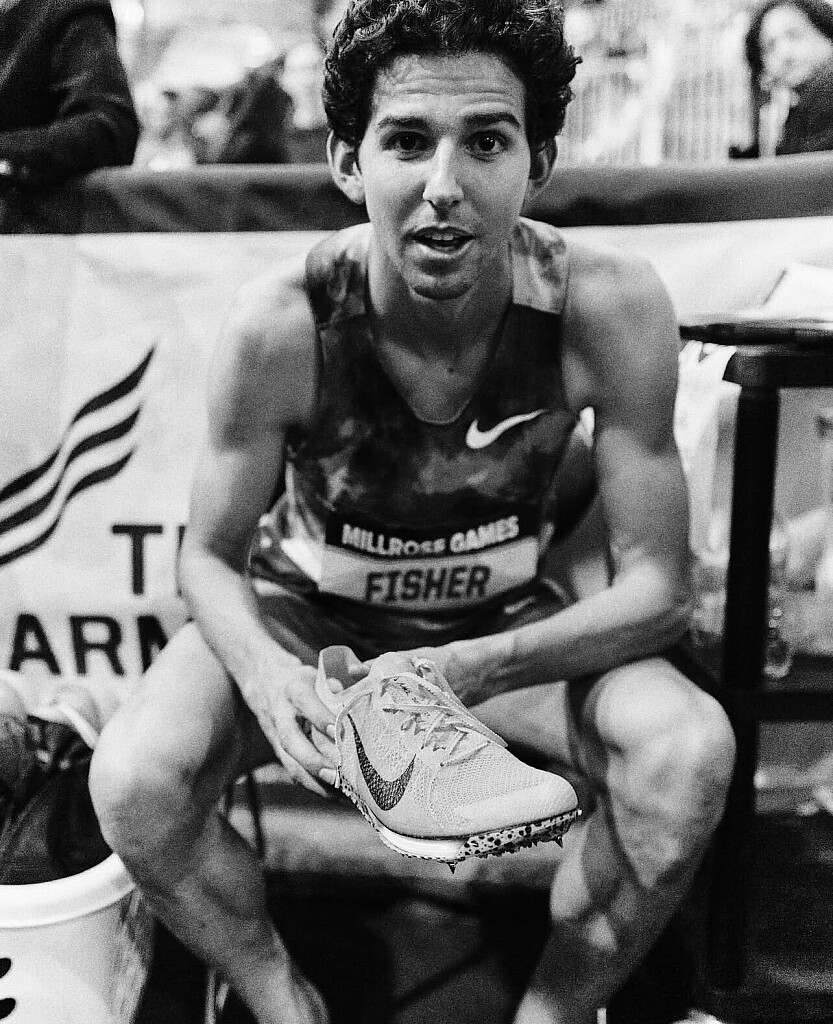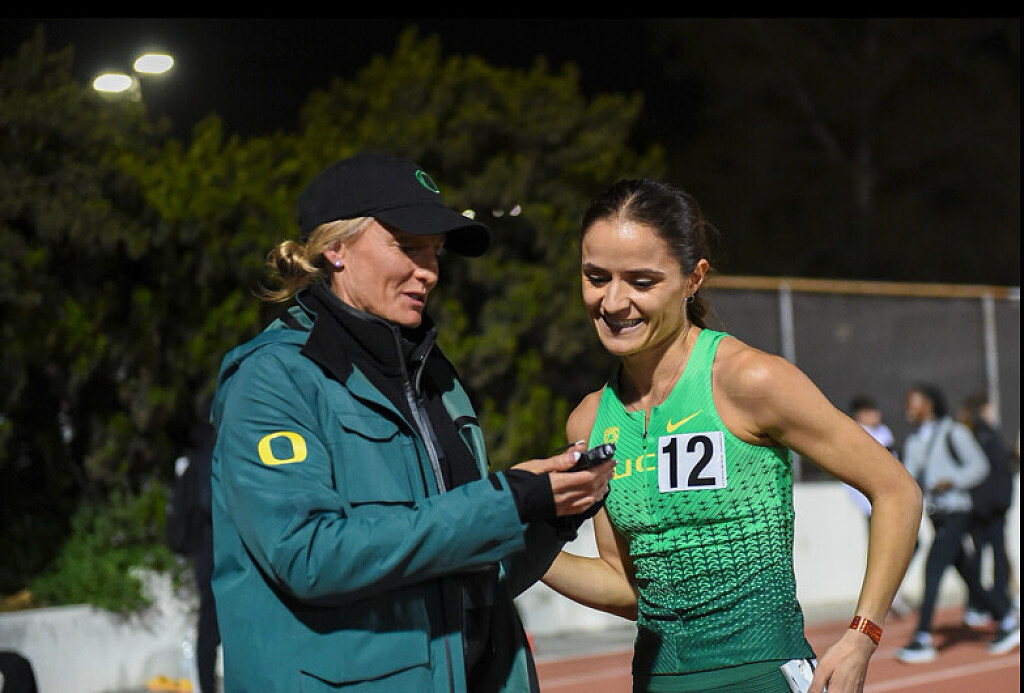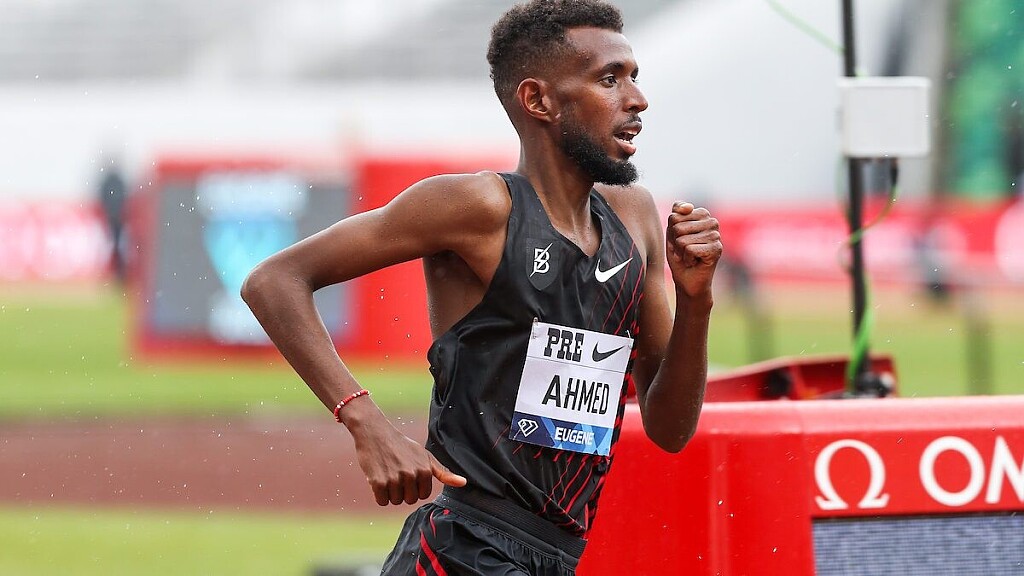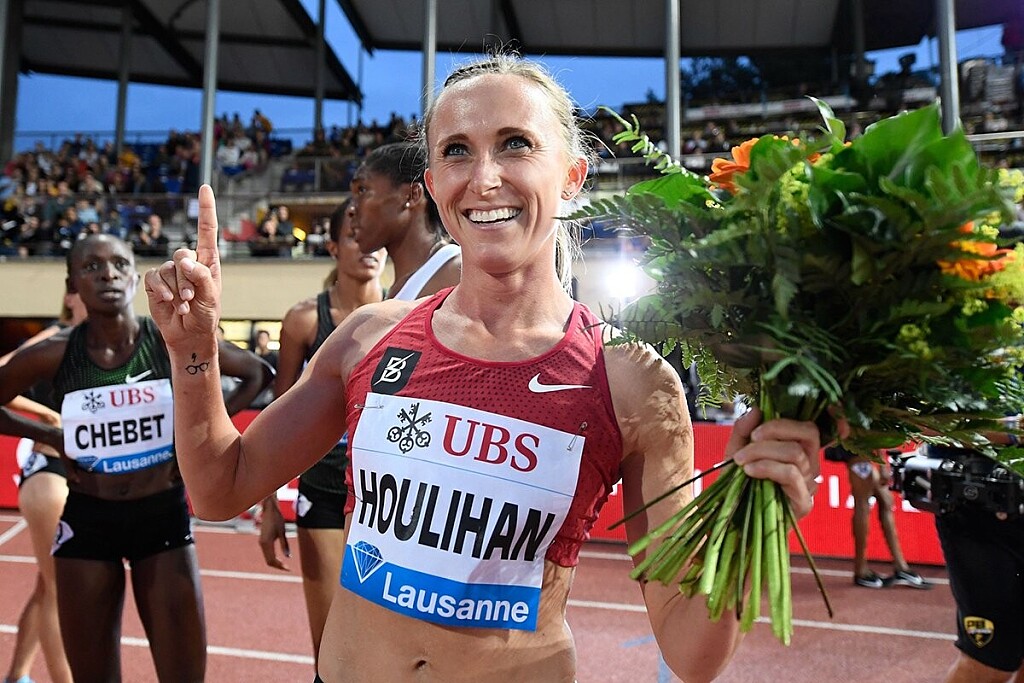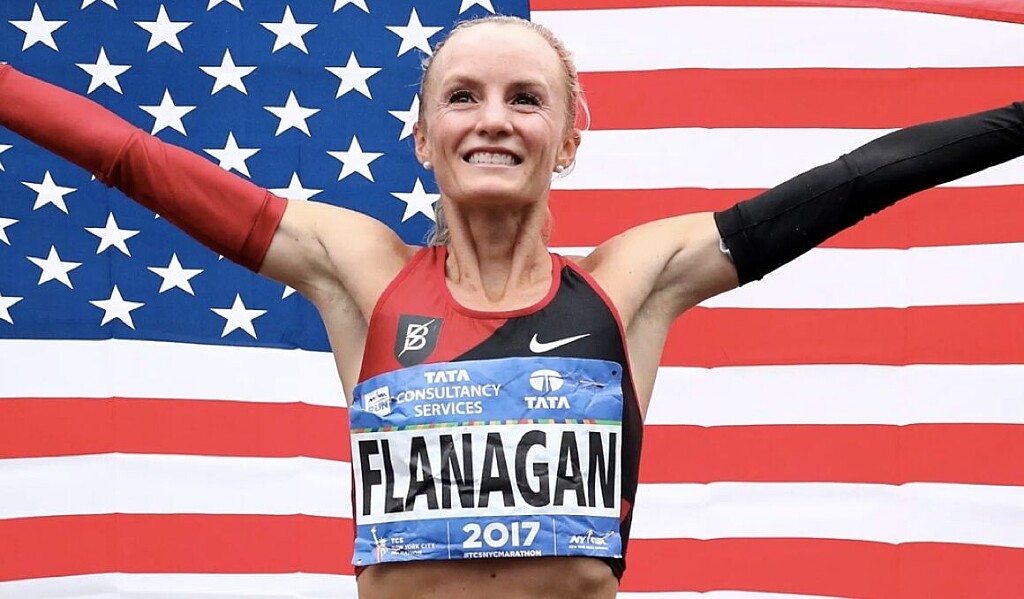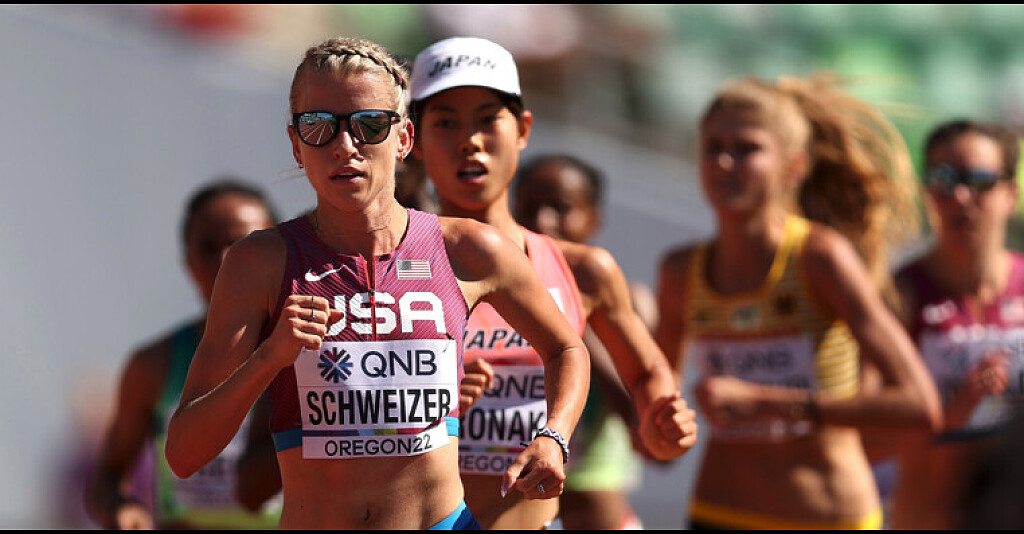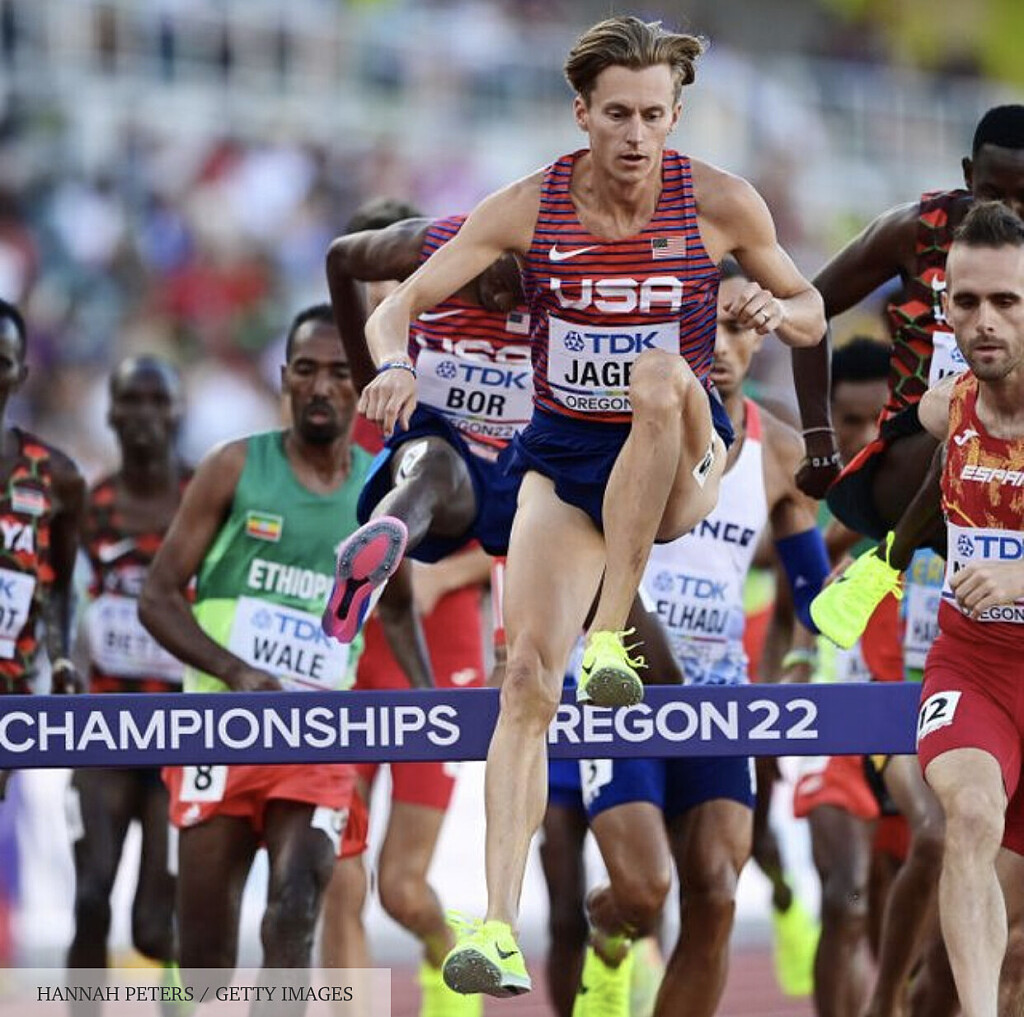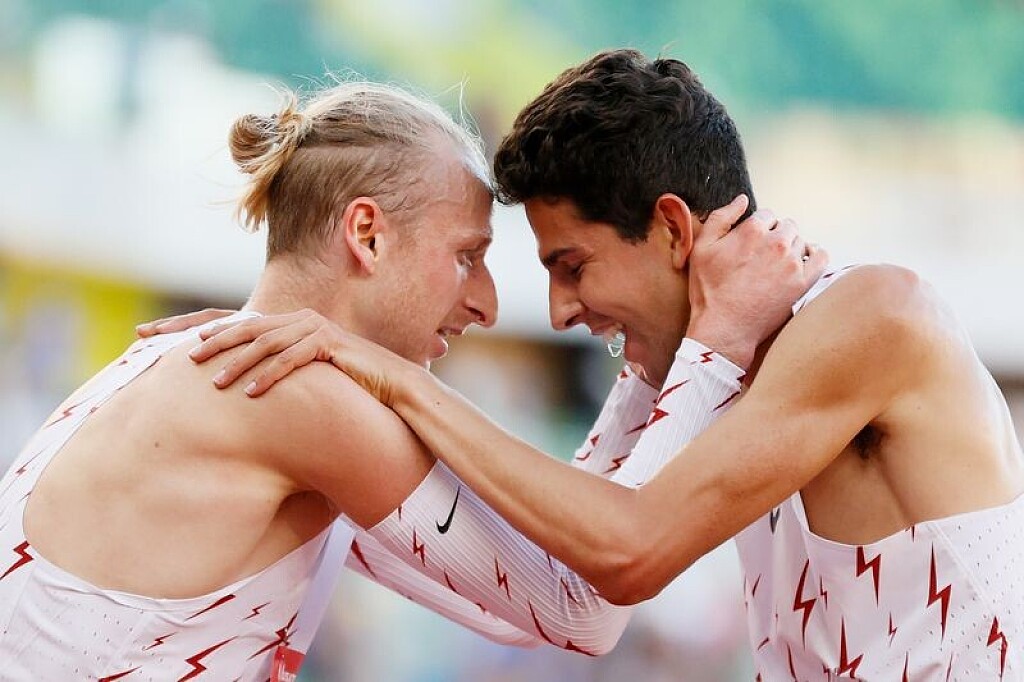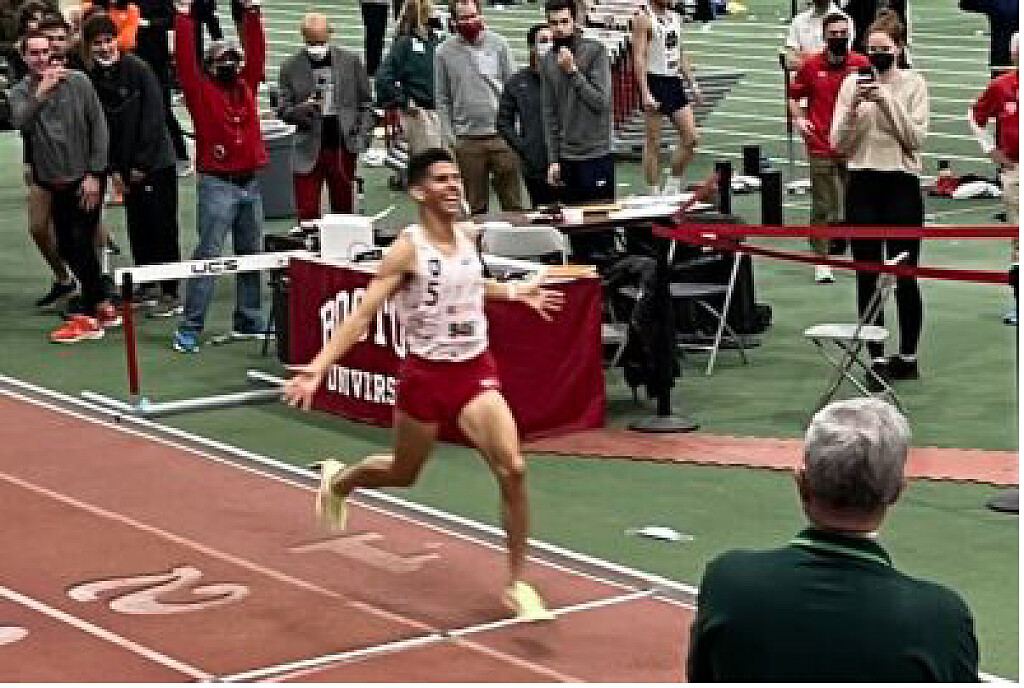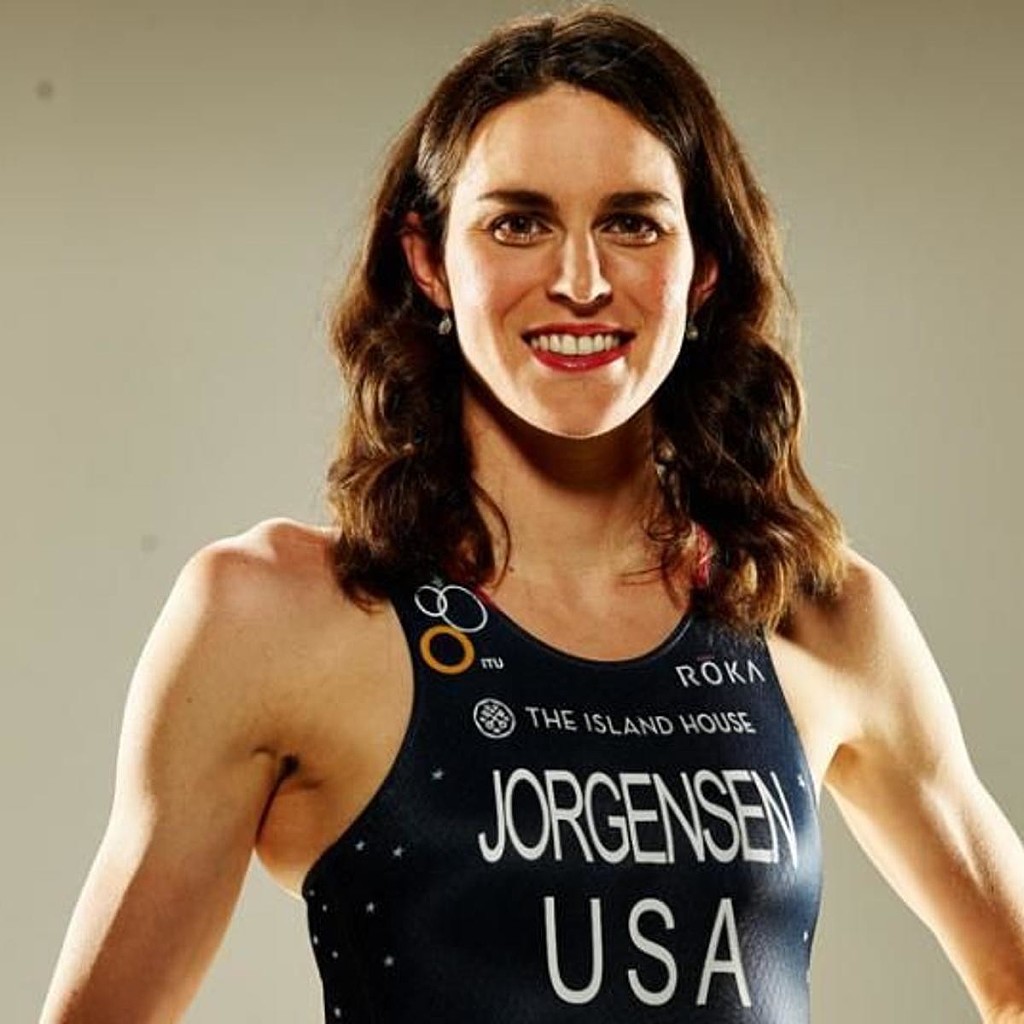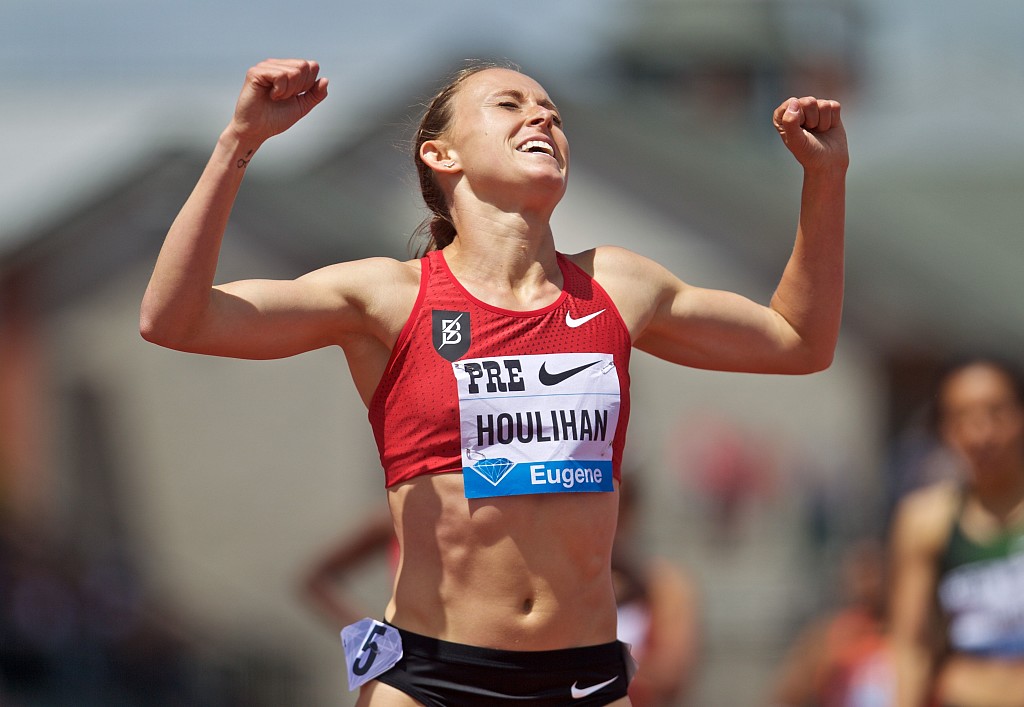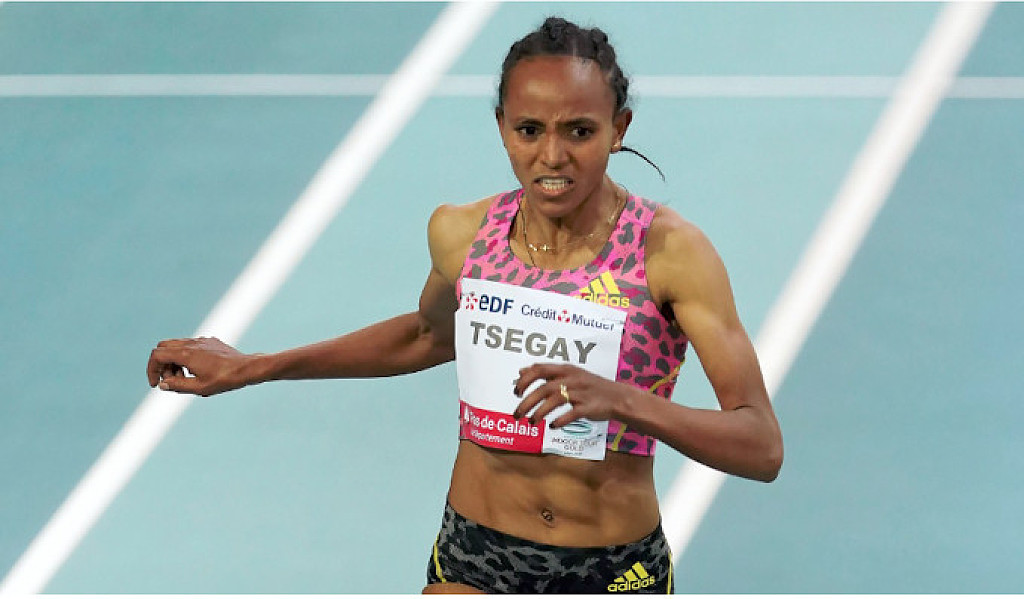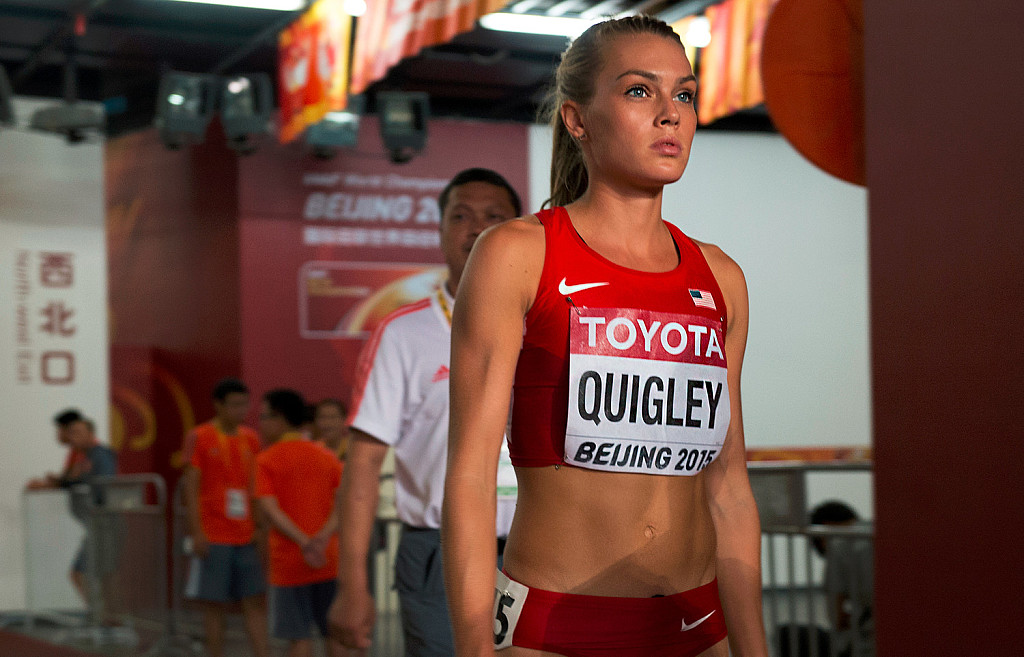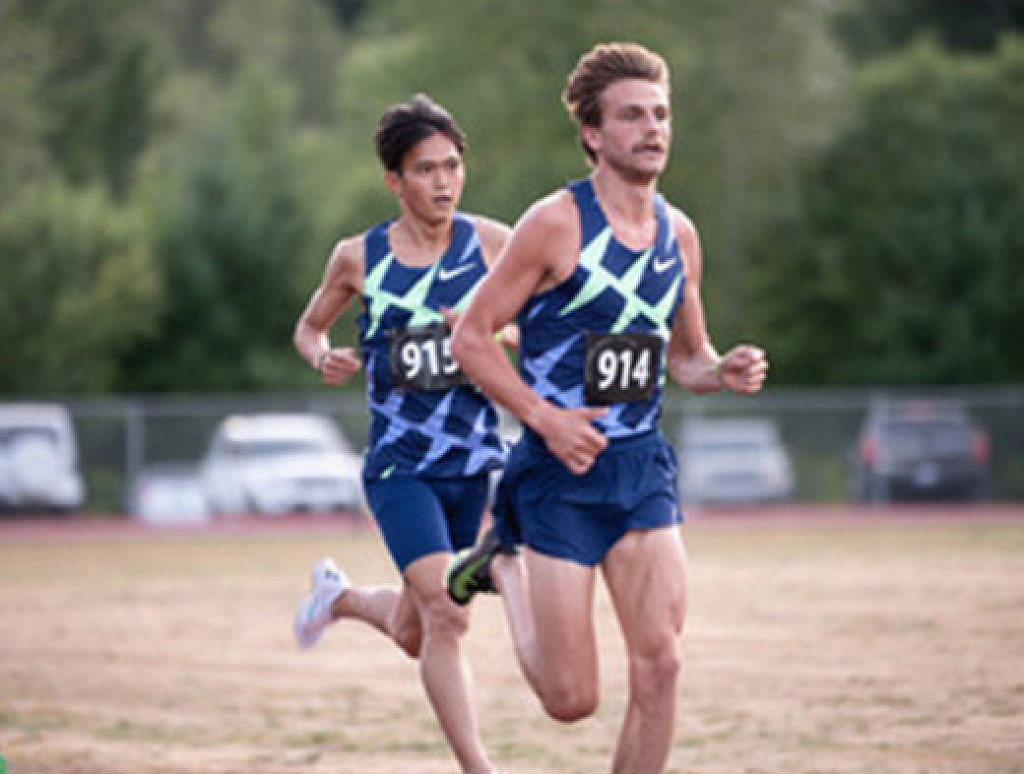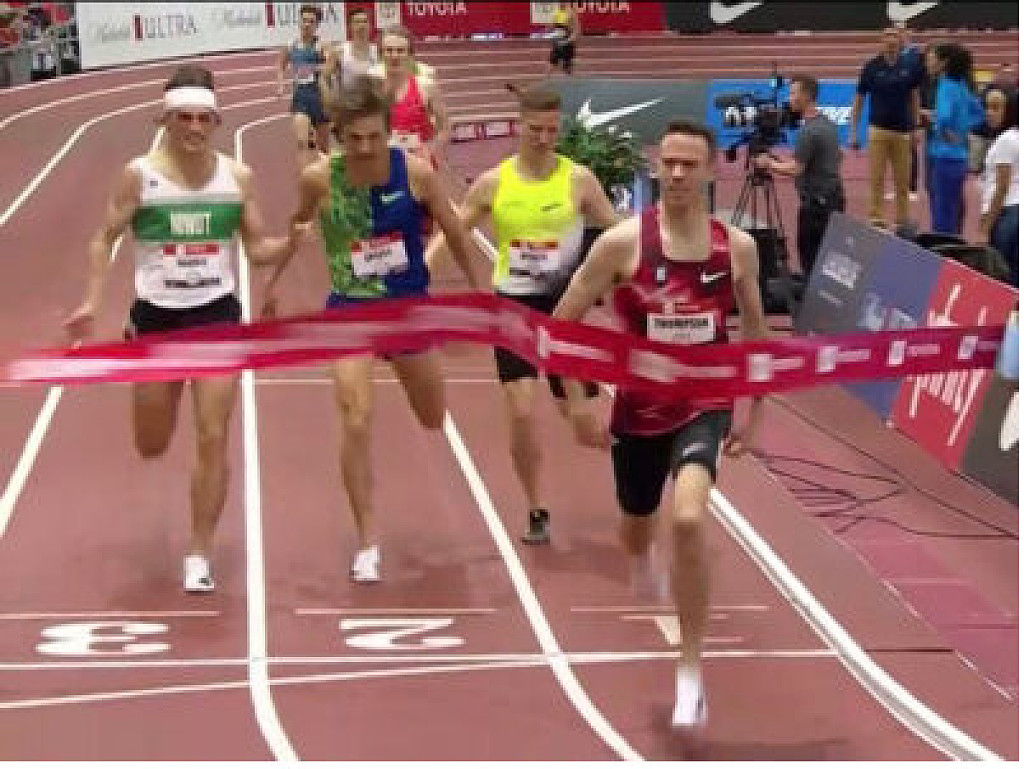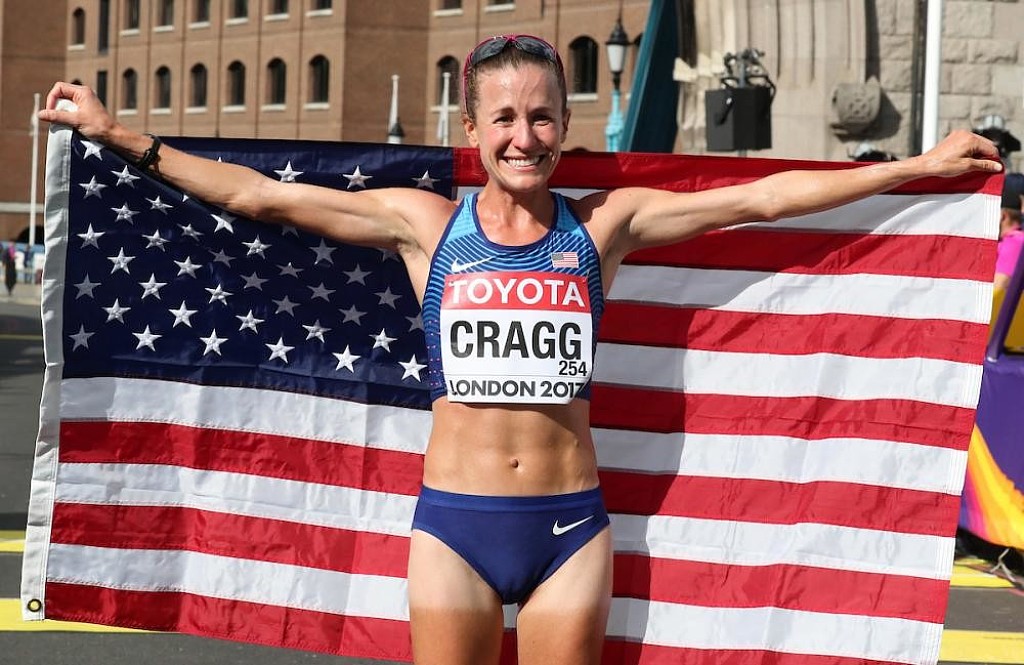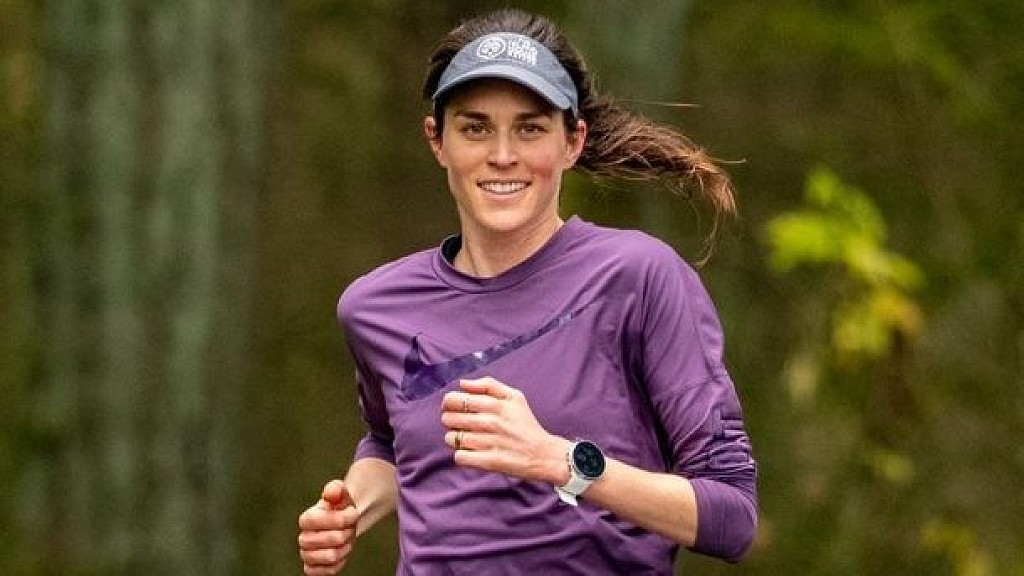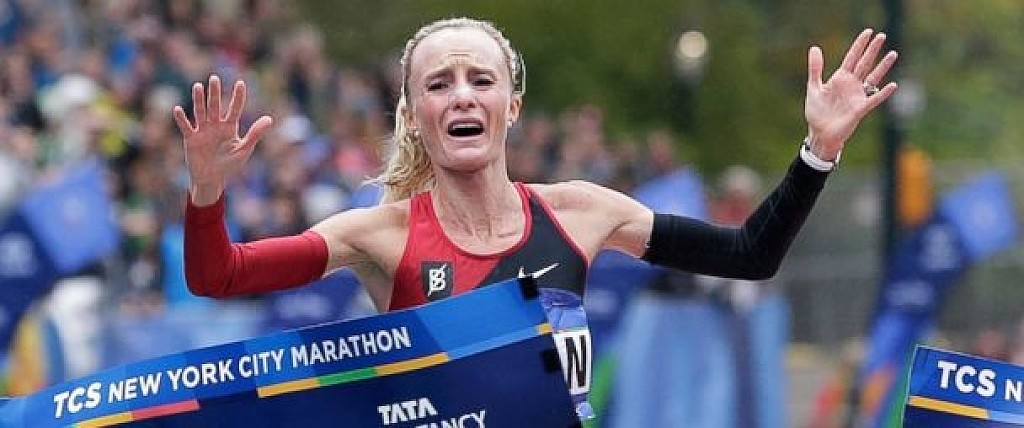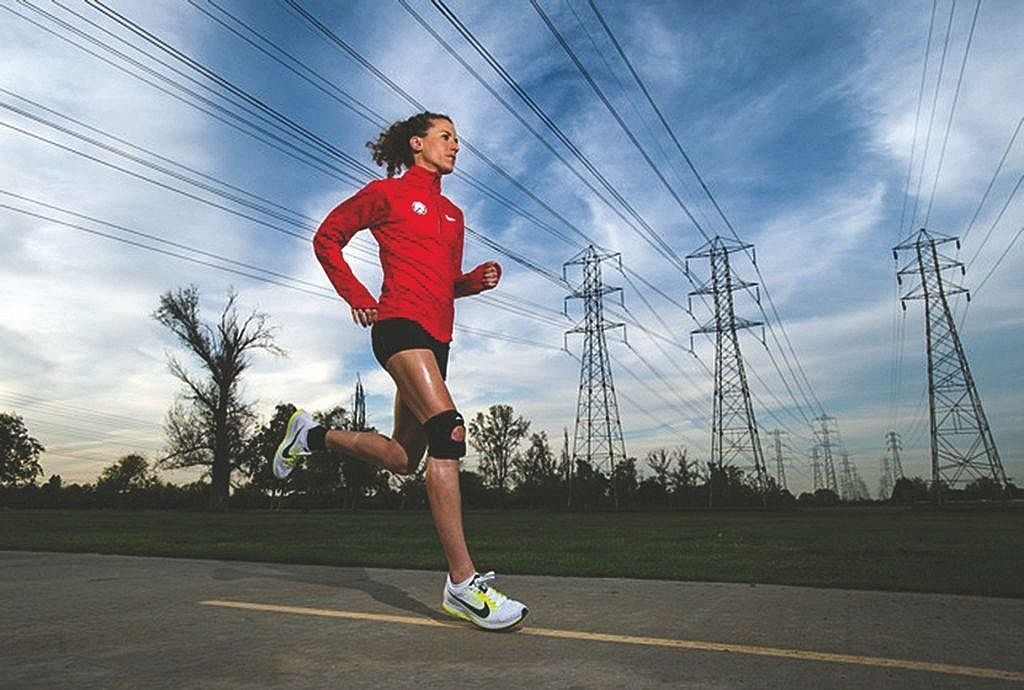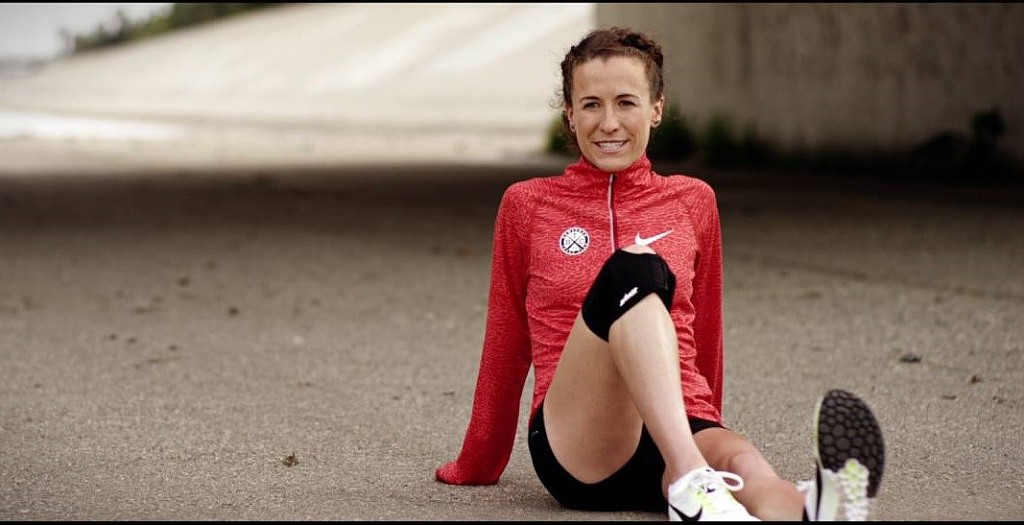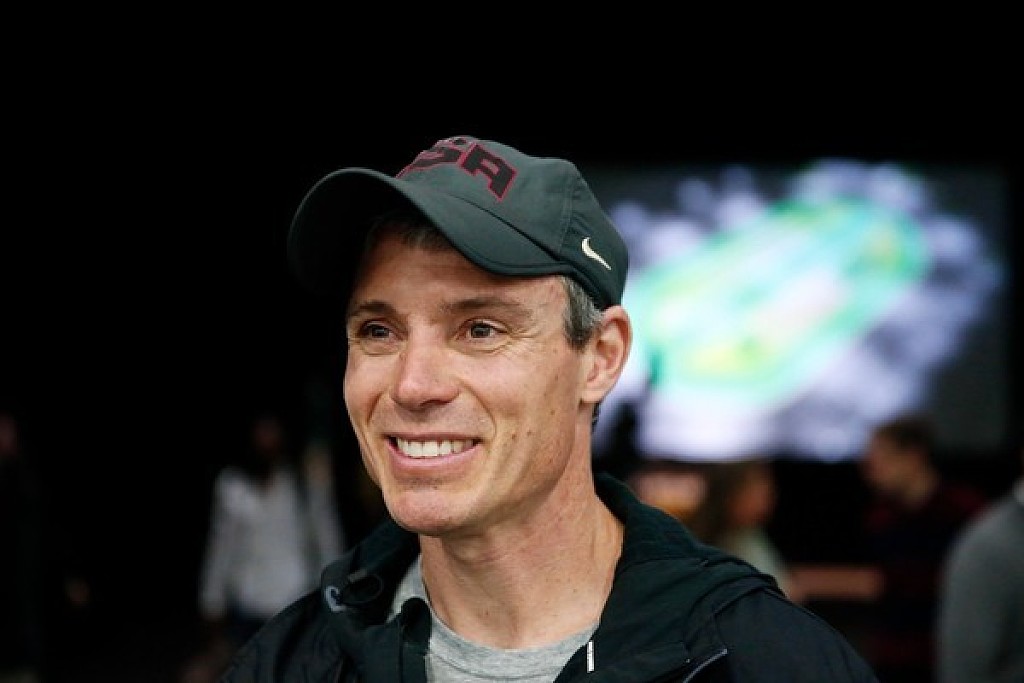Running News Daily
Running News Daily is edited by Bob Anderson. Send your news items to bob@mybestruns.com Advertising opportunities available. Train the Kenyan Way at KATA Kenya and Portugal owned and operated by Bob Anderson. Be sure to catch our movie A Long Run the movie KATA Running Camps and KATA Potato Farms - 31 now open in Kenya! https://kata.ke/
Index to Daily Posts · Sign Up For Updates · Run The World Feed
Articles tagged #Jerry Schumacher
Today's Running News
Grant Fisher: The Rise of America’s Distance Running Star and His Path to Success
Grant Fisher came within a fraction of a second of Olympic gold in the 10,000 meters at the 2024 Paris Games, narrowly missing the top spot in one of the closest finishes in the event’s history.
It had been 60 years since an American had last won the race, and sitting in the stands that day was Billy Mills, the man who pulled off that legendary upset in Tokyo in 1964. Fisher’s performance was a powerful moment that linked generations of American distance running, proving that while technology and training have evolved, the spirit of competition remains unchanged.
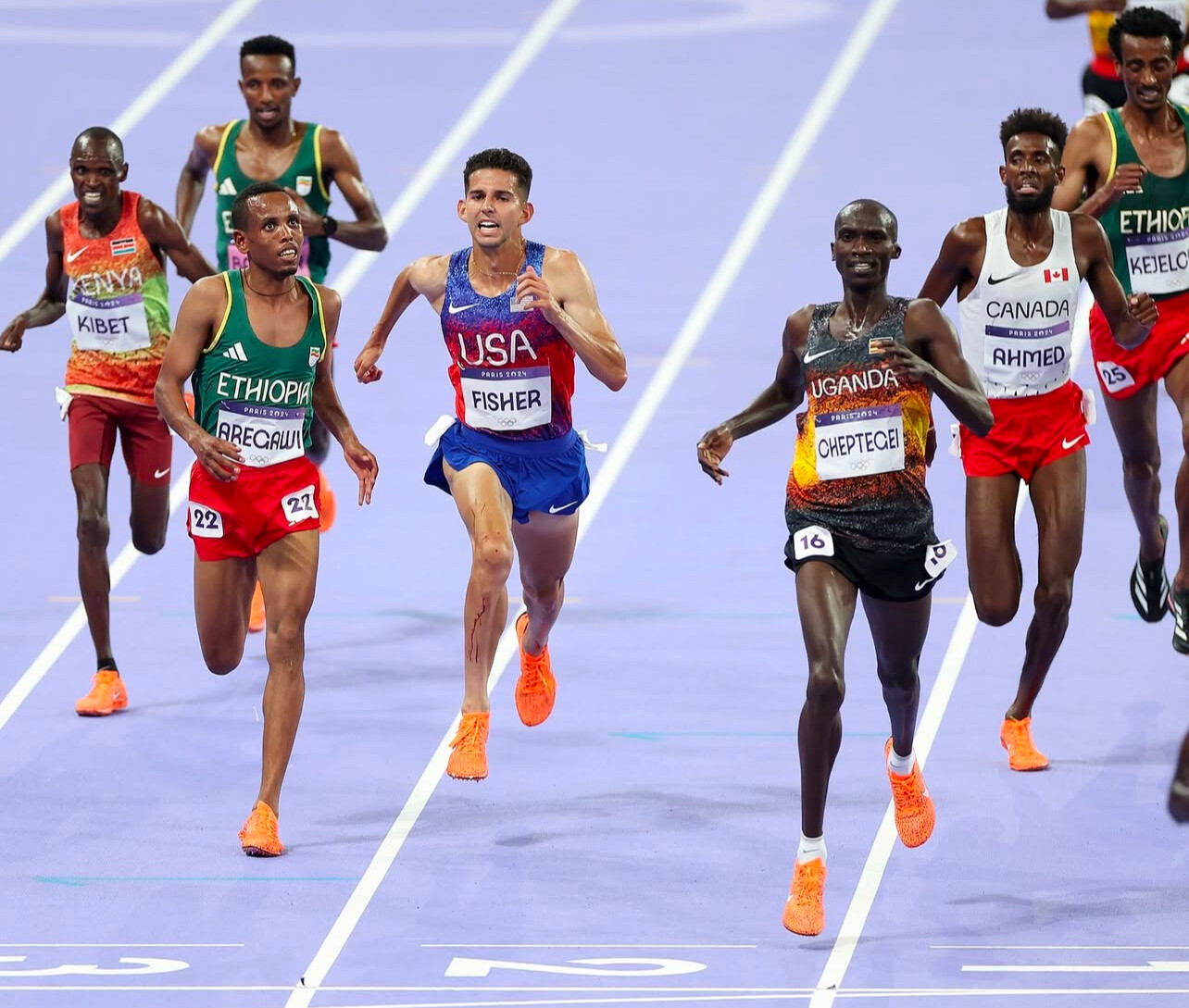
Fisher has emerged as one of the greatest distance runners in American history. He holds the world indoor record in the 3000 meters, as well as American records in the two-mile, 5000 meters, and 10,000 meters.
His performances at the 2024 Olympics—bronze medals in both the 5000 and 10,000 meters—cemented his status as a world-class athlete, making him the first American to medal in both events at the same Olympic Games.
Early Life and High School Achievements
Fisher grew up in Grand Blanc, Michigan, where he attended Grand Blanc High School. In addition to running, he was an avid soccer player and a member of the Michigan Wolves, an elite-level club team. His high school running career was marked by significant achievements, including being named Gatorade Player of the Year for cross country for the 2013–2014 and 2014–2015 seasons. On June 4, 2015, he became the seventh American high school student to run a mile under four minutes, clocking 3:59.38 at the Nike Festival of Miles.
Collegiate Success at Stanford University
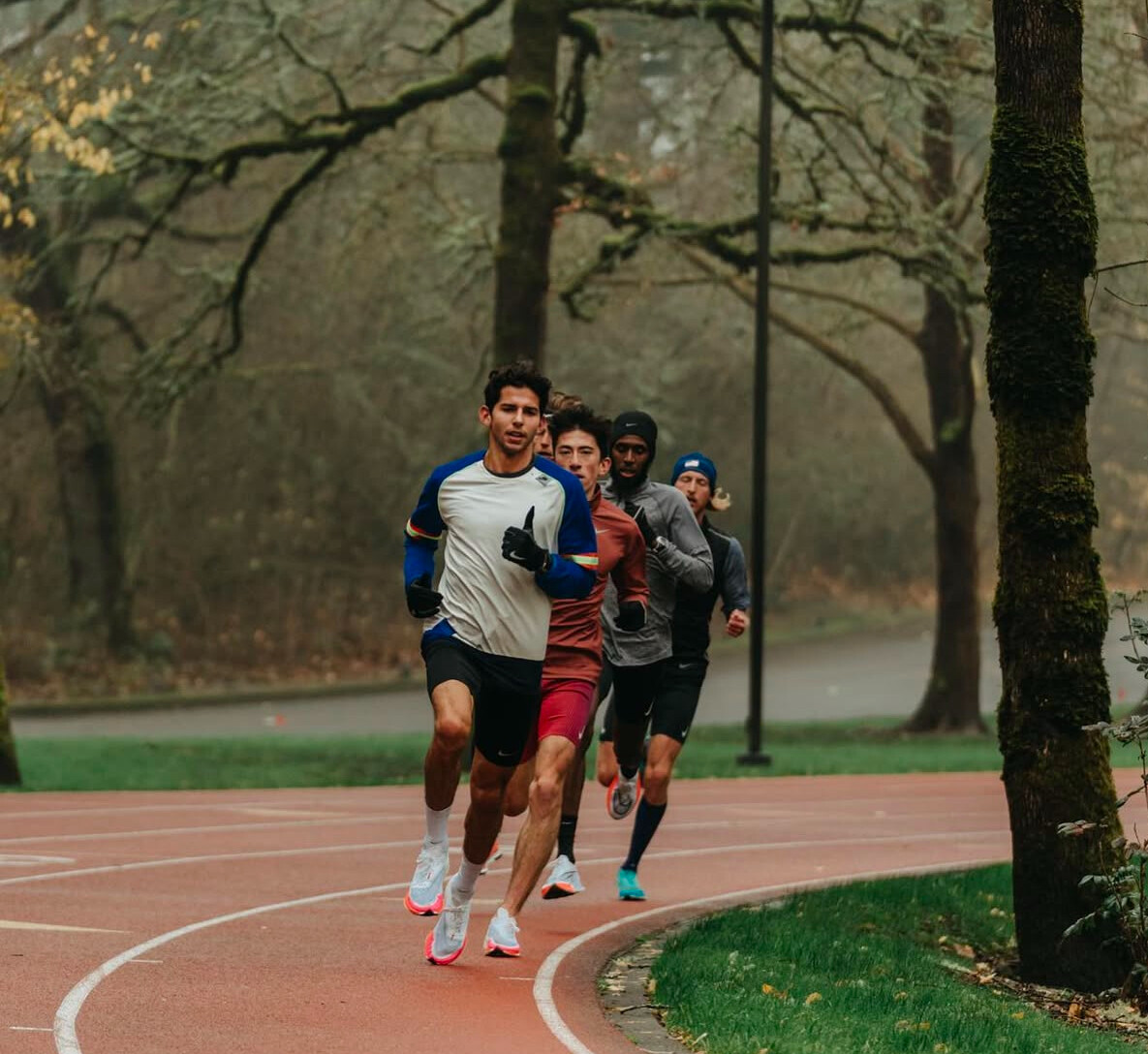
Fisher attended Stanford University, where he continued to excel in both cross country and track. He was an eleven-time All-American and won the 2017 NCAA Outdoor Track and Field 5000m championship, becoming the first American underclassman to do so in 28 years.
Transition to Professional Running
After graduating from Stanford, Fisher turned professional and joined the Bowerman Track Club, training under coach Jerry Schumacher. He continued to make significant strides in his professional career, setting personal bests and national records in various events.
Training Philosophy and Coaching
In late 2023, Fisher made a pivotal change by relocating to Park City, Utah, to train under his former high school coach, Mike Scannell. This move was aimed at optimizing his training environment, taking advantage of Park City's high altitude to enhance his physiological response to training. Fisher's training regimen focuses on threshold-type sessions, hill repeats, and long runs, with an emphasis on consistency and gradual progression.
Olympic Achievements
At the 2024 Paris Olympic Games, Fisher delivered outstanding performances:
10,000 meters: Fisher secured a bronze medal with a time of 26:43.46, narrowly missing the silver in a photo finish. This achievement made him the first American to medal in the men's 10,000 meters since Galen Rupp in 2012.
5000 meters: Fisher earned his second bronze medal, finishing in 13:15.13. He executed a strong final lap, moving from ninth to third place, showcasing his tactical acumen and finishing speed.
This race was one of the most thrilling finishes in Olympic history, with Fisher just 0.32 seconds behind Uganda’s Joshua Cheptegei, who set a new Olympic record of 26:43.14. The difference between gold and bronze was razor-thin, and it took a photo finish to determine the final placements.
Recent Achievements
On February 8, 2025, at the Millrose Games, Fisher set a new world indoor record in the 3000 meters, finishing in 7:22.91. This performance underscored his position as one of the premier distance runners globally.
Personal Bests
Grant Fisher's progression in the sport is highlighted by his impressive personal records across various distances:
1500 meters: 3:34.90 (June 9, 2024, New York, New York)
3000 meters: 7:22.91 (February 8, 2025, New York, New York) – World Indoor Record
Two-mile: 8:03.62 (February 11, 2024, New York, New York) – American Record
5000 meters: 12:46.96 (September 2, 2022, Brussels, Belgium) – North American Record
10,000 meters: 26:33.84 (March 6, 2022, San Juan Capistrano, California) – North American Record
These personal bests not only demonstrate Fisher's versatility across distances but also his continuous improvement and commitment to excellence.
Grant Fisher's journey from a high school prodigy to a world-class athlete is a testament to his dedication, strategic training choices, and adaptability. His performance in the 2024 Olympic 10,000 meters was one of the greatest ever by an American, coming within a fraction of a second of gold.
While modern advancements in track surfaces, shoes, and training have contributed to faster times, Fisher’s near-victory proved that at its core, elite distance running is still about tactical intelligence, mental strength, and raw determination—the same qualities that helped Mills secure his iconic gold in 1964.
by Boris Baron
Login to leave a comment
Grant Fisher Clocks a sub Four-Minute Mile to Conclude a 7K Workout
Grant Fisher, one of America's top distance runners, continues to showcase his exceptional fitness and race-readiness. In a recent Track workout Grant closed a demanding 7-kilometer workout with a stunning sub four-minute mile, demonstrating his world-class endurance and speed. The session, held in Chandler, Arizona, was designed to simulate race conditions, ensuring that Fisher is primed for his upcoming season opener.
A Closer Look at the Workout
The workout was structured to test Fisher’s ability to maintain a high level of performance deep into a training session. His coach, Mike Scannell, closely monitored his effort, emphasizing the of controlled fatigue management.
The workout breakdown:
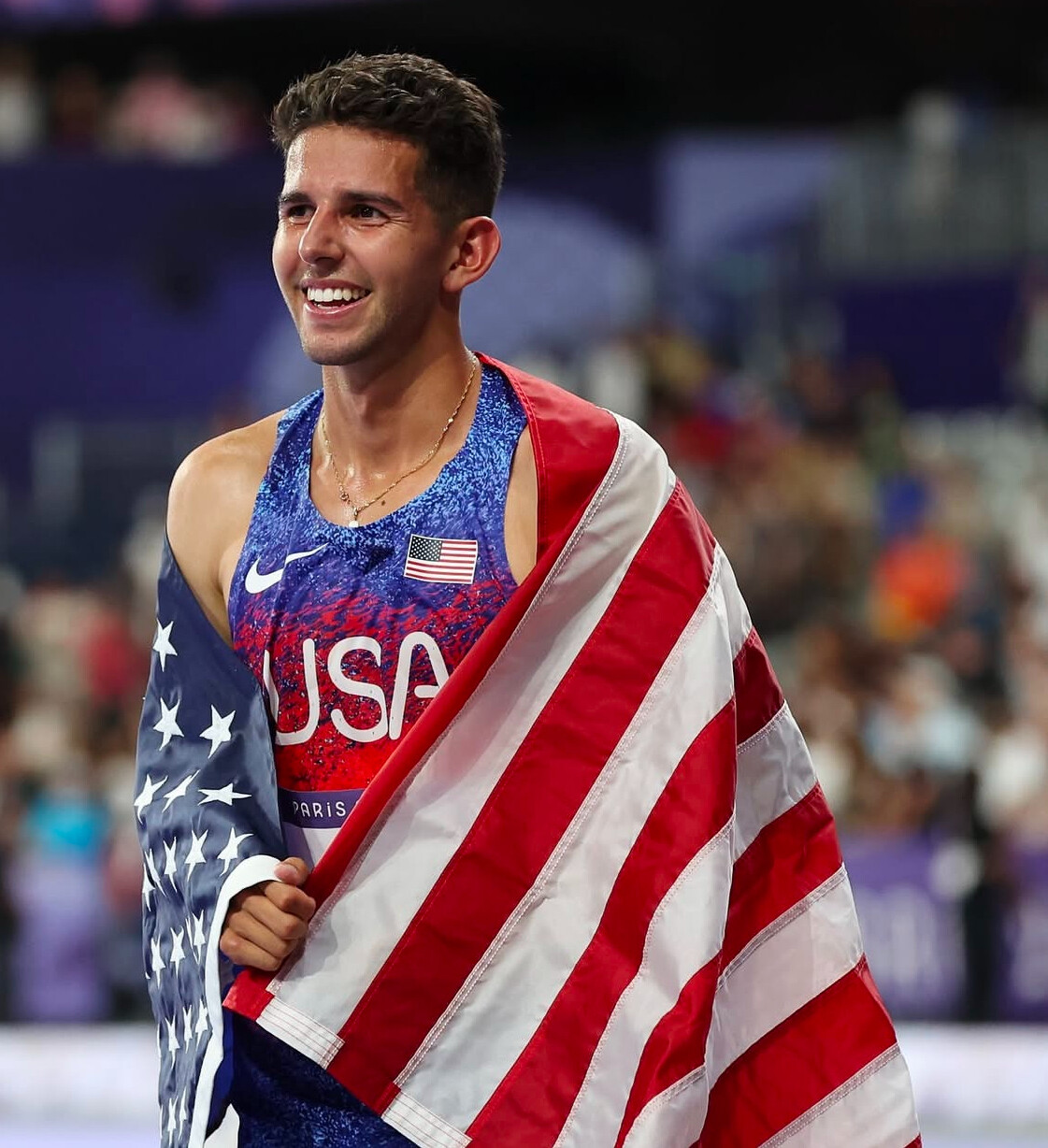
First Segment: A 2,000-meter interval, completed in 5:08.
Second Segment: Four 800-meter repeats, split in 2:06, 2:09, 2:08, and 2:08.
Final Segment: A 1,600-meter effort, where Fisher clocked an astonishing sub 4:00 mile to finish the session.
Between intervals, Fisher took controlled recovery breaks, with coach Scannell monitoring his blood lactate levels to ensure he remained within an optimal training range. Professional runner Sam Gilman assisted in pacing certain portions of the session, helping maintain consistency and push Fisher to his best effort.
A Career Defined by Breaking Barriers
Fisher’s ability to produce elite performances at the highest level is no surprise. Born on April 22, 1997, in Calgary, Alberta, and raised in Grand Blanc, Michigan, Fisher made history as a high schooler when he became the seventh U.S. prep athlete to break the four-minute mile barrier. He achieved this milestone in 2015 at the Festival of Miles in St. Louis, Missouri, clocking a 3:59.38.
After high school, Fisher attended Stanford University, where he further cemented his reputation as a distance-running star. Under coach Chris Miltenberg, he won the 2017 NCAA 5,000m title and earned 12 All-American honors. Fisher’s consistency and tactical intelligence on the track made him one of the most accomplished distance runners in Stanford history.
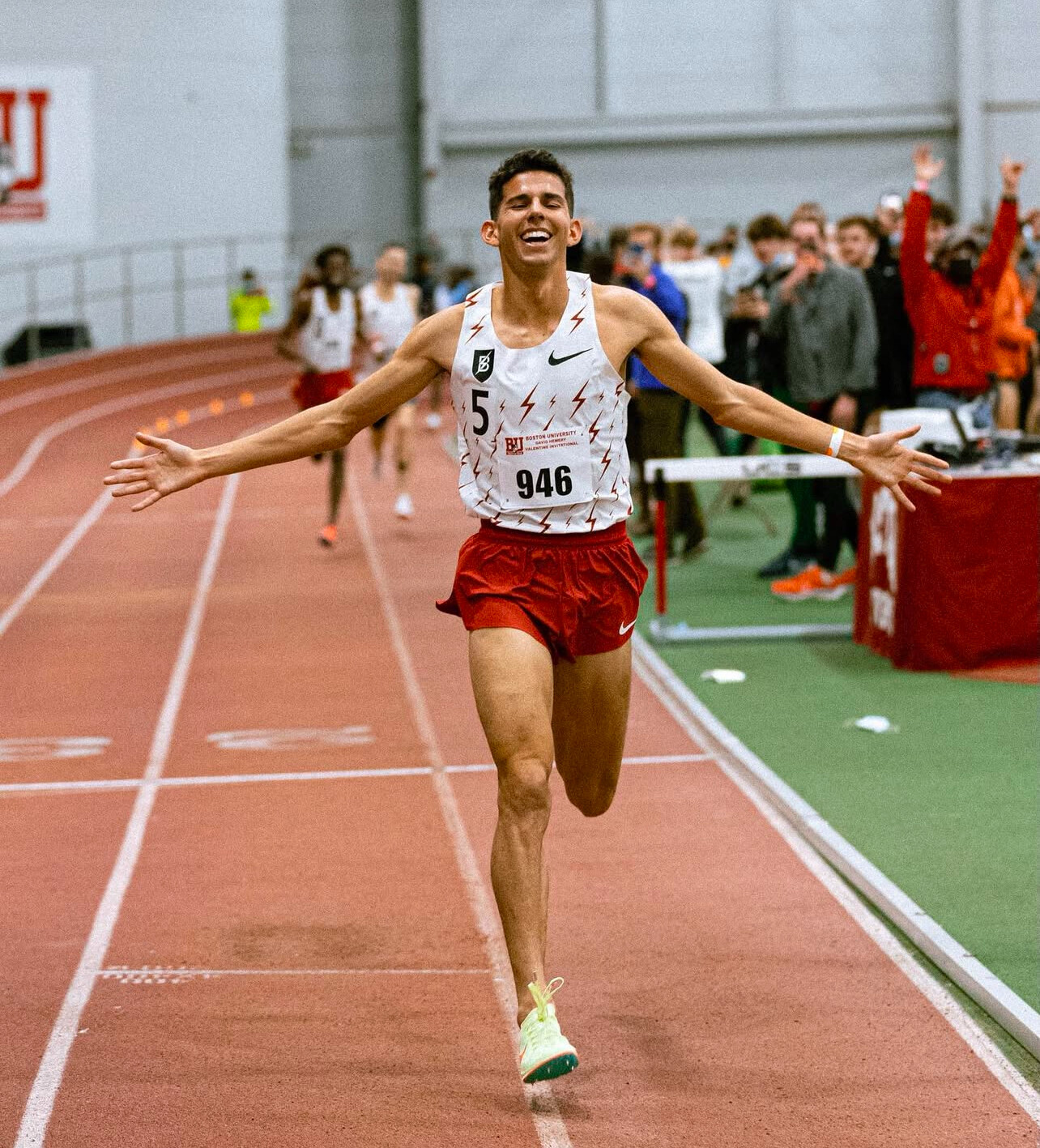
Turning professional in 2019, Fisher joined the Bowerman Track Club (BTC), training under coach Jerry Schumacher. The move propelled his career to new heights, as he set multiple American records, including:
3,000m: 7:25.47 (2023)
Two-mile: 8:03.62 (2023)
5,000m: 12:46.96 (2022)
10,000m: 26:33.84 (2022)
His performances placed him among the best distance runners in the world. At the Tokyo 2020 Olympics (held in 2021), he finished fifth in the 10,000m and ninth in the 5,000m, proving he could compete at the sport’s highest level.
Paris 2024 and Beyond
Fisher’s steady progression led to historic achievements at the 2024 Paris Olympics, where he became the first American to medal in both the 5,000m and 10,000m in the same Games, earning two bronze medals. This feat solidified his status as one of America’s greatest-ever distance runners.
As he prepares for the 2025 season, Fisher is expected to begin his campaign with a 1,500-meter race at the New Balance Indoor Grand Prix in Boston before focusing on the 3,000m and 5,000m during the indoor season. His long-term goal remains clear: to position himself as a gold medal contender at the 2028 Los Angeles Olympics.
Fisher’s ability to run a sub four-minute mile at the end of an intense workout speaks volumes about his fitness level and training discipline. As he continues to sharpen his form, fans can expect even greater performances from him in the coming months.
by Boris Baron
Login to leave a comment
Shalane Flanagan Finds Her Sweet Spot With College Coaching
She’s juggling the University of Oregon women’s distance runners, the Bowerman Track Club, and a young family.
Before she gives a new workout to her University of Oregon athletes, Shalane Flanagan will try it out herself.

During cross-country season, it was a 5-mile tempo loop. Was it too hilly? Were the turns too sharp? In April, she was “messing around at the track one day,” as she described it, when she attempted a descending ladder of mile-800-600-400 at 10K-5K-3K-1500 pace with a short jog recovery.
“Yeah, that’s really hard,” she thought to herself. “But I think if they did that twice, it would make 10K runners feel really prepared.” Her goal with the experimentation is to make sure a workout is “feasible, but not outlandish” before her runners do it.
Few distance coaches in the NCAA are doing what she does, testing hard workouts, although Flanagan, 42, is quick to say that she does not hit the same splits her athletes do. Her boss, Oregon head coach Jerry Schumacher, is not so sure. “I see her out running every now and then, holy cow, she’s flying,” he told Runner’s World, quipping that it’s too bad she’s used up her NCAA eligibility.
Fewer still have the credentials that Flanagan, a four-time Olympian, has. She was the Olympic silver medalist in the 10,000 meters in 2008 and the 2017 New York City Marathon champion. Since she retired in 2019, she stayed on as an assistant coach with the Bowerman Track Club, a Nike pro group also coached by Schumacher that she ran for in the latter stages of her career.
That experience gives her credibility with her runners. So when she tells her athletes that they’re ready to handle a workout or race a certain time, they believe her.
“I don’t like to refer back to myself a lot,” she said in an interview at her home, a large 1920s colonial about a half mile from Hayward Field. “But I’ll say, ‘Hey, I’ve had experience with this,’ and I think they know, when I’m giving them advice, it’s not a hypothetical. I’m not projecting or guessing.
“They know it’s coming from a genuine place, because I’ve lived it,” she added. “I think that can be helpful with their confidence.”
Multiple full-time jobs
Flanagan had been living near Portland, Oregon, with her husband, Steve Edwards, and toddler son, Jack, when Schumacher was hired as the head coach of Oregon in Eugene, two hours south, in the summer of 2022. He brought Flanagan on as an assistant coach, while both kept their responsibilities with the Bowerman team, which also moved to Eugene. It was a lot.
Those early days for Flanagan—getting to know 11 female distance runners on the team, developing their training, learning the ever-changing NCAA rules, recruiting—were exhausting. And that was before they adopted a second child, Grace, as a newborn, in January 2023. They had only hours notice before Grace’s arrival.
Flanagan gets childcare help for Jack, almost 4, and Grace, 1, from a variety of babysitters and her parents. Her father, Steve Flanagan, and her stepmother visit often. One time, Flanagan had some team members’ parents visiting, and she turned around to see her dad showing them her Olympic medal. “What are you doing?” she asked him. “Put that away, that’s embarrassing.”
About three months in, when Schumacher asked her how she was handling the workload, she told him she was overwhelmed. “I’m really tired,” she said, “but this is the most fun I’ve ever had professionally. Like, I really love this job. I really love college athletics.”
Schumacher gave her full autonomy to write the training for Oregon’s women. And unlike with the Bowerman program, which former runners have said did not have much variation depending on the athlete, Flanagan has personalized training at Oregon for each individual. Some athletes on her team run as little as 25 miles per week, others go as high as 75.
One cornerstone of her training is the weekly long run on Sundays, and most weeks it has some structure to it, with tempo portions or a fartlek. For most of the team, the distance ranges from 12 to 16 miles, depending on the person.
When she first arrived in Eugene, she wrote the training with ranges in mileage. Easy days, for instance, she’d have her runners do 6 to 8 miles, depending on how they felt. They didn’t like that. They wanted an exact number. Getting them to trust themselves, listen to their bodies, and know the difference between muscle soreness and a potential injury has been one of her biggest challenges.
“I have tried to instill in them that they need to learn their body,” she said. “Like, I’m not in their body—they need to take stock and learn how to read their body. It’s one of the greatest skills and assets I felt like I had [as a runner].”
Flanagan tries to run with various groups at least one day per week on their easy runs. “It’s fun to run with the coach,” said Klaudia Kazimierska, who was fourth in the 1500 meters at the NCAA outdoor championships in 2023. “She’s a great inspiration, and she was a great athlete. She tries to give us a lot of information—and she tries to show us that running is so fun.”
Flanagan finds it easier to learn about her athletes when they’re on the run instead of sitting down and looking at one another. She’ll pick up vibes about what’s going on with them and urge them to limit their social media, especially when it comes to training.
“They devour information about what everyone else is doing,” Flanagan said. “I tell them, ‘You’ve got to be careful what goes in your head.’ I don’t follow any other kids from any other programs or any other coaches. I think it would undermine my intuitiveness. I don’t want to know.”
At the same time, she finds her college athletes much more professional than she was as an undergraduate at the University of North Carolina, when she worked hard, but also focused on her classes and other parts of college life. Not these women. “If anything, I’m like, ‘Yo, you’ve got to chill out. You’ve got to dial this back,’” she said. “They’re really into their running and I don’t have to nudge or push. They are really on top of it. It’s kind of freaky.”
Mixed results
Flanagan’s approach has yielded immediate results, but some athletes have had setbacks as well.
Last year, four qualified for the NCAA outdoor championships in the distance events, from 800 to 10,000, including three who made the final in the 1500.
Early in the 2024 outdoor season, the Ducks seemed destined to have more in this year’s championship meet, which started June 5 at Hayward Field.
At the end of March, Maddy Elmore set a school record in the 5,000 meters, running 15:15.79. Two weeks later, Şilan Ayyildiz, a transfer from the University of South Carolina who had been at Oregon for only about three months, ran 15:15.84.
Ayyildiz lines up at the NCAA championships this weekend, along with Kazimierska and Mia Barnett in the 1500 meters, and a freshman steeplechaser, Katie Clute. But Elmore sustained an injury to her soleus in late April and was unable to run in the qualifying meet for NCAAs. Flanagan’s total is again four athletes at NCAAs. She had hoped to have at least one qualifier in every event distance event.
In her short tenure, she has seen how college students have to grapple with stress, classes, finals, and in some cases, anxiety. They pick up illnesses. The big result doesn’t always come at the right time—if it comes at all. “I see these things and I see how they move and handle the work, but sometimes in this season, I may not get the performance in a race,” she said. The coach is still learning.
A busy summer
Elmore might be back in time to race the Olympic Trials, which begin on June 21. Kazimierska will go home to Poland and hope to make the Polish Olympic team in the 1500 meters. As soon as the season is over, Flanagan will turn more of her attention to the Bowerman team, which currently has three women: Karissa Schweizer, Christina Aragon, and Kaylee Mitchell. The club had several departures from the men’s and women’s side after Shelby Houlihan’s doping ban in 2021 and the move to Eugene in 2022.
It’s been difficult for Flanagan to watch the turnover, especially as some of the athletes she’d trained alongside for years, like steeplechaser Courtney Frerichs, left. They’re friends.
At the same time, Flanagan understands it. She changed coaches a few times herself during her career. It would be selfish for her to expect them to stay.
“Especially at the end of a career, to eke out those last big performances, sometimes you need a change of scenery,” she said. “I actually think it’s healthy to get different training, a different stimulus. Sometimes you can fall into this monotony and it feels stale especially if you’ve been doing it for a while.”
When she heard from athletes that they were thinking of leaving Bowerman, Flanagan jumped in with suggestions.
Her coaching brain took over to help.
“At the end of the day, I want them to be successful and happy,” she said. “So when they expressed maybe needing a change, I’m like, ‘Okay, let’s work through this. What are your plans? I don’t want you to leave and aimlessly not have a plan. What does that look like, what do you want to do?’ It’s a natural evolution.”
by Runner’s World
Login to leave a comment
This historic track froze into a skating rink
The West Coast of the U.S. and Canada got hit with sub-zero temperatures over the weekend as a cold front swept through the Midwest. Northern California and Southern Oregon reported unusual seasonal lows around -5 and -10 C, resulting in extreme cold that even froze over Hayward Field at the University of Oregon, transforming one of the most well-known tracks in the world into a skating rink.
Instead of wearing spikes for their Monday morning workout, the Oregon Ducks track and field team was seen skating on the track, turning their usual practice into more of a speed-skating session.
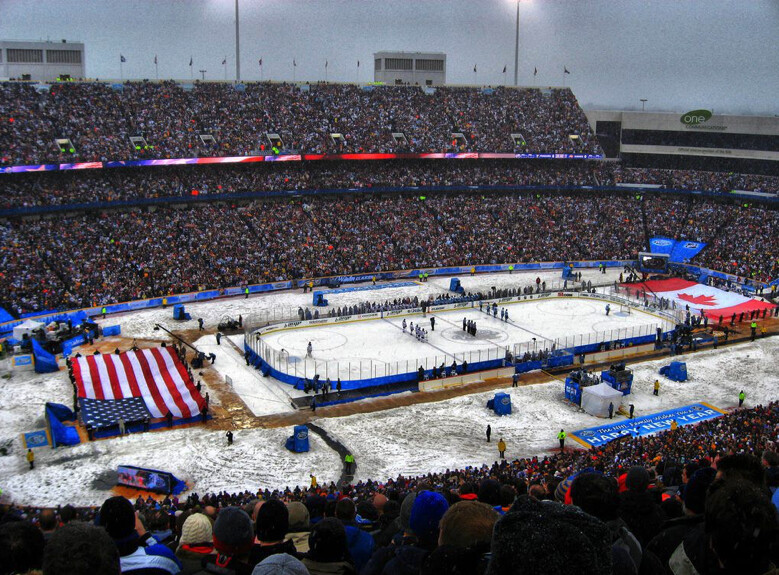

The video was posted to Oregon freshman Simeon Birnbaum’s Instagram story on Monday, where he was also seen sporting a Team Canada kit T-shirt. Although Birnbaum is from South Dakota, he has Canadian roots, having spent his early years in Alberta, where he learned to skate, according to Runnerspace. He transitioned from hockey to track in his early teenage years and is now a sub-four-minute miler with the University of Oregon track and field team under coach Jerry Schumacher.
The sight of people skating on Hayward Field has sparked a few ideas. First, envision an epic NHL Winter Classic game in that stadium. With a capacity of up to 25,000 fans and oval-shaped grandstands reminiscent of an NHL arena, the venue could provide an ideal setting and atmosphere for a game.
I know the recent Winter Classic between the Seattle Kraken and Las Vegas Golden Knights at MLB stadium T-Mobile Park in Seattle on Jan. 1 accommodated way more fans than Hayward, but let’s get NHL commissioner Gary Bettman on the phone to arrange a future Winter Classic matchup between the Seattle Kraken and L.A. Kings at Hayward.
The second idea involves Hayward Field hosting a long-track speed skating World Cup event in January or February. This cross-up between two of the most popular summer and winter Olympic events would be unreal. While I am no expert on speed skating, I would only think that having track-meet-style races could be highly entertaining, especially if wind or snow becomes a factor. Though the University of Oregon might not permit either event, it doesn’t hurt to start the buzz.
by Running Magazine
Login to leave a comment
Canadian Olympian Andrea Seccafien to debut at Tokyo Marathon
After reaching the Tokyo Olympic 5,000m final in 2021, the next two years were a whirlwind for Canadian 10,000m record holder Andrea Seccafien. The 33-year-old suffered a root meniscus tear in early 2022, then a stress fracture in 2023, and at times, contemplated calling it a career to go back to school. She felt like she was missing something and had one final box to check as a runner: the marathon.
“The plan has always been to move up to the marathon,” says Seccafien. “I will be running the Tokyo Marathon on March 3.”
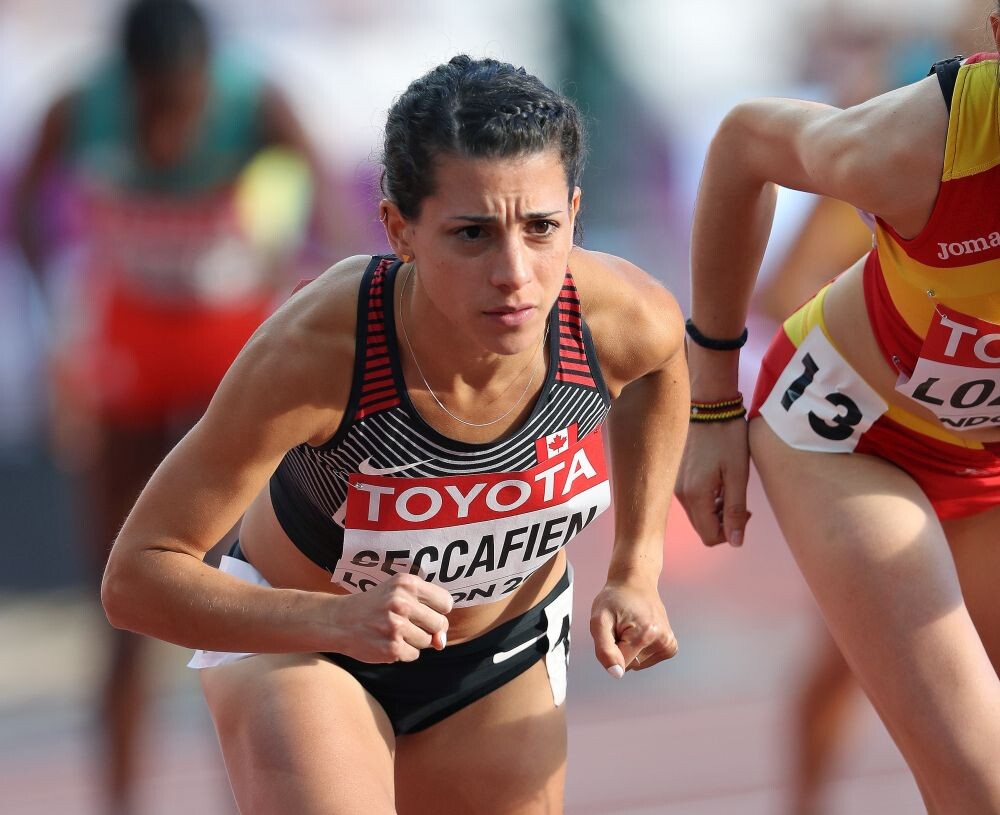
Seccafien told Canadian Running that she wants to be on the Canadian Olympic team for the marathon in Paris: “The Olympic standard [2:26:50] is the goal in Tokyo. I would not be running the marathon if my coach and I did not think it was possible.”
There were a lot of changes for Seccafien last year, who moved from Melbourne, Australia, to Portland, Ore., and back to Melbourne. She left Nike Bowerman Track Club in November 2023 after two years of training under coach Jerry Schumacher. She joined the group with fellow Canadian Lucia Stafford in November 2021 (who also subsequently left the club).
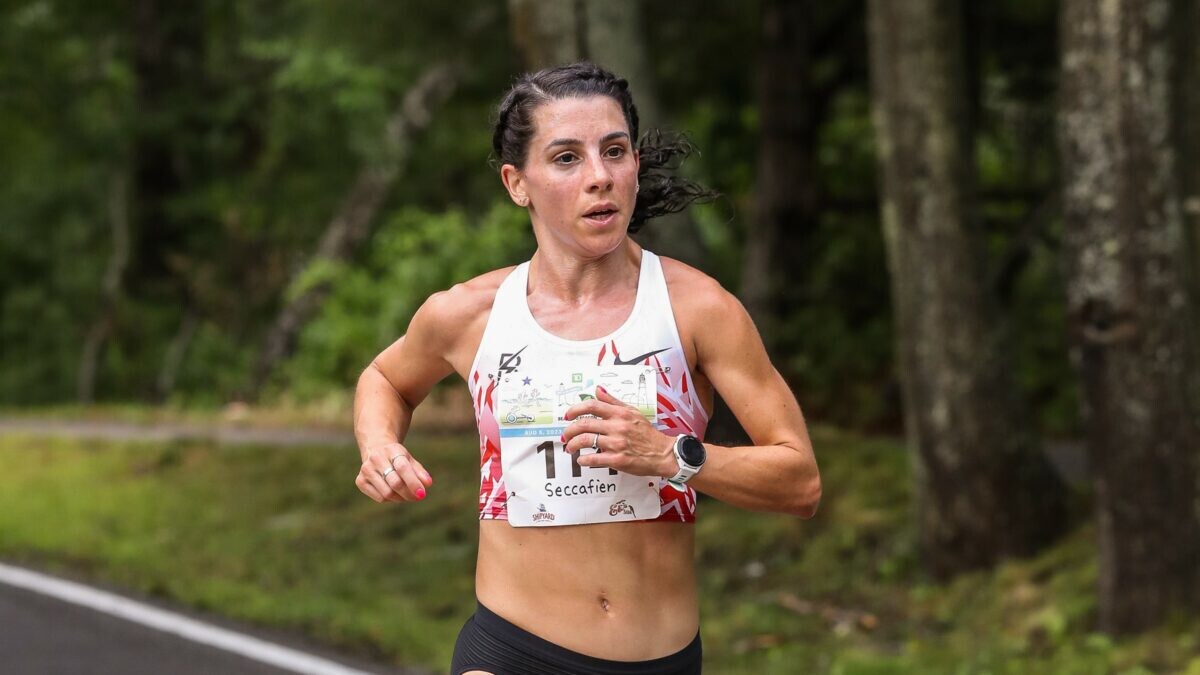
Seccafien says she left Bowerman on good terms. “It wasn’t anything with Jerry; I just did not have a community in Portland or Eugene,” she says. “My life was in Australia, and not in the U.S.” Seccafien is the ninth woman to leave Bowerman Track Club in the past two years, leaving the team with only two women on their roster, according to their website.
When asked about the downfall of the Bowerman team and the timeline around Shelby Houlihan’s doping suspension, Seccafien said that Gabriela DeBues-Stafford was the only athlete who left for that reason specifically: “No one else thought that way about Shelby,” she says. “Everyone in the club has been open with each other’s decision, and I think everyone left for many different reasons.”
“When I joined, I thought running the marathon there would work with Bowerman. Jerry doesn’t have time to coach a marathoner; you’d essentially be training on your own,” says Seccafien. Schumacher took a role with the Oregon Ducks group in Eugene, Ore. (two hours from Portland) while still coaching the Bowerman group. “It’s now a totally different environment than when I joined.”
Since returning to Melbourne, Seccafien has begun working remotely with Canadian physiologist and coach Trent Stellingwerff, who also coaches Olympians Natasha Wodak and DeBues-Stafford. “I wanted to find someone willing to coach me remotely and to give me some stability in my life again,” she says. “Trent calls the shots on mileage, and I just follow his plan. Our training is based more on intensity rather than miles.”
Seccafien says she now does most of her training on her own, with her partner, Jamie, occasionally joining her on the bike. “Like everyone, I’ve started doing double threshold workouts, and Jamie, who’s an exercise physiologist, will test my blood lactate.”
Seccafien told Canadian Running that training has not been easy. “There were a lot of lows. I felt like I had retired at times,” says Seccafien. “I could not put any load on my knee for four months to recover from my meniscus surgery… I could only swim, but could not kick my legs.”
She says it was great when she was finally able to run again, but shortly after, she got a stress fracture –another huge low. “Now, I’m just trying to stay consistent and take things as they come,” she says. Seccafien is seven weeks out from the 2024 Tokyo Marathon, where she will be in the elite field alongside Chicago and London marathon champ Sifan Hassan, whom Seccafien last ran against in the 5,000m final at the Tokyo Olympics (where Hassan won gold).
by Marley Dickinson
Login to leave a comment
Tokyo Marathon
The Tokyo Marathon is a world-renowned annual marathon held in Tokyo, Japan. As one of the prestigious Abbott World Marathon Majors, it attracts elite and amateur runners from around the globe. The race holds World Athletics Platinum Label status, recognizing its high competitive standards, top-tier organization, and international appeal. Sponsored by Tokyo Metro, the Tokyo Marathon has grown into one...
more...Moh Ahmed withdraws from Houston Half Marathon due to hamstring injury
Moh Ahmed’s debut in the half-marathon will have to wait. He has withdrawn from this Sunday’s Aramco Houston Half Marathon after suffering a hamstring injury in his final tune-up workout.
“I am regretfully withdrawing from the Aramco Houston Half Marathon. In my final tune-up workout on Wednesday, I tweaked my hamstring/hip flexor a bit, such that my coach, Jerry Schumacher, and I felt it would be unwise to line up on Sunday,” said Ahmed in a statement Thursday.
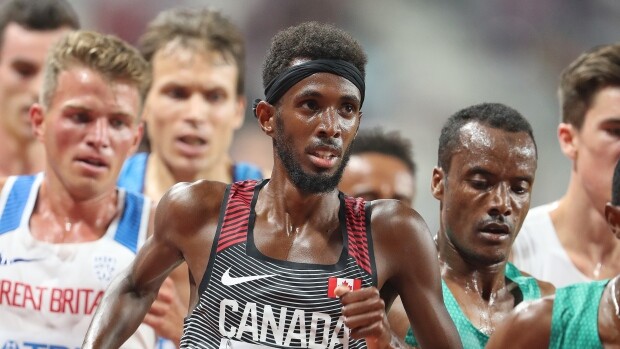
Ahmed’s half-marathon debut was highly anticipated, given his Canadian records in the 5,000m and 10,000m on the track. He is the only Canadian distance runner to have medalled in the men’s 5,000m event at an Olympic Games (Tokyo 2020).
“After a great few months of training, I was really looking forward to testing myself over the streets of Houston against a great field, but it will have to wait until next year,” said Ahmed. Outside of a few local road races and winning the Canadian men’s 10K title last year, he has not raced the 21.1 or 42.2 km distance.
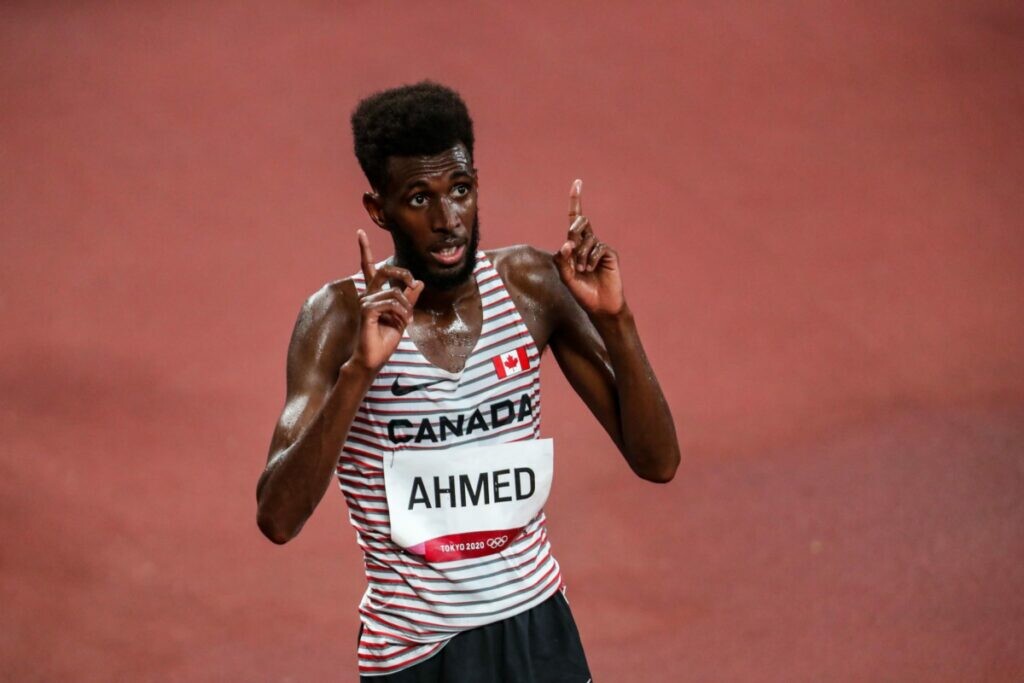
Rory Linkletter will be the lone Canadian athlete in the men’s elite half-marathon field. Linkletter is racing in Houston in preparation for the Sevilla Marathon on Feb. 18, aiming for the Olympic standard of 2:08:10. His personal best of 61:08 was set at this race in 2022 (a Canadian national record at the time). Ljnkletter’s PB is only 50 seconds behind the Canadian half marathon record of 60:18 held by Cam Levins.
Despite Ahmed’s withdrawal, there will still be a large Canadian presence in Houston. Four athletes will be chasing their Olympic dreams in the marathon. Leslie Sexton, 2016 Olympian Lanni Marchant, and Canadian marathon record holder Natasha Wodak will all have their goals on the women’s Olympic standard of 2:26:50, with two spots still open for Paris 2024.
On the men’s side, Tristan Woodfine from Cobden, Ont, returns to the marathon looking to break his personal best of 2:10:51, set three years ago at the London Marathon. The men’s Olympic standard for Paris is 2:08:10.
by Marley Dickinson
Login to leave a comment
Aramco Houston Half Marathon
The Chevron Houston Marathon provides runners with a one-of-a-kind experience in the vibrant and dynamic setting of America's fourth-largest city. Renowned for its fast, flat, and scenic single-loop course, the race has earned accolades as the "fastest winter marathon" and the "second fastest marathon overall," according to the Ultimate Guide to Marathons. It’s a perfect opportunity for both elite athletes...
more...Kara Goucher’s Book Offers Rare Insight Into Elite Athlete Contracts
Confidentiality clauses usually stop runners from talking about their endorsement deals.Kara Goucher’s memoir about her career in professional running, The Longest Race, alleges shocking behavior by her longtime coach, Alberto Salazar, and how she overcame it. But a subplot throughout the book is how much money she was earning in the sport along the way.
Goucher is open about her contract with Nike and appearance fees at races, including the New York City Marathon, the Boston Marathon, and the Great North Run in the U.K. (Nike did not respond to an email from Runner’s World seeking comment.) Even though the deals are from 10 to 20 years ago, they provide an interesting look at the business side of professional running. It’s a rare peek, too, because sponsor contracts are bound by confidentiality clauses and, in many cases, those clauses extend beyond the term of the contract.
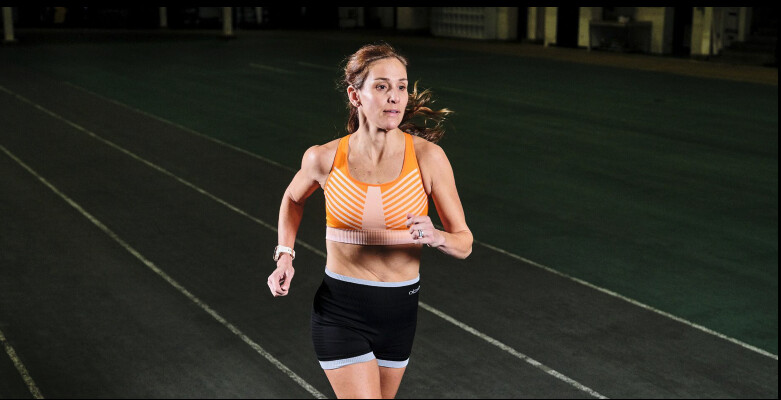
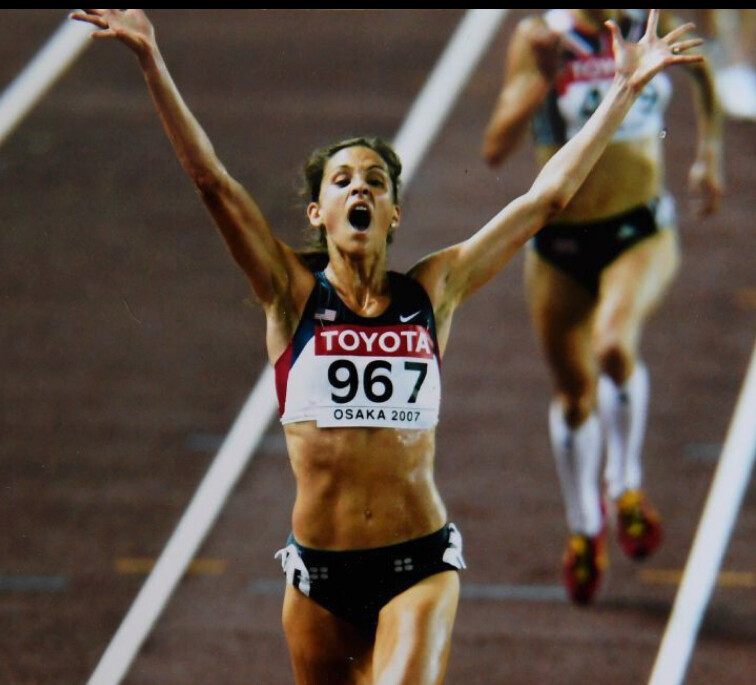
Goucher’s did, but she decided to reveal the information anyway—to be helpful to other athletes. “I just felt like it was very important to have those numbers in there,” she said in a phone call with Runner’s World. “How do you know what to ask for if you have no idea what anyone else is getting paid?” Here’s what we learned about Goucher’s pay and that of her husband, Adam Goucher, from the book:
In 2000, Adam Goucher was making a base payment of $50,000 from Fila, his first sponsor. In his first year, he ran so well that he earned $185,000 with bonuses. Goucher writes that the pay was a “welcome windfall that helped him pay off student loans.”
In 2001, Kara Goucher signed a four-year deal with Nike for $35,000 per year. This was her first professional contract after she graduated from the University of Colorado.
In 2003, Adam Goucher signed with Nike with a base pay of $90,000 per year. The Longest Race: Inside the Secret World of Abuse, Doping, and Deception on Nike's Elite Running TeamIn the fall of 2007, she ran the Great North Run, a half marathon in Newcastle, England. The race director paid her an appearance fee of $13,000 and made a deal with Goucher’s agent at the time, Peter Stubbs, to pay her $30,000 if she won. The money was “not far off the annual salary I had lived on for years,” Goucher wrote. She won the race.
In February 2008, Goucher signed a new Nike deal that paid her $325,000 per year for four years, with an option for Nike to extend to a fifth year. The contract included performance bonuses ranging from $10,000 to $500,000 for an Olympic gold medal. There were also reductions, which could cut her pay. She had to race 10 USATF-sanctioned events per year, and if she ended the year ranked lower than third in her event in the U.S. or out of the top 10 in the world, Nike could dock her pay.
Goucher told Runner’s World that, for her second shoe deal, she asked her agent to accept a commission of 8 percent for each year of the deal. The industry standard is 15 percent. He agreed. She continued to pay him 15 percent on her appearance fees and prize money. She also made sure that she was paid directly by Nike and then she paid her agent. (In most cases these days, the shoe company pays the agent, who then pays the athletes, because it’s less paperwork for the shoe company, having to deal with individual athletes.)
In November 2008, Goucher made her marathon debut at the New York City Marathon. She earned an appearance fee of $175,000. Nike also paid her bonuses paid on based on her place and time, but Goucher didn’t disclose those. She wrote, “One good marathon and I could easily walk away with more than my yearly contract salary.” In April 2009, Goucher ran the Boston Marathon, which, at the time, traditionally paid less in appearance fees to athletes than New York. (It is also the only major marathon in the U.S. in the spring.) Her appearance fee was $80,000, but when she learned another American, a male runner, was making $85,000, she asked the BAA to match that. Race organizers agreed.
In early 2010, Goucher learned she was pregnant with her son, Colt. Salazar confirmed with Nike executive John Capriotti on Goucher’s behalf that Goucher wouldn’t suffer a reduction in her pay as long as she remained “relevant,” she wrote. Her first of four quarterly payments from Nike arrived on time in January, as did her second in April. But in July, her accountant told her that her payment hadn’t arrived. Nor did her October payment.
This set off a lengthy battle between Goucher and Nike over money during her pregnancy. Ultimately, Nike docked her pay for six months and extended her contract to the end of 2013.
At the end of 2010, Adam Goucher’s contract with Nike ended.
In 2011, USA Track & Field (USATF) said it would be dropping the Gouchers’ health insurance, because her marathon ranking had dropped while she was pregnant. She appealed the decision, and the U.S. Olympic Committee stepped in and reinstated the health insurance. This rule has subsequently been changed—pregnant athletes can keep their health insurance—and today’s runners laud that change.
At the end of September 2011, Goucher left the Nike Oregon Project. She remained under contract with Nike and stayed in Portland, Oregon. Jerry Schumacher coached her, and she trained with Shalane Flanagan.
At the end of 2013, Goucher scrambled to race 10 times so Nike wouldn’t suspend her pay again. She ran a turkey trot to fulfill her obligations (and won a pie). Her contract with Nike ended at the end of the year, and she and Adam sold their house in Portland and moved to Boulder, Colorado.
In 2014, Goucher entertained contract offers from other companies, although Nike still had the option to match any offers. Saucony offered her $1 million total over 5 years, with bonuses and no reductions. Ultimately, she chose to sign with women’s clothing brand Oiselle for $20,000 per year, and a 2 percent stake in the company. She signed a separate deal for footwear with Skechers.
Today, Goucher encourages athletes to speak up and not be afraid to rock the boat, especially those who are lower-paid. She faults the secrecy around pay in track and field with creating difficult situations. It’s required to agree to the confidentiality clause in contracts in order to secure the deal, she said, and in some cases, that gives cover to companies that underpay talented athletes. The confidentiality clause “only harms the athlete and protects the brand,” she said. “Because then they can continue to pay you the least amount possible.”
Agent Hawi Keflezighi, who has never worked with Goucher, agreed with her assessment. “I think there are a lot of very bad contracts out there that footwear brands would probably be embarrassed to admit to,” he said. “There are some really bad deals out there that would probably create a backlash.”
by Runner’s World
Login to leave a comment
An Olympian, a burrito, a failed drug test: Former ASU runner Shelby Houlihan looks to rebound after doping ban
On a cloudy, characteristically cool December night in Beaverton, Oregon, Shelby Houlihan, the American record holder in the 1,500 and 5,000 meters, accompanied Courtney Frerichs, the Olympic silver medalist in the steeplechase, and Frerichs’ sister, Lindsey, to an authentic Mexican food truck near her home.
The three ordered carne asada burritos and returned to Houlihan’s house to eat and watch “The Bachelorette.”
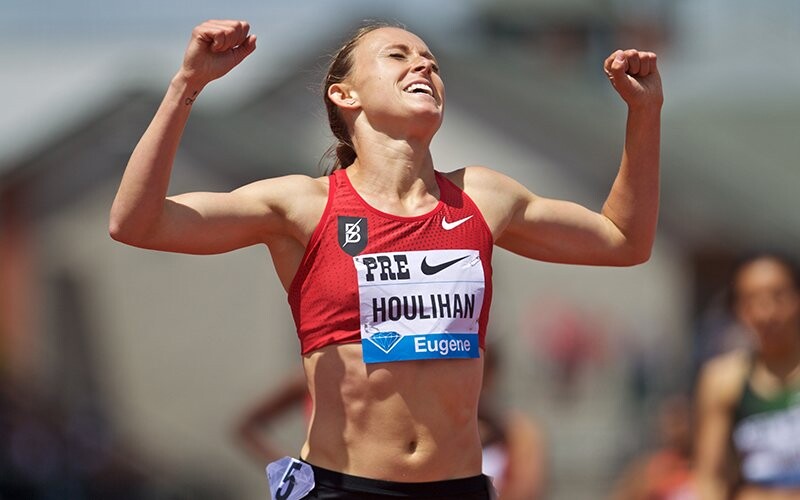
The next morning, on Dec. 15, 2020, the former Arizona State standout was given a random drug test. Weeks later, in mid-January, Houlihan was notified in an email from the Athletics Integrity Unit (AIU) that her urine sample revealed the presence of 19-norandrosterone (19-NA), a metabolite produced by the substance nandrolone – an anabolic steroid prohibited by the World Anti-Doping Agency (WADA).
She was issued a provisional suspension, which set off a cascade of events that led to a four-year ban, knocked her out of the U.S. Olympic Trials leading up to the Tokyo Olympics and will bar her from competing until January 2025 when she will be almost 32.
It is, Houlihan said, “an athlete’s worst nightmare.”
Houlihan, 29, has lost the financial support of Nike. She also saw former teammate Gabriela DeBues-Stafford leave the club rather than risk sanctions because of the Bowerman Track Club continued relationship with Houlihan.
Houlihan said her initial response to the positive test was “shock and disbelief.” She wondered, “How am I going to explain (the presence of a banned substance) when I don’t even know where it came from myself?”
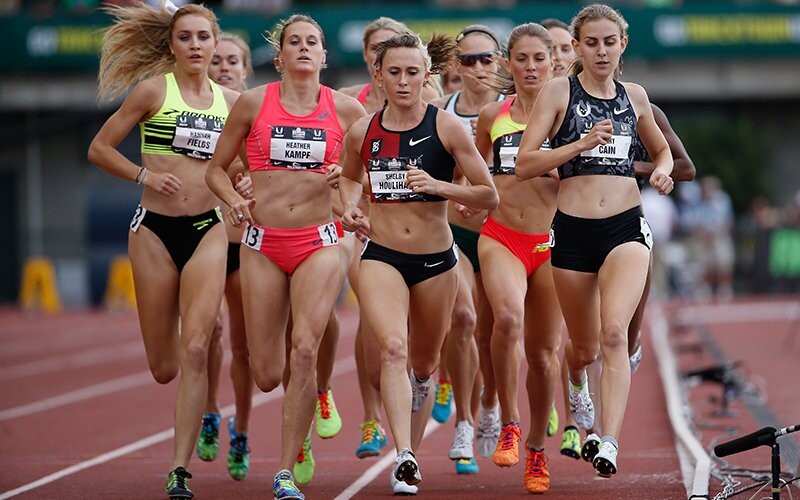
Houlihan was at a high-altitude training camp in Flagstaff when she received the email.
“I opened up my phone to an email that was urgent, confidential and … it was this lab report of scientific words that I could not read,” Houlihan told Cronkite News.
The Sioux City, Iowa, native said she read the email over about 10 times and had to Google which substance triggered the positive test, because she had never heard of nandrolone.
Then she called Jerry Schumacher, her coach at BTC, the professional Nike club that Houlihan had trained with since graduating from ASU in 2015.
“I’m just sobbing and trying to tell him what’s going on, but crying too hard,” Houlihan said.
The long road
Today, Houlihan lives alone in Portland and said she has relied on her former BTC teammates, her boyfriend and her family for support. She does odd jobs, including food delivery, and continues to train with the hope of returning to competition at an elite level.
It is not a situation she envisioned growing up in Sioux City, Iowa, surrounded by runners, including her mother, Connie, and her uncle, Bob Prince, who competed in college.
After winning several state titles at Sioux City East High School, Houlihan continued her success at Arizona State, where she won the NCAA 1,500 meters in 2014 and finished as a 12-time All-American, the second-most in program history.
She holds five school records: the outdoor 800 and 1,500 meters, and the indoor 800, mile and 3,000.
That success set the stage for 2016 Summer Olympics, where she finished 11th in the 5,000 meters and was the highest-placing U.S. runner in the race.
She also finished fourth in the 1,500 meters and set the American record at the 2019 World Outdoor Championships.
More Olympic success felt inevitable.
Shock and disbelief
Elise Cranny, a close friend and former Bowerman teammate of Houlihan’s, remembers that news of the positive test “didn’t really sink in” at first.
“I came back to the house, and I was like, ‘Man, something is very off … something is not right,’” said Cranny, who was living with Houlihan during the camp. “I think the initial reaction from everyone was disbelief, and like, ‘Oh, this is something that’s going to get figured out’ because it’s seriously wrong.”
Schumacher and Houlihan called attorney Paul Greene to “just try to figure out a game plan” and investigate further what could have happened.
The first step was a pregnancy test because nandrolone can be found in pregnant women. After she determined she wasn’t pregnant, Houlihan compiled a log of everything she ate the week before the test. She scoured text messages, bank statements, food receipts and iPhone locations to determine everything she had consumed.
“I was able to piece it together pretty well,” Houlihan said. “And then, ultimately, we just felt like the food truck the night before had to be the most likely source.”
Houlihan wouldn’t name the establishment that served her the burrito because she doesn’t “want to mess with any lawsuit.” However, she isn’t blaming the food truck.
“I don’t think they did anything wrong,” Houlihan said. “I think it just kind of happened.”
While Houlihan and her BTC teammates frequently ate at that food truck, she recalls that she received her order more quickly than usual, and the foil-wrapped burrito was unlabeled.
Houlihan believes she may have been mistakenly given a burrito containing offal (pig organ meat), which can contain nandrolone.
She remembers the meat in the burrito being finely chopped and that grease pooled in the foil. She said it seemed more rich than the burritos she had eaten there before, so much so that she was unable to finish it despite being very hungry after eating little else that day.
“We knew (nandrolone) can be found in pig offal, and we knew that I ate at a food truck that served pig offal 10 hours before (the test),” she said. “And we knew that when you ingest it, it can be at its highest levels 10 hours after ingestion, and that’s the exact kind of time frame that I had eaten that.
“And so as unlikely as all of those things were, it just seemed like the only thing that we could say, ‘All right, this makes some sense,’ and that’s really the only thing that we had to go on.”
Houlihan was the only one among the three who ate at the food truck who was tested.
A search for answers
She provided a hair sample that was examined by a toxicologist and it showed no trace of nandrolone. She also passed a polygraph examination that concluded she was not lying when asked if, at any time, she knowingly or intentionally ingested nandrolone.
Houlihan’s urine tests taken Nov. 22, 2020, Jan. 23, 2021, and Feb. 4, 2021– before and after the positive test – all were negative. She also had her vitamins and supplements analyzed by a lab.
The previous urine tests and the lab report convinced Houlihan that it’s unlikely the positive result was triggered by a supplement or vitamin she was taking. She is still being randomly tested and all of her ensuing tests have come back clean.
She believes that given “the information that we have right now, (the burrito) is the only thing that kind of makes any type of logical sense.”
Houlihan hired a private investigator to trace its sources of meat, but the effort was unsuccessful.
The private investigator found that the food truck owner purchased 30 pounds of pork stomach in a frozen batch from Iowa Beef Processors in September of 2020. However, the owner had no box or label from the meat used in December that could be traced to its processing plant.
And the investigator couldn’t determine whether the owner used pork from a castrated or uncastrated boar. Houlihan’s attorney argued it must have been uncastrated boar meat that triggered her positive test.
When the AIU officially charged Houlihan four months later, the U.S. Olympic Trials, scheduled for June 18-27, were fast approaching. Houlihan decided to go straight to the Swiss-based Court of Arbitration for Sport (CAS) to avoid missing the trials.
The CAS rejected Houlihan’s explanation of what happened and banned her from the sport for four years on June 11, 2021.
Houlihan’s ban lasts until Jan. 13, 2025. She missed last summer’s Tokyo Olympics, the 2022 World Athletics Championships in Oregon, and she’ll miss next year’s World Athletics Championships in Budapest and the 2024 Paris Olympics.
The CAS’s three-member panel found that Houlihan’s “explanation that the 19-NA in her sample resulted from her consumption of the meat of an uncastrated boar simply cannot be accepted. The explanation presupposes a cascade of factual and scientific improbabilities, which means that its composite probability is (very) close to zero.”
Lacking evidence
The panel said that Houlihan failed to prove that the burrito she ate contained boar offal.
“First, the athlete would have had to have been served pork at the food truck despite ordering beef,” the court said. “Second, the pork consumed would not have been ‘normal’ pork product ordered by the food truck, but uncastrated boar. Third, uncastrated boar enters the food chain through completely different channels than pork.”
The panel said that the polygraph result and Houlihan’s hair sample were not “sufficient for the Athlete to rebut the presumption that the ADRV (anti-doping rule violation) was intentional.”
The court also said the concentration of nandrolone in Houlihan’s urine was “2-3 times higher than the highest values reported in the scientific literature after the ingestion of much more significant quantities of meat of mature (uncastrated) boar.”
On June 14, 2021, Houlihan publicly announced she tested positive for nandrolone and would not be competing at the upcoming Olympic Trials. Because Houlihan hadn’t been racing, many thought she was battling injuries instead of serving a provisional suspension.
“And at the end of the day, the panel didn’t think it was probable enough, which is unfortunate,” Houlihan said. “But yeah, I mean, that’s the only thing that we really have as an explanation. I hope at some point, maybe some more information pops up, and maybe it’s something else entirely. I don’t know. But it would be great to have an answer at some point.”
In May, Houlihan appealed the suspension to the Swiss Federal Tribunal.
She lost. It was her last opportunity.
The hardest part to watch, Crany said, “is her getting renewed hope through the appeal process or through different things, and then seeing her kind of have that life back in her eyes again, just for it to come crashing down.”
At one point, Houlihan was offered a reduced sentence – a three-year ban instead of four years – if she admitted guilt.
She refused.
“I never even considered that to be an option, because I knew I didn’t take (nandrolone) intentionally,” Houlihan said. “And I wasn’t going to admit to something that I didn’t do. At least I fought for myself and tried to do the right thing. But taking accountability for something that I didn’t do, it’s definitely not on the table for me.”
Houlihan thinks the system is flawed because the doping agency never had to prove she took a banned substance.
“There was obviously something in my system and I understand that I have a responsibility for what’s in my body,” Houlihan said. “But I think knowing that I never intentionally put it there and (I’m) still having to serve a four-year ban is definitely a flaw in the system. I don’t feel like they did their due diligence in trying to figure out what the truth was. It was just at the end of the day I couldn’t, beyond a reasonable doubt, prove where it came from.”
Houlihan said she believes the burden of proof should be shifted and “split 50-50 between the doping agency and the athlete.” While she believes that she should have to prove what triggered the positive test, she also believes the doping agency should have to prove that she intentionally cheated.
“Just even the playing field a little bit,” Houlihan said. “If you’ve ingested something, it’s almost impossible to try to figure out where that is. Because you’re getting notified a month or two later, I don’t have the source anymore. So it’s just a really impossible task to try to figure out. And I think it’s pretty flawed that if you can’t figure it out, it’s just an automatic four-year ban, and you’re treated like a doper.”
A new normal
Houlihan’s life today includes strong family and friend support.
Cranny said she had a lot of conversations with BTC teammates to make sure Houlihan felt supported.
“What you initially think of is her mental health and someone’s life being completely ripped out from under them and not being able to do what you love to do and what she feels like she’s been born and made to do,” Cranny said. “In the beginning, you worry about her being by herself, and making sure that she has people around her and she feels supported.”
Shelby’s mother, Connie Houlihan, who lives in Phoenix, said she is worried about the mental toll on her daughter.
“You’re afraid of suicide,” Connie Houlihan said. “You know, everything’s a possibility … with depression and with something that critical that they took away from her. You don’t know. Of course, you’re scared to death.”
Connie said a couple of Shelby’s sisters went to be with Shelby right away because they didn’t want her alone. Shelby wouldn’t let her parents come visit, however, because, Connie said, “she was so overcome.”
“I think, if we would have flown there right away, she would have … this is the way she explained it to me, ‘That it would have made it all too real.’
“She was really struggling dealing with it,” Connie said. “She was crying all the time. But I think that was the hardest part for us that we couldn’t just jump on a plane and go and be with her because we respected her decision.”
Chloe Houlihan, one of Shelby’s five sisters, said her sister remained “very resilient through everything.” She said she has tried to be someone Shelby “can talk to when she’s kind of struggling.”
Shelby no longer trains with her BTC teammates, something which Chloe said has been difficult and “a little bit isolating” for her sister.
Until May, Houlihan was paying Schumacher to coach her as an independent athlete, but she confirmed she’s now training entirely by herself – using six years of past training logs as a reference.
“We just felt it was best to maybe cut ties for a little bit,” Houlihan said. “I think there was just a lot of publicity going on around me and him still working together. There was just a lot of scrutiny, I think.”
Some of that publicity and scrutiny was fueled by DeBues-Stafford’s decision to leave BTC because of Houlihan.
A two-time Canadian Olympian who placed fifth in the 1,500 at the Tokyo Olympics, DeBues-Stafford announced in April she left BTC due to Houlihan’s continued ban involvement with BTC at the time.
“Fundamentally, I left the Bowerman Track Club because, despite my best efforts, I was unable to verify that the club was not in violation of World Athletics anti-doping regulations,” DeBues-Stafford said in an interview conducted via email.
DeBues-Stafford was concerned that Houlihan was working out “under the guidance of” the three BTC coaches (Schumacher, Shalane Flanagan and Pascal Dobert) at the same location and times that other BTC athletes were working out while under the supervision of the same coaches.
“While we never did a rep together, there was still what felt to me like an unnecessarily risky proximity between both men’s and women’s teams and an athlete serving a ban,” DeBues-Stafford said.
According to DeBues-Stafford, Houlihan would also use the private gym – built at Schumacher’s residence for BTC athletes to use – at the same time BTC athletes were there under staff supervision.
“Shelby would drive to the Nike campus up to four times a week at the team’s regular time and the starting point for our regular daily runs together so she could run with us,” DeBues-Stafford said. “If she arrived before us, she would wait for BTC athletes at the meeting spot to see if any BTC athletes arrived so she could run with us. These sometimes included long runs. She also ran with the team on a regular basis at altitude camp in Flagstaff.”
Houlihan said she and her attorney inquired about the rules of her ban and were told that she couldn’t go to any practices or work out with anyone on the team, but if she happened to bump into them and they were running at the same place, then she could run with them.
“My attempts to discuss my concerns with team staff were rebuffed, as were the earlier and more sustained efforts of other teammates,” DeBues-Stafford said.
BTC did not receive independent legal advice on the issue, DeBues-Stafford said. She also said Houlihan shared accommodations with a full-time member of BTC staff during the Flagstaff camp, and those accommodations were used for organized BTC athlete support activities.
“When I asked if Shelby’s lawyer had explicitly asked the AIU about her using the same gym as BTC and about how to handle the altitude trip, I did not get a clear response,” DeBues-Stafford said.
DeBues-Stafford said she “independently sought answers,” and reached out to an anti-doping organization to verify that BTC’s collective behavior was within the rules and that there was no liability on anyone other than Houlihan.
According to DeBues-Stafford, “the anti-doping organization could not guarantee that the actions of BTC and Shelby did not constitute a violation, and could not guarantee that other athletes and support staff couldn’t face repercussions either.”
She said the anti-doping agency cited two rules in the World Anti-Doping code and advised her to leave BTC and submit an official anonymous tip to the AIU.
A trying time
While Schumacher and some of Houlihan’s other teammates knew about her positive test in January of 2021, DeBues-Stafford did not learn about Houlihan’s positive test until a couple of days before the team publicly announced the ban about six months later.
“Learning this news in mid-June almost derailed my Olympics,” DeBues-Stafford wrote in an Instagram post in April. “It was a small miracle that I showed up in Tokyo in shape to run sub-four (minutes) twice in 48 hours and place fifth.”
Houlihan said she was “surprised” and felt “blindsided and hurt and confused” by DeBues-Stafford’s social media posts because DeBues-Stafford had not told her about her concerns.
“I never knew that that was a problem for her,” Houlihan said. “And I’m not sure why she didn’t reach out to me. I reached out to her after I read her posts.”
Houlihan said she apologized to DeBues-Stafford for being affected by her situation.
“I think she just felt like she didn’t want to add to what I was going through by bringing it to me, which I don’t agree with, personally,” Houlihan said. “I felt like I would have rather had that conversation with her and I would have been more than glad to try to help that situation for her in any way, instead of what ended up happening. I think that was a lot worse – what ended up happening – than her just coming and talking to me about it.”
DeBues-Stafford has since moved to Victoria, B.C. and is now coached by Trent and Hilary Stellingwerff.
“When I told Jerry (Schumacher) I was leaving BTC due to the lack of separation between Shelby and the group, he asked if I really wanted to leave, given he was thinking of possibly no longer coaching Shelby if she lost her appeal at the Swiss Federal Tribunal,” Debues-Stafford said.
Debues-Stafford said Houlihan was still driving to the Nike campus and running with BTC when Debues-Stafford left Portland on March 31.
“Growing fear over the team potentially breaking rules, coupled with frustration at the lack of action by the team left me in an awful and unsustainable headspace,” DeBues-Stafford said. “I left altitude camp early at the end of February to get some breathing space and made my decision to leave the team.”
A powerful influence
Cranny said she misses running with Houlihan and credits her for pushing her to succeed.
“I think of her all the time when I’m racing now,” Cranny said. “She’s a huge reason why I feel like I am where I am right now in my own running. She just really opened my eyes to the importance of not limiting yourself and putting yourself in it.”
Although BTC could look a lot different, Houlihan would still like to eventually come back to the group once her ban is up.
“I definitely would like to rejoin Bowerman,” Houlihan said. “That’s like my family, basically. I’ve been a part of that group since I went pro in 2015 and I know those athletes so well. And I know that that training environment is great for me.”
Cranny also wants Houlihan to rejoin BTC and said she can’t picture her former teammate anywhere else
“It feels like this is her family,” Cranny said. “I feel like everyone here is really supportive of her, really close friends with her. So I hope (she rejoins BTC). That’s something that we’ve definitely talked about as a team is wanting to work out with her again once the ban is up.”
When asked if she thinks she can still compete at the elite level once the ban is up, Houlihan said, “I guess that’s one thing that we’re just gonna have to find out.”
Houlihan is no longer a member of BTC nor being paid by Nike. She spent $250,000 in legal fees fighting her ban without any financial support from the Beaverton-based shoe and apparel giant.
“They said that they support me, and they believe in me, but as far as financially, I haven’t really received any support from them in that way,” Houlihan said.
Houlihan lost her six-figure professional contract with Nike and hasn’t had a paycheck in over a year. Her Nike deal also gave her the opportunity to earn performance-based bonuses on top of her base compensation, income that is also gone.
Houlihan’s mom called the entire process “an injustice” and said it wouldn’t make sense for her daughter to jeopardize her Nike contract by doping.
“Why would somebody with a contract that she had and the money that she was making, why would she cheat?” Connie said. “She had a contract (with Nike) through the (Tokyo and Paris) Olympics like, why would you cheat?”
Houlihan said Nike hasn’t offered her a job, either.
“I’ve been doing some food delivery things like DoorDash and stuff, just to try to make a little money on the side, but yeah, just trying to get by.”
Houlihan continues to train but admits it is difficult.“It’s been really challenging, to be honest,” Houlihan said.
As she trains alone, without her former coaches and teammates for support and motivation, Houlihan said she sometimes stops halfway through a workout or doesn’t always finish it at all. She finds it more difficult to hit her targeted times.
“I think it’s easy to do that when I’m having a great time and I’m having fun, and I’m finding joy in running,” Houlihan said. “But a lot of the things that make it fun aren’t really there for me right now.”
by David Veenstra (Cronkite News)
Login to leave a comment
Shalane Flanagan takes coaching role at University of Oregon
U.S. Olympic medallist and 2017 New York City Marathon champion Shalane Flanagan announced on her social media that she’ll be joining the University of Oregon coaching staff as an assistant coach to help lead the team’s distance program.
Since 2019, Flanagan has been an assistant coach for the Nike Bowerman Track Club alongside Jerry Schumacher, who was recently named head coach of Oregon’s track and field program.

During her career and guidance, Flanagan has been part of the emergence of the Bowerman Track Club, which is considered one of the top running groups in North America.
Flanagan joined Bowerman Track Club in 2009 and made two U.S. Olympic teams in the marathon (2012 and 2016). In 2012, Flanagan finished 10th and in Rio 2016, she finished sixth in 2:25:26.
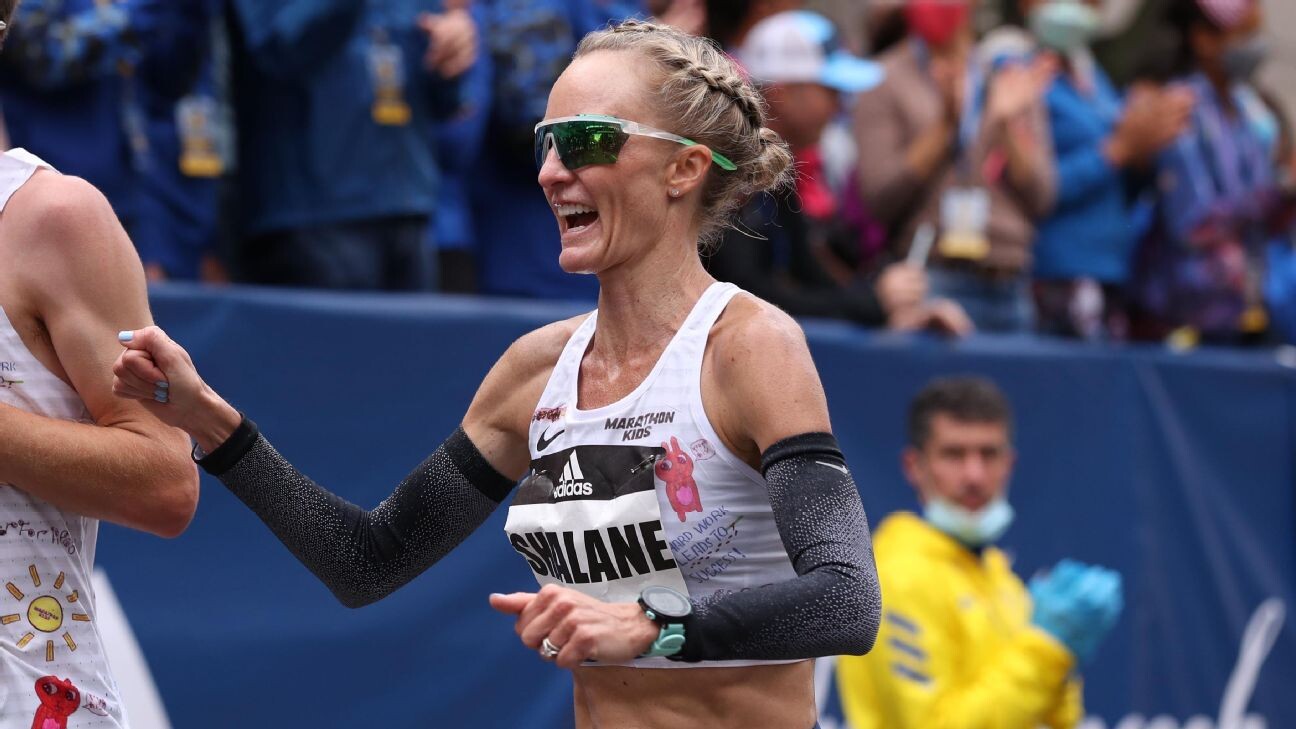
In 2017, Flanagan ended a 40-year winless drought for American women at the New York City Marathon by winning the prestigious event.
Flanagan made her Olympic debut in 2004 when she was 23, and returned in 2008 to win a silver medal in the 10,000m. Flanagan also has a bronze medal to her credit from the 2011 IAAF World Cross Country Championships in Spain.
Flanagan, now 41, is an 18-time U.S. champion with six titles in each discipline (track, road and XC). She won two of her 18 titles at the Historic Hayward Field in Eugene, Ore, which is the training ground for the University of Oregon track and field program.
In 2019, she announced her retirement from running but then paused her retirement in 2021 to complete all six Abbott Marathon Majors in seven weeks. She ended up finishing all six races in under three hours.
by Marley Dickinson
Login to leave a comment
Here’s How the U.S.’s 5,000-Meter World Finalists Handle Excessive Heat on Race Day
Racing in hot weather can be daunting. Utilize these pro tips from Elise Cranny, Karissa Schweizer, and Emily Infeld to better prepare yourself for the next scorcher.
If you’ve ever raced in the summer, then you know how difficult it is to be underneath the beating sun for too long. Heat stroke, sunburn, and dehydration are legitimate dangers from overexposure. But maybe you signed up for a race that starts in the middle of a summer day. Maybe you’re running a destination marathon in a hotter climate. Perhaps you’re even attempting an ultramarathon, like Badwater 135, which takes place in Death Valley. You want to race, but you also want to be safe.
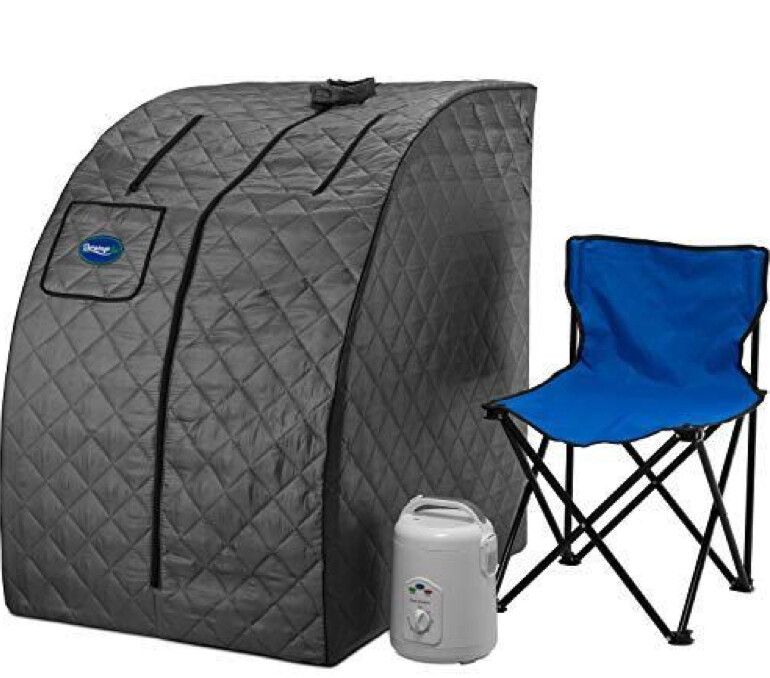
Professional runners sympathize. On July 20 at the World Athletics Championships in Eugene, Oregon, the women’s 5,000 meters took to the track for their preliminary races in searing 90-degree heat.
Yet despite the scalding temperatures, Elise Cranny, Karissa Schweizer, and Emily Infeld of the U.S. all qualified for the 5,000-meter final without any problems from the temperature. Schweizer and Infeld even ran season bests. Here are their tips for handling the heat so next time you’re faced with a race on hot day, you can be prepared.
Gradually adapt to hotter temperatures
Before the prelim, Infeld hadn’t run much in hot weather. She trains part-time in Flagstaff, Arizona, whose average summer high hover around 80 degrees, and has spent the last few months in Eugene, which hadn’t experienced 90-degree days yet.
“We were trying as best we could to go at the hottest part of the day, which is around 4 to 6, to do workouts,” said Infeld. “Some days that was 80 degrees, some days that was 60. So, I was trying to do sauna, and do things that I could to prepare in case it was hot.”
Infeld owns a portable sauna tent that goes up to 140 degrees. She would go for a run, and if it wasn’t hot enough for her body to learn to adapt, she’d hydrate well and sit in the sauna for 20 minutes to simulate heat training. A review published in Frontiers looked at numerous studies that confirmed that passive heat acclimation strategies, such as sauna, have a measurable effect on athletic performance and heat tolerance. If you don’t have access to a sauna, a study from Temperature recommends overdressing to simulate hotter temperatures, though admits this method isn’t as effective.
Infeld’s preparations paid off with a season best time of 15:00.98 and a time qualifier for the 5,000-meter final.
Stay as cool as possible before racing
Schweizer already had one race under her belt before the 5,000-meter prelims —the championship 10,000 when she placed ninth in a personal best of 30:18.05. Because the weather was temperate for the 10,000, Schweizer found the heat during the 5,000 jarring.
Not only does Schweizer train to adapt to the heat—such as working out in the Salt Lake City, Utah sun during altitude camp with the Bowerman Track Club or using a sauna like Infeld—but she also takes precautions before race to stay cool.
She spends much of her pre-race time in the shade, wears an ice vest to warm up, and even stuffs ice in her uniform on the starting line: “It was to the point where I had chills, so I was pretty cold going into the race.”
While utilizing shade and ice may sound like too simple of a solution, it’s actually very effective. The same Temperature study previously mentioned reveals that pre-cooling your body optimizes endurance performance and mitigates the effects of heat strain during extreme temperatures. Some techniques mentioned include ice baths, ice vests, cold towels, and drinking very cold drinks or frozen beverages (called “ice-slurries” in the text) before the race. The study recommends trying out a few techniques to see what works best for you on race day.
Wear sunglasses to prevent extra strain
Cranny credits her races last year at the Olympic Trials and Olympics as practice for racing in the heat, and also has similar pre-race cooling procedures as her teammate, Schweizer. But Cranny also found that wearing sunglasses during races makes a huge difference.
According to Cranny, many of the Bowerman Track Club athletes wear sunglasses in practice. But until the USATF Championships in June, she had never worn them in a race before. Shalane Flanagan, who coaches the club alongside Jerry Schumacher, highly recommended it, telling Cranny that it prevents squinting in direct sunlight, which relaxes the face. By relaxing her face, Cranny felt she prevented other parts of her body from tensing up, such as her shoulders.
Expect to see Cranny, Schweizer, and Infeld all wear sunglasses for Friday’s final like they did in the prelims, in addition to using pre-cooling techniques. They’ll fight for medals against key competitors like double Olympic champion Sifan Hassan, world 10,000-meter champions Letesenbet Gidey, and world 1500-meter silver medalist Gudaf Tsegay on Saturday, July 23.
Schweizer is ready to put herself in the race, no matter the conditions or pace: “I feel like at a U.S. level, I’m pretty good at running with that confidence. But going into a world level, there’s a lot of really big names and a lot of them have run some pretty crazy times. So I think it’s hard sometimes to really trust yourself and trust your fitness but I know I can hang with the best of them.”
Cranny will focus on staying mentally tough, as Schumacher advised her and Schweizer that a 15-minute 5,000 might feel like a 14:30 effort in the heat. “You kind of just have to prepare yourself… If you panic 6 laps in cause it feels horrible, even if you’re not running a PR pace… being prepared for that and talking yourself through it is a big part.”
Infeld caught COVID-19 at the USATF Championships but isn’t letting that or the temperatures hold her back: “I always want to compete against the best and see where that lands me,” she said immediately post-race, before knowing she qualified on time. “Today it was sixth in that heat, but I hope that’s enough to get in the final and mix it up with the women out there.”
by Runner’s World
Login to leave a comment
This 33-year-old steeplechase specialist had a bumpy four years until placing sixth at the World Athletics Championships on July 18
If you told Evan Jager in April that he would place sixth in the World Athletics Championships men’s 3,000-meter steeplechase in just a few months, he would have been ecstatic.
After all, the 2016 Olympic silver medalisthad only ran 8:34.89 at the Mt. SAC Relays on April 14, which is almost 13 seconds off the world’s standard time of 8:22.00. Though Jager had better steeplechase showings at the USATF Distance Classic on May 19 and the Portland Track Festival on June 10, it looked like the 33-year-old distance runner was still a far from being his former self.

Things finally clicked at the USATF Outdoor Championships on June 25, when he ran 8:17.25 in the final to place second, earning him the world championships standard and a spot on Team USA for the World Athletics Championships at Hayward Field in Eugene, Oregon.
“Once you reach a certain point, you’ve got to set the bar higher,” Jager told Runner’s World.“I probably didn’t start thinking about realistically making the World Championship final until the prelim at USAs, I felt really good coming off of that.”
With momentum on his side, Jager’s expectations grew. The Bowerman Track Club athlete looked strong in his world championships preliminary heat, qualifying automatically for the final with his second-place finish. But in a tactical and physical final, Jager couldn’t keep up with defending Olympic champion Soufiane El Bakkali, Olympic silver medalist Lamecha Girma, and defending world champion Conseslus Kipruto over the final lap.
“After the prelim, I felt like my fitness was up there with just about anyone besides El Bakkali and Girma if it was a hard race from the get-go,” Jager said. “Team USA was having such an unbelievable and magical meet that I was letting myself believe that I could let the home crowd carry me to a magical performance. I think I probably would have fared better in a faster race.”
Regardless, the achievement is impressive for a runner who has been absent from the track & field circuit for the last four years. A lot has changed, especially with his training group. In 2018, Jager and Canadian 5,000- and 10,000-meter runner Mo Ahmed were the top dogs on the Bowerman Track Club, challenging the best in the world for medals. But Jager got hurt that year, and spent most of 2019 trying to get fit again while dealing with other injuries. When Jager returned to training, the team dynamic changed completely. Olympic gold medalist Matthew Centrowitz joined the group, who along with Woody Kincaid and Lopez Lomong all ran around 13 minutes in the 5,000 meters that summer. Then, NCAA champions Sean McGorty and Grant Fisher trickled in after using up their eligibility.
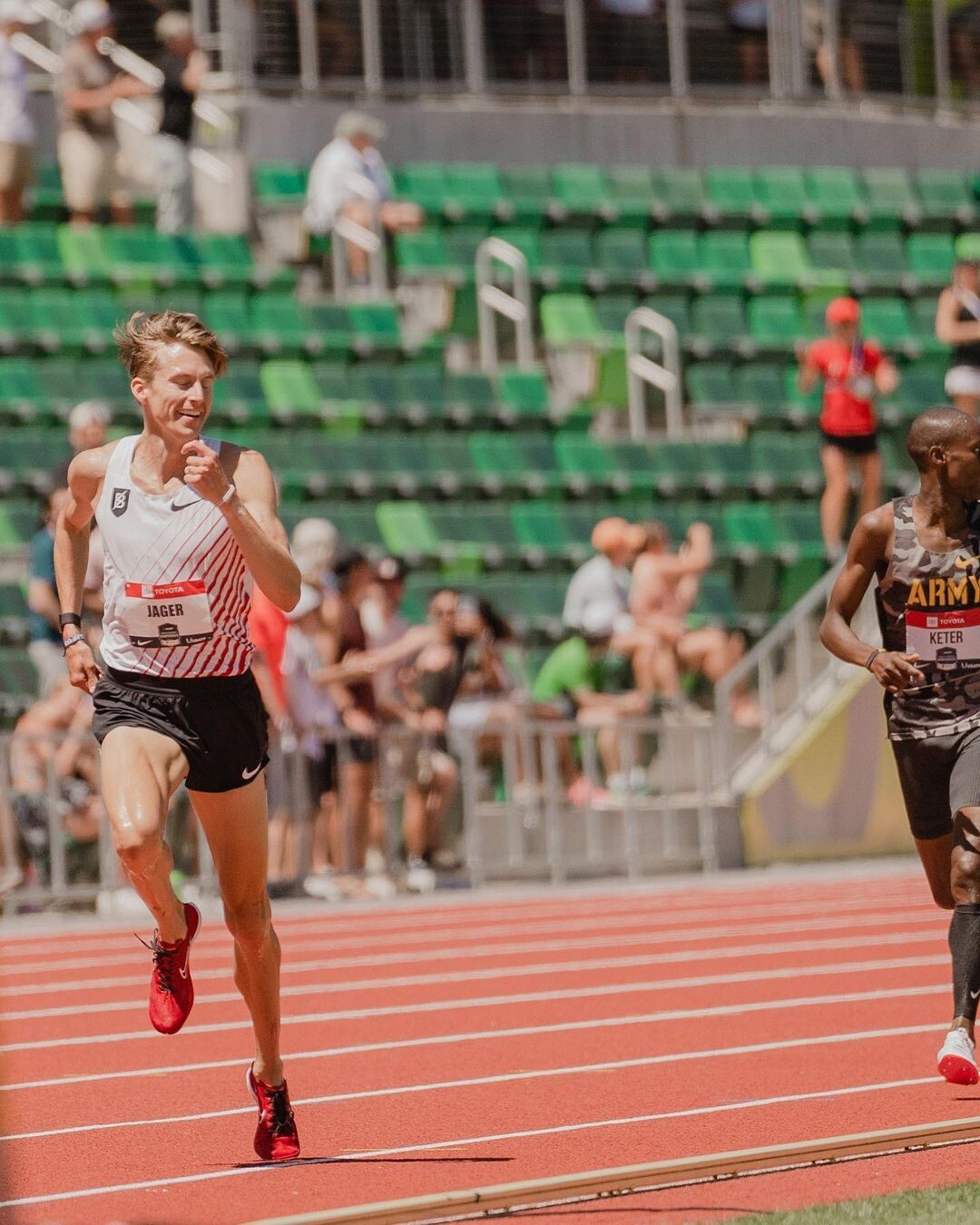
“I went from being on top … to being literally the worst guy on the team,” said Jager. “Every day was a grind.” Jager tried to keep up with the new members while also battling injuries, but had a hard time getting through even half of team workouts. “They were just on another level. I never felt like I was within myself in training for three and a half years up until this spring.”
So what changed in those three and a half years? Jager credits the team physical therapist, Colleen Little, who started working with Bowerman in January 2021. His problem wasn’t simply one big injury, like the stress fracture in his foot that ended his 2018 season. It was a snowball effect of one injury leading to overcompensation and imbalances in other parts of his body. So Jager and Little saw each other once or twice a week, every week, to manage the different aches and pains.
Next year will bring even more changes for Jager. His coach, Jerry Schumacher, is moving to Eugene to take the helm of the University of Oregon track & field program. The Bowerman Track Club’s athletes will relocate from their current base in Portland.
“I think it’s an incredible move for the group,” Jager said. “Change is always good. I’ve been in Portland for 14 years now, so it’s probably a good thing for me.”
Besides that, Jager said being stubborn kept him in the game. “I could have done a lot better being positive and working on mental health [the last few years],” he said. “I just believed that if I got healthy, I would get back here. If I can get to the final off of feeling healthy for four months, then I’m excited for next year.”
by Runner’s World
Login to leave a comment
World Athletics Championships Budapest23
Budapest is a true capital of sports, which is one of the reasons why the World Athletics Championships Budapest 2023 is in the right place here. Here are some of the most important world athletics events and venues where we have witnessed moments of sporting history. Throughout the 125-year history of Hungarian athletics, the country and Budapest have hosted numerous...
more...Woody Kincaid eyes redemption at USA Track & Field Outdoor Championships
Woody Kincaid’s last visit to Hayward Field didn’t go as planned.
So, Kincaid has something extra riding on the USA Track & Field Outdoor Championships, which begin a four-day run at Hayward Field in Eugene on Thursday.
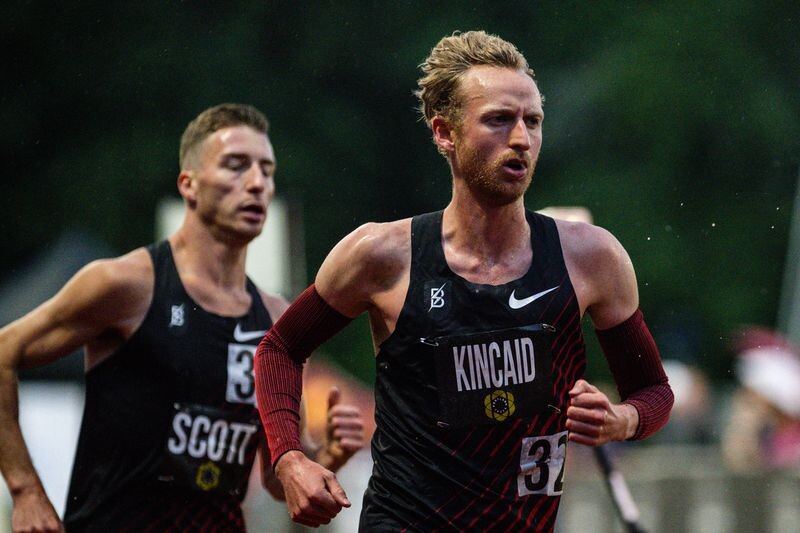
The USATF 10,000-meter final took place at Hayward last month in conjunction with the Prefontaine Classic. Kincaid, the Olympian who trains with the Portland-based Bowerman Track Club, was defending his USATF title.
It was a slow pace and headed toward a kicker’s finish -- Kincaid’s kind race -- when a sharp pain in his side almost doubled him over 6,600 meters in.
Buchanan, who would finish ninth, trains with the California-based Mammoth Track Club. The two UP grads weren’t working together. It just … happened.
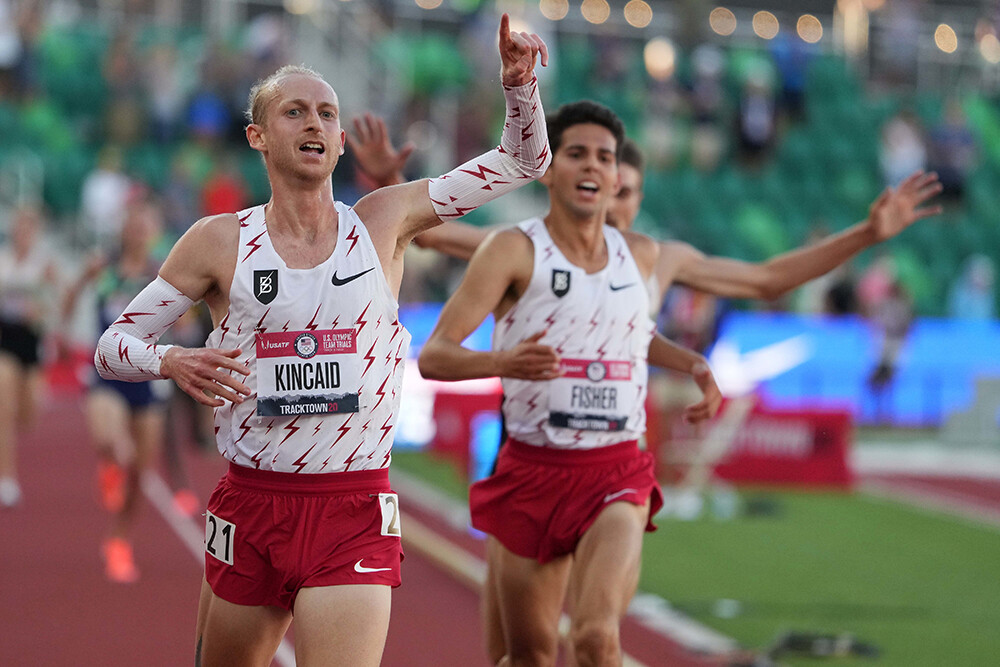
(First photo): Woody Kincaid and Grant Fisher react after finishing first and second place in the men's 10,000 meters during Day 1 of the 2020 U.S. Olympic Track & Field Team Trials at Hayward Field on June 18, 2021, in Eugene, Oregon.
Kincaid remembers thinking, “‘Damn. That’s Reid Buchanan. And this is the Olympic trials.’ It was pretty surreal.”
In the final lap, it became outrageous. Kincaid covered the final 400 in 53.47 seconds, the final 200 in 25.51.
“A lot of people can’t do that,” says UP coach Rob Conner, who nurtured Kincaid through five up-and-down, injury-troubled years on The Bluff.
Staggered, Kincaid couldn’t go on. He was on the sideline when Joe Klecker, Grant Fisher and Sean McGorty went 1-2-3 to claim the spots on Team USA for the World Outdoor Track & Field Championships next month in Eugene.
“It wasn’t a hard effort,” Kincaid says, trying to make sense of what caused the stitch. “It was a slow pack, 4:52 mile pace. So, it wasn’t like I was hanging on or anything. It’s never happened before.”
Kincaid says it’s been diagnosed as a diaphragm cramp. He has been checked out. There doesn’t seem to be anything wrong medically.
“One of those things,” he says.
And ready to be discarded like yesterday’s news. Kincaid is entered in Sunday’s 5,000 in the main portion of the USATF Outdoor Championships. He will be running to win.
Kincaid was third in the 5,000 at last year’s Olympic trials. He went on to represent the U.S. in both events in Tokyo, placing 14th in the 5,000 and 15th in the 10,000.
“I was glad I made the team in the ‘5,’” Kincaid says of last year’s Olympic trials. “But there still is a little bit of ‘Damn, I should have gotten the ‘5′ too.’ I still want a national title in the ‘5.’”
Last year’s Olympic trials was a breakthrough for the former University of Portland star who seemed to spend his first four years as a professional either hurt or trying to come back from injury.
It all clicked last summer on the first day of the trials at Hayward Field when Kincaid positioned himself perfectly in the 10,000 with two laps to go.
He wasn’t quite ready to make his move when former UP teammate Reid Buchanan obliged by going to the front.
It was a Hollywood finish in more ways than one. As Kincaid took his victory lap, his father, Mike, met him at along the rail. Mike was in a fight with mesothelioma that he would lose five months later.
Father and son both knew the score, which made for a poignant moment.
“We were both like in shock, like, ‘Wow, I can’t believe that just happened,’” Kincaid says. “My dad couldn’t speak. We were super close. I don’t think he had anything to say.”
Kincaid’s BTC teammates took a photo of the scene and blew it up to poster size.
“Best race I’ve ever run,” Kincaid says. “That was special.”
Shocking as it might have been to fans, it wasn’t totally unexpected by those close to him.
BTC coach Jerry Schumacher believes Kincaid actually arrived at the 2019 USATF Outdoor Championships, when he survived a wicked pace set by Olympic silver medalist Paul Chelimo in the 5,000, stayed at the front and finished third.
“That got me excited,” Schumacher says.
That September, Kincaid and teammates Lopez Lomong and Matthew Centrowitz ran a 5,000-meter time trial on the Nike campus.
Kincaid bolted past Lomong in the race’s final 120 to finish first in 12:58.10. Even Kincaid did a double take at the sub-13 time.
COVID scrubbed most of the 2020 outdoor season, leaving Kincaid something of a question mark heading into last summer’s Olympic trials.
“People kind of missed on him,” Schumacher says. “We got to see him at practice. We got to see how he trained and worked out. He was determined. He had everything you would want to see in an athlete going into the Olympic trials.
“For us, it wasn’t a huge surprise. He’d basically been at that level for two full years, and 2021 was the first time he got to showcase it.”
He is a known commodity now, and an acknowledged threat in the USATF 5,000 final. A totally focused and injury-free Kincaid will be tough to beat, particularly if the race comes down to a kick.
“He’ll get the job done,” Conner says. “I’m 100 percent confident of that.”
by Ken Goe (OregonLive)
Login to leave a comment
Grant Fisher (12:53.73) DESTROYS US 5,000 Record in Boston, Moh Ahmed (12:56.87) and Marc Scott (12:57.08) Break Canadian and British Records
As the runners were getting ready for the elite section of the men’s 5000 meters at the 2022 Boston University David Hemery Valentine Invitational on Saturday evening, we should have known we were in for a treat. After all, the slow heat had just been won in 13:05.
It’s crazy, when you think of it: Bowerman Track Club coach Jerry Schumacher had decided Woody Kincaid, the reigning US 10,000-meter champion, was not quite ready to mix it up with his BTC teammates in the fast section and Kincaid wound up running 13:05.56, at the time the second-fastest indoor 5,000m ever by an American.
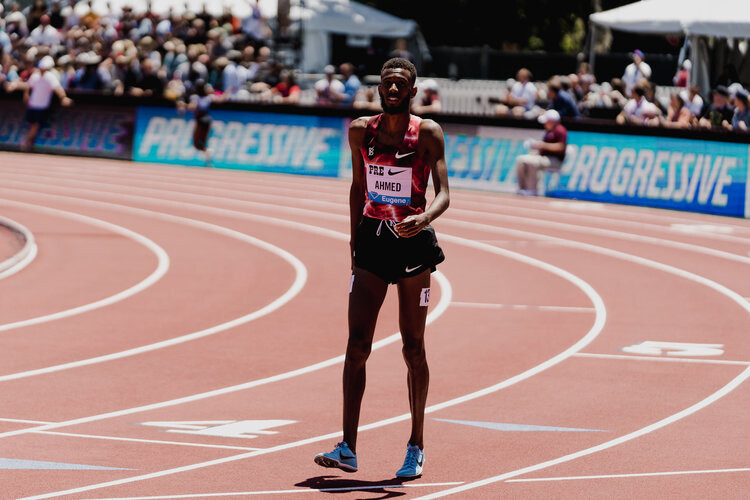
Just as crazy: Schumacher was kind of right. Because what we saw in the fast heat was the deepest 5,000-meter race ever contested on US soil, indoors or out.
Grant Fisher, a former high school phenom who won two Foot Locker titles and broke 4:00 in the mile while balancing soccer with running, delivered on his immense promise and ran 12:53.73 to win the race, smash Galen Rupp’s American indoor record of 13:01.26, and come within a whisker of Bernard Lagat’s American outdoor record of 12:53.60. He is now the fifth-fastest human ever at 5,000 meters indoors, one spot ahead of a guy by the name of Eliud Kipchoge.
Fisher’s Bowerman teammate Moh Ahmed, the Olympic silver medalist last year, was next across, running 12:56.87 to break his own Canadian indoor record of 13:04.60. Marc Scott completed the BTC national record sweep in third, and like Ahmed, Scott lowered his own European indoor record, taking it from 13:08.87 to 12:57.08.
In the process, Scott became the first man born in the United Kingdom – and just the third born in Europe – to break 13:00, indoors or out. The race marked the first time that three men broke 13:00 in the same race indoors (only once before had even two done it in the same race).
The times were so fast up front that would-be historic performances were relegated to also-ran status. Emmanuel Bor ran the second-fastest time in US
indoor history (under Rupp’s previous AR) but was only 4th (13:00.48). Sam Atkin of Great Britain and Jonas Raess of Switzerland both ran faster than the previous European indoor record but had to settle for 5th (Atkin in 13:03.64) and 6th (Raess in 13:07.95).
Florida State’s Adriaan Wildschutt of South Africa ran the second-fastest NCAA time ever indoors and third-fastest under any conditions – 13:09.20 – setting a national indoor record in the process and he was only 5th – in the B heat. Notre Dame’s Dylan Jacobs ran 13:14.04, #4 on the NCAA all-time indoor list and an American indoor collegiate record.
It was sheer madness.
In the main race, the early pacing was good, with 2020 US indoor 1500 champ Josh Thompson and 27:20 man Zouhair Talbi of Morocco taking the field through 3k in 7:53.51, but the real racing didn’t get going until just under a mile to go, when Atkin signaled for Fisher to pass him, knowing he could no longer hold the pace Fisher wanted to run.
From there, Fisher conducted a symphony of pain on the BU track, stretching the field out until Atkin, Scott, Ahmed, and finally Bor had dropped, leaving Fisher all alone for the final 400 as the crowd roared him into the history books. His last four 400m splits: 60.00, 58.95, 59.91, 58.74, good for an otherworldly 3:57.56 final 1600.
Fisher’s performance, just like almost every elite distance performance in the year 2022, must be placed into the context of its era. Earlier in the day on the same track, Notre Dame’s Yared Nuguse, the Olympian and 2019 NCAA 1500 champ, broke Alistair Cragg’s 7:38.59 indoor collegiate record which had stood since 2004. And last night, Gabriela DeBues-Stafford and Elise Cranny set dueling Canadian/American records, Cranny taking 14 seconds off Shalane Flanagan’s 14:47.62 AR.
Fisher and Cranny’s talents have long been known, and they are undoubtedly great runners. Yet between them, they own a grand total of one NCAA and one US title. That they could annihilate national records established by two of the greatest distance runners in American history is yet more evidence that we have entered a new age of distance running ushered in by super shoes, one in which the standards must be (and are being) adjusted.
by Let’s Run
Login to leave a comment
2016 Olympic gold medalist triathlon Gwen Jorgensen is Leaving Bowerman Track Club
After four years at the Nike-sponsored club coached by Jerry Schumacher, Gwen Jorgensen announced today that she’s leaving Bowerman Track Club to be coached by Bobby McGee, who she has worked with in the past.
In a video uploaded to her YouTube channel, Jorgensen explained that a mix of career and family goals led to this decision. “I’ve had two marathons that just haven’t proven I can do it,” she said. “I want to just have a marathon, that’s like, OK, I can run this.” She and her husband, Patrick Lemieux, are also looking for a new place to live and are considering having more children.

Jorgensen won the Olympic gold at the Rio Games in 2016 in triathlon, and announced a year later she would shift to running, with a focus on medaling in the marathon. Due to extended recovery after heel surgery to repair Haglund’s deformity in May 2019, she didn’t end up competing in the Olympic marathon trials last year—in early 2020, she decided to focus on the track.
“My goals in the marathon aren’t changing. My timeline is,” she said at the time.
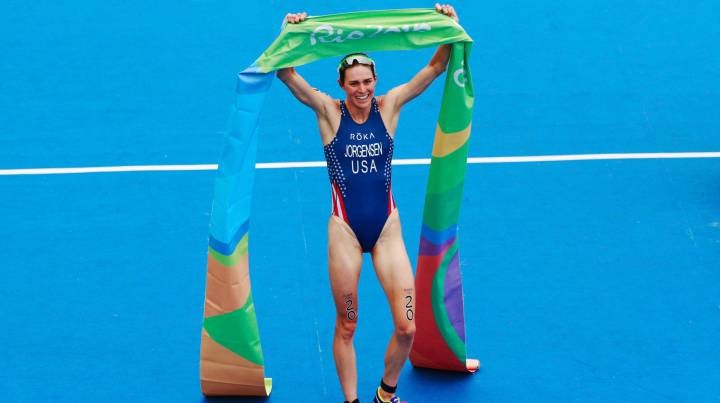
At the recent U.S. Olympic Track & Field Trials in Eugene, Oregon, Jorgensen competed in the final of the women’s 5,000m, finishing ninth in 15:50.62. (Two of her BTC teammates, Elise Cranny and Karissa Schweizer, finished first and second.) Jorgensen also lined up for the women’s 10,000m final, but pulled out sometime after recording a time of 26:50.07 at the 8000-meter mark.
“Today I had the best of intentions,” she wrote on Instagram following the race. “I got myself in good position the first mile (something I rarely do). I didn’t focus on splits, I just ran what I needed to stay in contention until I couldn’t.”
Searching for the Right Place to Live
Lemieux says that Bend, Oregon, Boulder, Colorado, and Bentonville, Arkansas are currently on their short list, and a visit to Asheville, North Carolina is next. “Really our criteria was: Can I mountain bike from the door? Can [Gwen] run outside 11, 11 and a half months of the year? And does it have good schools, and a family feel, and a small town vibe,” he says.
“We’re looking for a place that’s good for marathon training, but we also want this place to be somewhere where we could stay forever,” Jorgensen says.
Growing Their Family
At 35, Jorgensen is considering getting testing done to determine her “maternal age” and how many eggs she has left.
Jorgensen and Lemieux are parents to one son, Stanley. Jorgensen had a difficult labor experience that she says has made her reluctant to consider pregnancy again: “I also remember when I had Stanley and just saying, I can never come back to sport after this again. And just that I can never have more than one more child, just because of the experience I went through.” She mentioned that her pelvic floor therapist has told her her next experience will be great, but that they’re also open to adoption.
Goals for the Future
Unlike in the past, where Jorgensen publicly announced specific running goals for the future, she’s more broadly wanting to return to focus on the marathon. “Bobby was saying things that I just thought were outlandish, and I love that he has that belief in me,” she says. The couple admit that the decision on where to live is rushed, partly because Jorgensen wants to be settled for fall marathon training, though she didn’t specifically say which marathon she’s training for.
by Women´s Running
Login to leave a comment
American record holder Shelby Houlihan receives four-year ban week before Olympic track trials
Accomplished distance runner Shelby Houlihan was handed a four-year ban exactly one week before the start of U.S. Olympic Track and Field Trials.
Houlihan was considered an Olympic medal contender entering this year. The 2016 Olympian holds American records in both the 1500m and 5000m. In 2018, she became the second woman ever to win both distances at the U.S. outdoor championships.

Houlihan placed fourth in the 1500m at the 2019 World Championships.
The 28-year-old had not competed yet this year, which was explained on Monday evening.
Houlihan tested positive for nandrolone in an out-of-competition urine test administered by the World Anti-Doping Agency on Dec. 15, 2020.
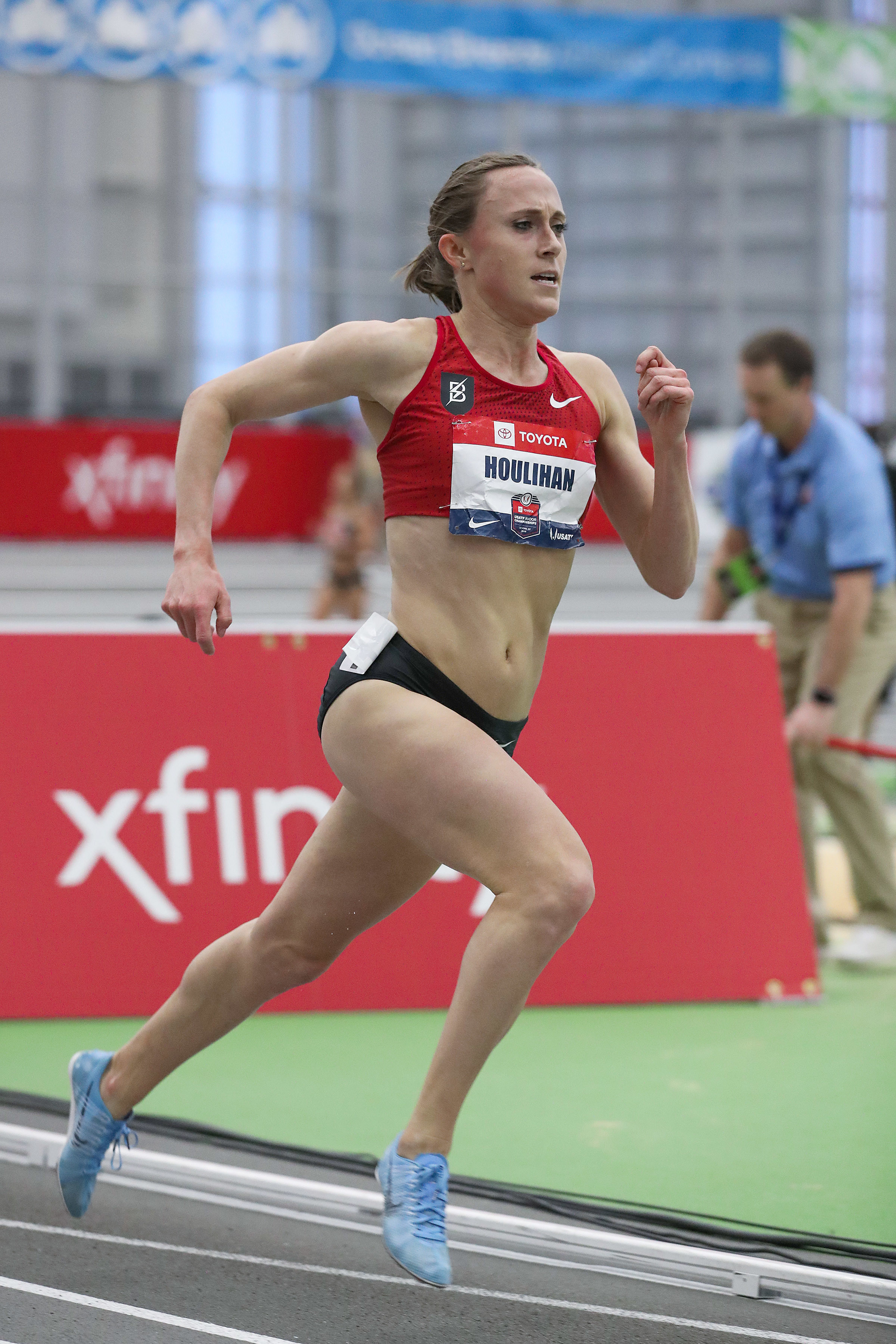
Nandrogen is an androgen and anabolic steroid known to increase muscle mass.
In a virtual press conference, well-known sports attorney and founder of Global Sports Advocates Paul Greene walked reporters through Houlihan’s case, alongside Houlihan and Bowerman Track Club coaches Jerry Schumacher and Shalane Flanagan, an Olympic silver medalist in the 10,000m.
“Shelby is an innocent athlete,” Greene declared. “What happened to her is entirely unjust.”
“I don’t have the words to articulate the depth of sadness I feel for you,” head coach Schumacher said in his statement.
After being notified of the positive test in January, Houlihan created a food log of everything she had consumed the week prior to the test.
Her team believes the result came from a pork burrito Houlihan purchased at a food truck near her home in Beaverton, Oregon, and ate the night before the 6 a.m. test.
It has been noted in WADA documents that consumption of meat, specifically pig offal, can lead to the presence of nandrolone.
Greene explained that Houlihan initially received a provisional suspension of more than three months, which caused them to opt for a single hearing before the Court of Arbitration for Sport.
In the interim, Houlihan had a hair sample tested and passed a polygraph test in an effort to prove her innocence. Greene hired a private investigator and former WADA scientist to help prove their case as well. He pushed for the sample to be tested at a second lab to no avail.
According to Greene, Houlihan has been tested approximately 100 times since 2016 and has never tested positive or missed a test in that time.
The CAS hearing was held the first week of June, with the final ruling of a four-year ban delivered on Friday, June 11. That would take Houlihan out of the running of the Paris 2024 Olympics as well; she said she is currently unsure of what her future holds.
“I feel completely devastated, lost, broken, angry, confused and betrayed by the very sport that I loved and poured myself into just to see how good I was,” Houlihan said as she fought back tears. “I want to be very clear: I’ve never taken any performance-enhancing substances and that includes the one of which I have been accused. … I do this sport because I love it, I have so much fun doing it and it’s always the best part of my day.
“This sport means everything to me. I believe doping and cheating is weak. … I would never disrespect the sport, my competitors, my teammates, my coaches, my family and my fans this way. I love the sport too much. …
“I’ve always wanted to stand at the top of an Olympic podium with a gold medal around my neck, knowing I did that, and now I am not sure that will ever happen.”
Greene is considering an appeal to the Swiss federal tribunal.
Login to leave a comment
3 Key Reasons Why Records Keep Getting Broken in 2021
It’s not just the shoes. But they certainly help.
The times have been spectacular across the globe.
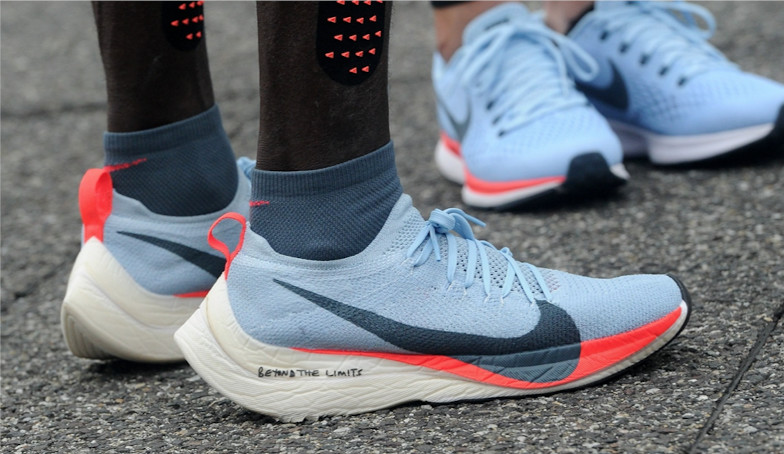
In Europe, four men broke the previous world half marathon record in December in Valencia, Spain. Earlier this month, Gudaf Tsegay of Ethiopia set a world record for the indoor 1500 meters on February 9, running 3:53.09 at a meet in Liévin, France.
Closer to home, Americans Sara Hall, Keira D’Amato, Martin Hehir, and Noah Droddy reshuffled the list of top 10 Americans in the marathon.
On the track, Donavan Brazier, Bryce Hoppel, Elle Purrier, and Grant Holloway have set American or world records.
High school and college athletes are in on the action, too. Hobbs Kessler set the high school indoor mile record with his 3:57.66, and Cooper Teare of the University of Oregon took almost 2 seconds off the collegiate mile record when he ran 3:50.39. Athing Mu at Texas A&M, who was thought to be an 800-meter runner, has been turning in world-class 400-meter splits and anchored her teammates to a collegiate record in the 4x400 meters.
What’s going on with all these fast times? Yes, there is new shoe technology, but it goes well beyond that for these record-shattering runners.
Shoe technology that changed road racing is now changing track racing
Back in 2017, when Eliud Kipchoge attempted for the first time to break two hours in the marathon on a racetrack in Monza, Italy, he wore a new type of shoe from Nike, the Zoom Vaporfly Elite. The shoes promised a 4 percent efficiency benefit, through a combination of a new type of foam, which was lighter and more responsive than previous foams, and a stiff carbon fiber plate to stabilize the foam and move the foot as it pushes off the ground.
Nike’s innovative design has evolved since 2017 and has been emulated, with varying degrees of success, by other shoe brands, like Saucony and Adidas. Now the same technology—better foam with a stiff plate inside—has moved into track spikes, said Geoff Burns, a post-doctoral fellow at the University of Michigan who is researching biomechanics and sport performance.
“The absolute effect may be a little bit smaller,” he said. “But because of the controlled environment and frequency of racing on a track, it’s much more apparent.”
Burns said that although Nike’s competitors are closing the gap, he hesitates to say that they’ve caught up. He praises Adidas and Saucony road shoes, and Adidas and New Balance for track spikes. “But if I were getting on a starting line, for a marathon or a track race, I would be in the Nike shoes,” he said.
Races are set up in near-perfect conditions
With the pandemic, the traditional lineup of road races and track meets has gone out the window, as race organizers have grappled with how to stage events safely.
In their place, pro runners, needing to race, have turned to time trials. And many of these are set up according to exact specifications.
Take The Ten, a track meet on February 20 in San Juan Capistrano, California. In two 10,000-meter track races, athletes—almost exclusively from the Bowerman Track Club in Portland, Oregon—were paced to try to get the Olympic standard in the event, which is 27:28 for men and 31:25 for women.
In the women’s race, Vanessa Fraser and Courtney Frerichs (the American record holder in the steeplechase), set a perfect pace, running 74- or 75-second laps. Fraser led for the first two miles, Frerichs took over and set the pace through four miles, 16 of the 25 laps. Her teammates could turn off their brains and follow behind. In the end, Elise Cranny won in 30:47 and five women hit the standard, four from Bowerman plus Eilish McColgan of Great Britain. The results of the men’s race were similar: Evan Jager and Sean McGorty paced, Marc Scott won in 27:10, and five runners achieved the Olympic standard.
“We are fortunate to have [teammates] who can pace a race for three or four miles,” said Marielle Hall, a Bowerman runner who finished fifth in 31:21. “That doesn’t happen that often. We’re pretty lucky.”
The Marathon Project, on December 20 in Chandler, Arizona, was similar in some ways. Organizers picked a perfectly flat U-shaped loop. Runners went up one side of a 2.1-mile stretch of road and back down the other. Pacers for the top men and women kept a steady pace through 18 miles. In the end, Martin Hehir ran 2:08:59, and Sara Hall ran 2:20:32. Hehir is now eighth on the list of fastest U.S. marathoners; Hall is second among women.
Athletes have benefited from long training blocks—and now they’re itching to race
In a typical season, many college runners race too frequently. They compete in three seasons—cross country, indoor and outdoor track. They might travel the country every other week, chasing top-level competition and in track, qualifying marks for nationals.
But that’s not the case this year. Last March, just as the pandemic was spreading across the country, the NCAA canceled indoor nationals. (Many athletes were already at the meet.) The outdoor season was quickly called off, and the cross-country season, which was supposed to happen in the fall of 2020, was pushed to winter.
The result? College runners have had long blocks of uninterrupted training time with little or no racing outside of team time trials. They’re eager to race again, and they’re reaping the benefits of the extended period of training.
Pros, too, may have benefitted from less racing than usual. And many have the feeling that finally, now that racing is back in some form, it’s time to run fast, especially in the buildup to the Olympic Trials. “The pent-up demand to have races — that definitely has something to do with it,” said Mark Coogan, coach of Team New Balance Boston, who coached Elle Purrier to a 9:10.28 American record in the two mile on February 13.
In a sense, track athletes have been forced to train as marathoners do, with long blocks of dedicated training toward one event, Burns said. “I think there could be enormous gains to track and field performances by taking the same approach: Hunker down and focus.”
Marielle Hall said that training and limited racing through the pandemic has been “all been just one giant experiment.” Bowerman workouts, designed by head coach Jerry Schumacher, are getting harder. Splits they aim for during interval workouts are faster. They do more reps. “Those kinds of things are constantly evolving, changing to fit people’s new fitness level,” she said. “It looks a lot more effortless than it is.”
by Runner’s World
Login to leave a comment
2016 Olympic steeplechaser Colleen Quigley announced that she was leaving Bowerman Track Club, and has finally revealed that she will be training under former FSU coach, Josh Seitz
In a turn of events that surprised many in the running community, American Olympian Colleen Quigley announced on February 4 that she is leaving the Bowerman Track Club, where she’s trained for the last five years.
The 28-year-old, who competed in the 3,000m steeplechase at the 2016 Olympics in Rio, will now be coached by Josh Seitz, who worked with her when she attended Florida State University (FSU).
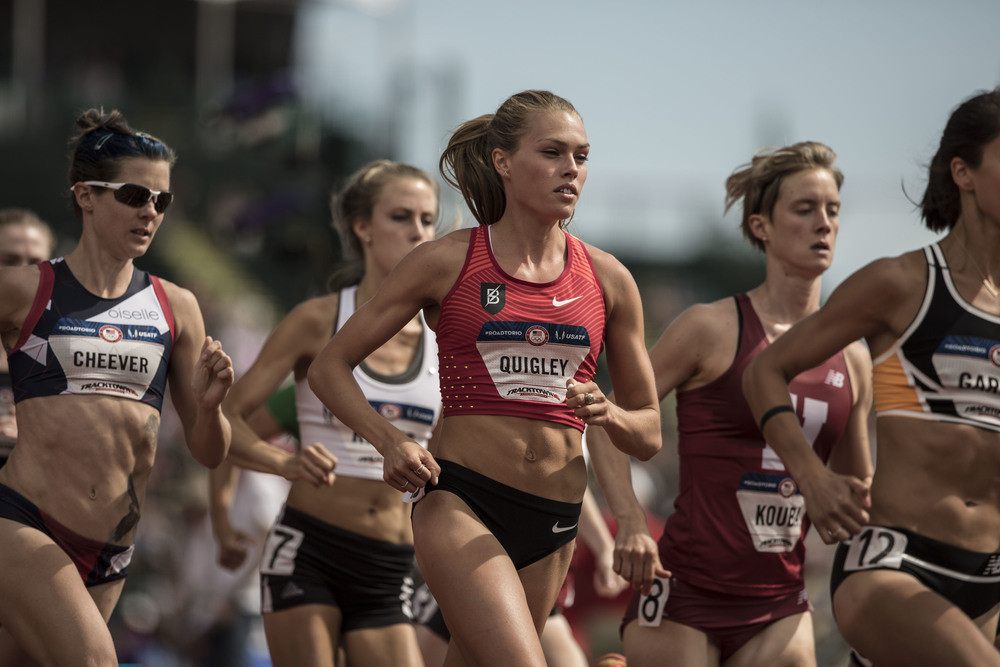
She announced that she would be leaving the BTC on her Instagram page. In a heartfelt post, she spoke about helping her coach, Jerry Schumacher, recruit more women to the team, which, at the time Quigley joined, consisted only of three other women, including Shalane Flanagan, Emily Infeld and Sammy Silva. Since then, the BTC women’s squad (affectionately named the ‘Bowerman Babes’) has grown into one of the most dominant groups of female distance runners in the country.
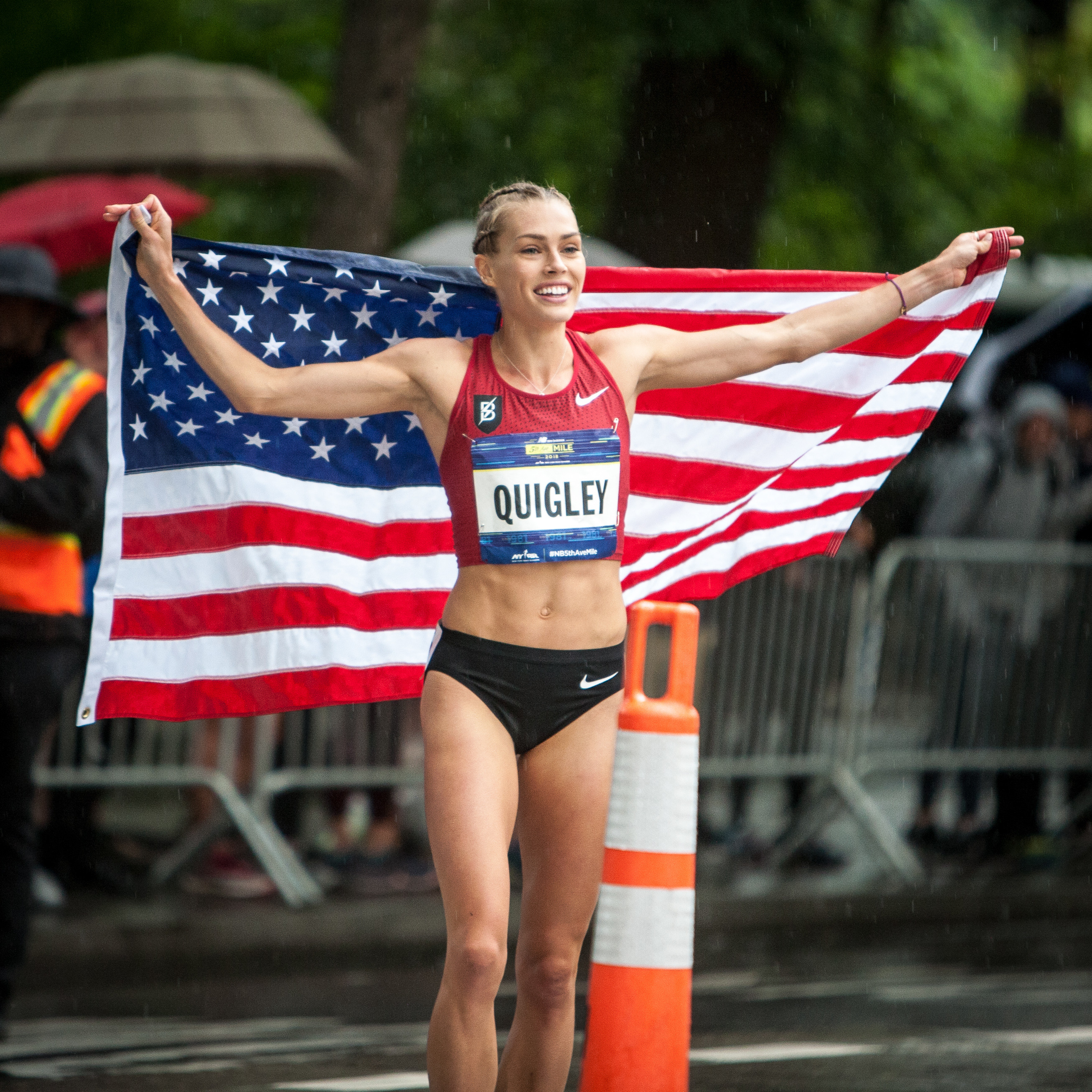
Quigley also wrote an ‘Open Letter to the BTC’ on her website, in which she described what the team has meant to her over the last several years, and gave special shout-outs to many of her teammates and coaches.
"BTC, you were the perfect place for a young athlete fresh out of college to land,” she wrote. “If going pro had meant training alone at age 22, I don’t think I ever would have made it. You gave me teammates and coaches who supported me and my goals.”
In an Instagram Live on Thursday, Quigley finally announced that her new coach would be Seitz, who is currently the assistant cross country and distance coach at Portland State University, where he has been coaching since 2017. According to his Portland State profile, in his four years on staff, he has helped a few steeplechase athletes set school records, and has led one steeplechaser to two podium finishes at the Big Sky Outdoor Championships.
Quigley´s teammate Kate Grace also announced that she would be leaving the BTC and will be heading to Colorado to train with Emma Coburn on Team Bosshard. There have been several changes to the Bowerman Track Club over the last year, with Gabriela Debues-Stafford, Sinclaire Johnson and Amos Bartelsmeyer joining the squad, and Ryan Hill, Andrew Bumbalough, Grace and Quigley leaving. Quigley has not yet announced any new sponsorship deals.
by Brittany Hambleton
Login to leave a comment
Ryan Hill has signed with HOKA ONE ONE NAZ Elite
Ryan Hill, the 2016 World Indoor silver medalist at 3,000 meters who has qualified for three US World Championship teams at 5,000 meters, has signed with HOKA ONE ONE Northern Arizona Elite on a multi-year deal. Hill, who turns 31 on January 31, spent the last seven years of his professional career under Jerry Schumacher as part of the Bowerman Track Club, which he joined after graduating from North Carolina State University in 2013.
The signing represents a significant change for Hill, who will now be based in Flagstaff and its 7,000 feet of elevation year-round as he chases his first Olympic team. Hill was 5th at the 2012 Trials and 6th in 2016, both in the 5,000 meters, and will remain focused on that event for the foreseeable future.
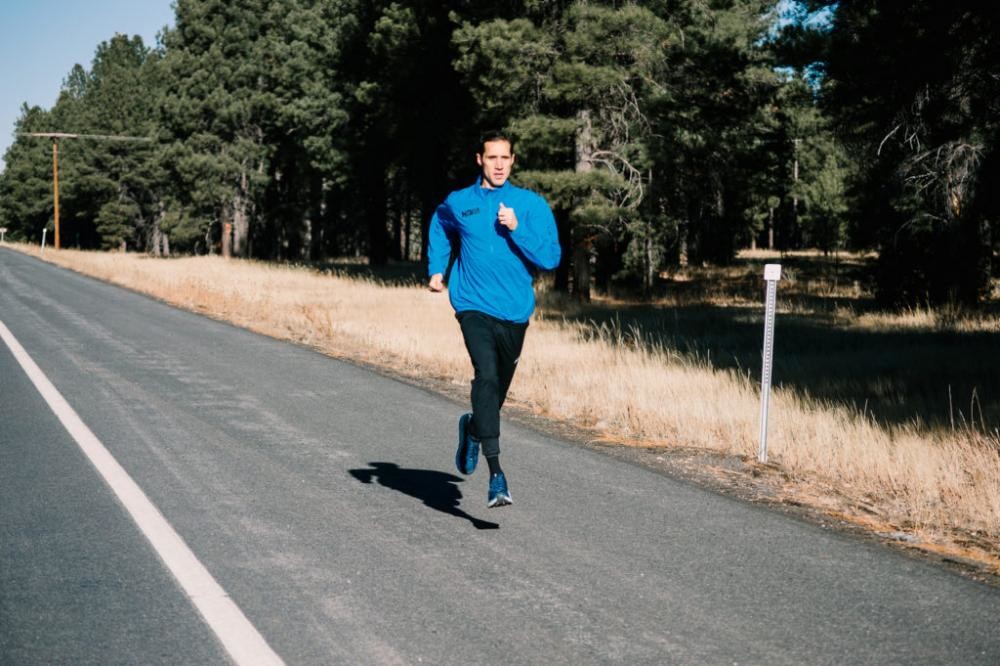
It’s also a big move for NAZ Elite, which continues to grow after signing a four-year extension with HOKA through 2024. Hill’s personal bests of 7:30 for 3,000 and 13:05 for 5,000 are significantly faster than NAZ Elite’s team records of 7:47 and 13:27.
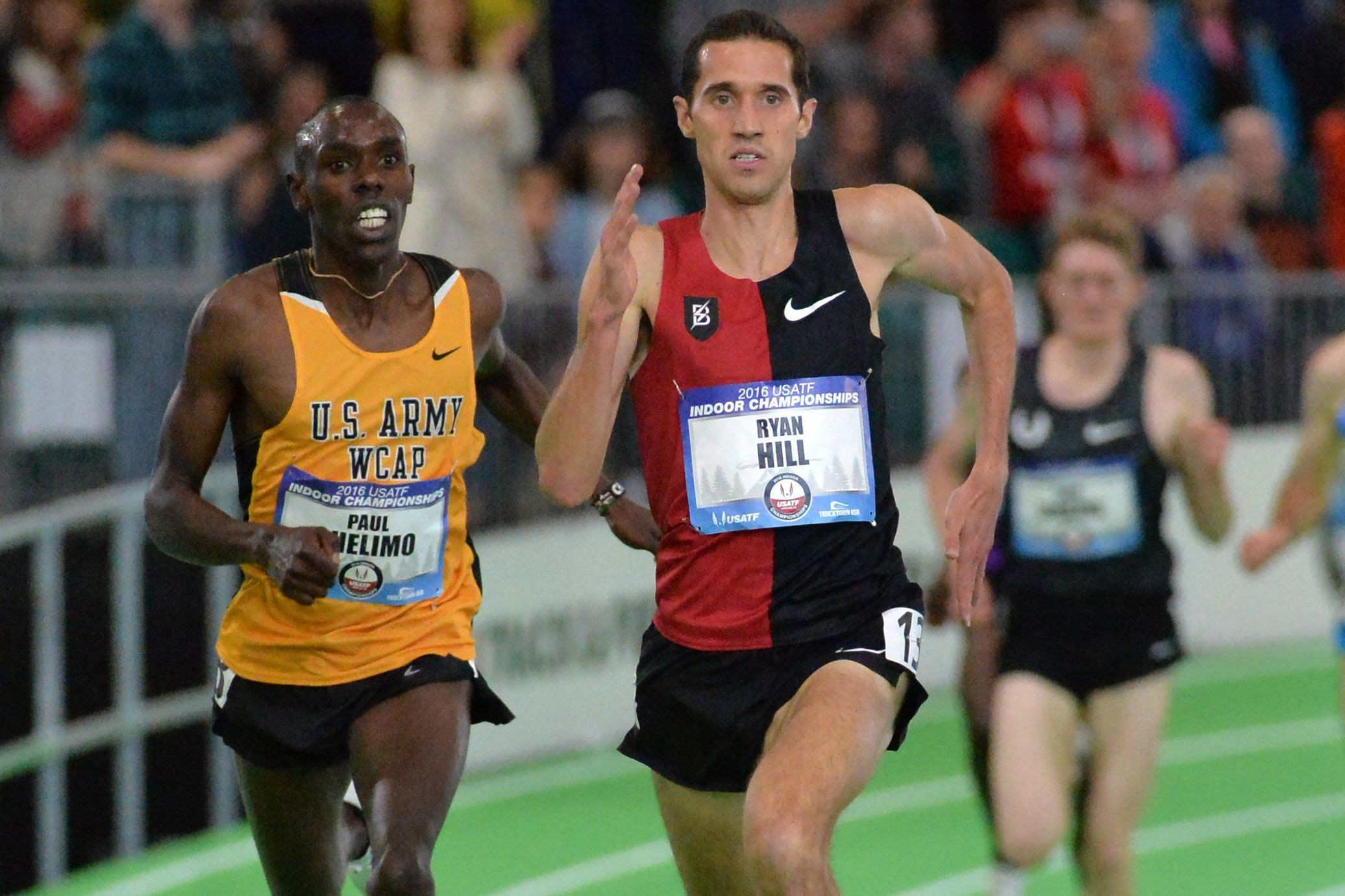
“I’m very confident in the way we train and what that has produced for people at 5,000 meters,” says NAZ Elite coach Ben Rosario. “We just haven’t had a 5,000-meter specialist. Our athletes have gotten a lot better at 5,000 meters, and I think that will translate to someone like Ryan. It’s just, he’s starting off at a different point. And I think his ceiling in that event is different than Stephanie Bruce or somebody…I’m really excited about his ability to close. I love people who can close, like any coach. So my job becomes, hey, let’s just make sure we can get him strong enough to be there at 250m to go, because he’s shown time and time again that if he’s there, he’s very dangerous.”
NAZ Elite has built its reputation as a marathon-focused squad, but Rosario would also like the group to be competitive in the 5,000 and 10,000 meters on the track. That was already the case on the women’s side — Kellyn Taylor and Bruce finished third and fourth at USAs in the 10,000 in 2019. Now, with the additions of Hill and Tyler Day (13:16/28:04 pbs), he believes the men can make some noise in what is shaping up as a pivotal two years for American track & field.
“I view this like a general manager,” Rosario says. “There are different time periods where different things are really important, right? And in this country, an Olympic year is always very important on the track. But then I think next year, track is arguably just as important because the World Championships are in Eugene. So we wanted to have a presence on the track at 5,000 and 10,000 on both sides, men and women. And now I think we do.”
Hill and Nike parted amicably. Six days ago, the Bowerman Track Club posted a lengthy Instagram post announcing with “great sadness” that Hill, whom they called “irreplaceable,” would be leaving. Hill also went to Instagram to say it would be “incredibly hard to leave my lifelong friends, coaches, and some of the best teammates in the world. I’m ultimately very excited and motivated for my next opportunity.”
by LetsRun
Login to leave a comment
Long hours, short nights and ulcers: Portland Track defies the coronavirus to stage elite meets
If Portland Track’s Jeff Merrill feels a little ragged, well, no wonder.
The legwork it takes to stage elite track meets during the coronavirus pandemic would be a strain on anybody.
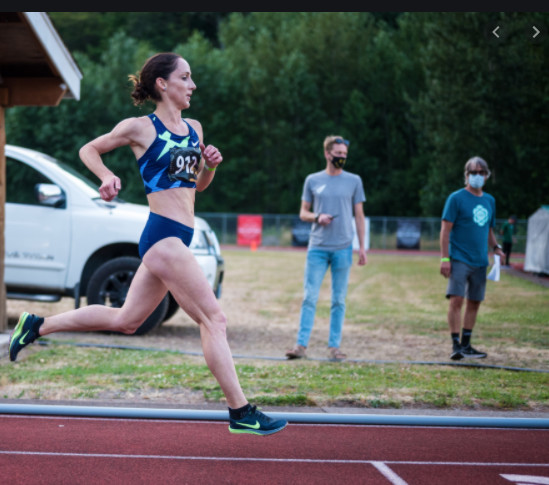
“It’s an around-the-clock type of thing,” Merrill says. “The days all kind of blur together.”
Portland Track has put on two popup meets, the Big Friendly 1 on July 3 at Portland’s Jesuit High School and the Big Friendly 2 (the Bigger Friendly) on July 17 at McKenzie Track, 40 miles outside of Eugene.
Big Friendly 3 is being planned for Friday at an undisclosed location somewhere in the Portland area. Organizers are staying mum about the location to discourage spectators and prevent potential spread of the virus.
The effort it’s taken to get to this point would exhaust a marathoner. Portland Track has consulted with Oregon’s three, Nike-sponsored elite distance groups — the Bowerman Track Club, Oregon Track Club Elite and coach Pete Julian’s unnamed group.
The Portland Thorns of the National Women’s Soccer League have advised. The office of Oregon Gov. Kate Brown has signed off. So have Multnomah and Lane counties, and, presumably, the county in which the next one will take place if it’s not Multnomah. So has USA Track & Field.
Portland Track organizers have arranged with Providence-Oregon for participants to be tested twice in a 48-hour period shortly before race day. They have had to find available tracks suitable for Olympic-level athletes that meet USATF’s sanctioning criteria.
In the case of McKenzie Track, that meant building an inside rail the day before the meet, even while on the phone to Lane County Health and Human Services.
“We weren’t sure the meet was going to happen because a new mask order was going into effect and we wanted to find out for sure that we were OK to hold it,” Merrill says.
They were — once they had passed the hat to participants to pay for the rail. Portland Track is a shoestring operation with an all-volunteer board and next-to-no budget. Merrill, who is a Portland Track board member and works fulltime for Nike, hasn’t slept much this month.
None of this is easy. All of it is time consuming. Start with finding a track.
“It’s pretty hard,” says Portland Track president Michael Bergmann. “I’ve learned about all the tracks in the state, from Lane Community College, to George Fox, to Linfield, to Mt. Hood Community College. All of those guys have rails. But the schools are closed. The campuses are closed. Most of those places don’t want to take the risk of having any sort of event, which I totally understand and respect.”
McKenzie Community Track & Field didn’t have those concerns, which made the track available on July 17 — providing Portland Track brought the rail.
But that track’s tight turns make it less suitable for running fast and setting records, which is what athletes such as Donavan Brazier, Craig Engels, Konstanze Klosterhalfen, Raevyn Rogers and Shannon Rowbury of Team Julian, Nijel Amos and Chanelle Price of OTC Elite, and Josh Kerr of the Brooks Beasts want to do.
“A good call out is, when you’re looking at an aerial view on Google Maps, you want a track with a soccer field in the middle because those are wider,” Merrill says. “If they just have a football field in the middle, they’re a little narrow.”
The Thorns became involved because some players are fans of Tracklandia, a talk show Portland Track streams and Merrill co-hosts with two-time Olympian Andrew Wheating.
Thorns defender Emily Menges, who ran track at Georgetown, has been known to join the pre-pandemic post-show gatherings at an adjacent restaurant. When Merrill mentioned Portland Track was trying to set up a coronavirus testing protocol, Menges put the organizers in touch with the Thorns training staff. That led Portland Track to Providence for the testing.
“Their system is awesome,” Bergmann says.
On race day, Portland Track is serious about keeping out spectators and holding down the number of people around the track.
At McKenzie Track, “we had folks from their board at the front of the road access with a checklist,” Bergmann says. “Nobody got past who wasn’t on the list. When people come into the facility, we do a temperature check and give them a wristband to show they’ve been checked.”
Athletes are asked to wear masks when not competing. Portland Track board members do everything from labeling and handing out race bibs to counting laps to handling the public address announcing.
They had hoped to livestream the McKenzie meet, but rural Lane County couldn’t provide the necessary bandwidth. That shouldn’t be a problem Friday.
J.J. Vazquez, a Portland State professor who runs the production company Locomotion Pictures, is set to be in charge of streaming the action live on Portland Track’s free
There should be plenty to watch. Team Julian, OTC Elite, the Brooks Beasts of Seattle and Little Wing of Bend will compete. Seattle-based post-collegians mentored by University of Washington coaches Andy and Maurica Powell also figure to be there.
Bergmann has hinted there could be surprises — either entries or record attempts — but declines to be more specific.
The Bowerman Track Club has opted out, choosing instead to hold intrasquad time trials.
Bergmann says BTC coach Jerry Schumacher “knows what we’re doing. But they’ve been pretty successful doing it their way. He has his plan. I’m not going to beg him.”
The people at Portland Track have enough on their plate as it is. They aren’t getting rich.
On their own time, they are providing the region’s Olympic-level athletes a chance to do what they train to do.
“We’re having a blast,” Merrill says. “Although, I might have an ulcer.”
by Oregon Live
Login to leave a comment
Shelby Houlihan & Josh Thompson Complete Bowerman TC Sweep of 1500s at 2020 USATF Indoors
The Bowerman Track Club has owned the women’s distance events at USA Indoors in recent years, sweeping the 1500 and 3000 (or the equivalent mile/2-mile) every year since 2017. Well, more accurately, Shelby Houlihan — who earned seven of those eight titles — has owned the distance events.
Today, a Bowerman TC man finally got into the act as Josh Thompson (3:44.07) held off defending champ Craig Engels (3rd, 3:44.62) and the surprising Nick Harris (2nd, 3:44.57) in the 1500 to earn BTC’s first men’s indoor title since 2016. Coupled with another dominant Houlihan victory, it gave BTC a sweep of the metric mile at this year’s USATF Indoor Championships and capped off a successful weekend that saw Jerry Schumacher’s outfit sweep the top three spots in both the women’s 1500 and 3000.
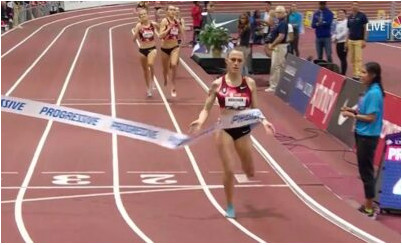
Mens Race
Thompson, who was trying to make it as a steeplechaser this time last year, announced himself as one of the country’s best milers by placing third in the 1500 at USA outdoors last year. Now, after his first national title, there’s no doubt about his best event.
Thompson ran a tactically perfect race, which began by putting himself in ideal position on leader Garrett O’Toole’s shoulder at 400 meters. Once Willy Fink took the lead shortly thereafter, Thompson followed along, content to stay in second as Engels moved behind him into third.
The pack was still tightly bunched when Thompson made his move to the lead at 300 to go, with the Oregon Track Club’s Vincent Ciattei following along into second. But with Olympic bronze medalist Clayton Murphy a scratch, this was always going to come down to Thompson vs. Engels, and that’s what happened once Engels passed Ciattei into second at the bell. Engels made a concerted effort to get around Thompson on the back straight, but Thompson would not yield, fighting him off and forcing Engels to run wide around the final turn. Engels, spent from the effort of trying to pass Thompson, had nothing left in the home straight, and he faded to third, nipped by unsponsored Harris at the line, as Thompson powered away to win in 3:44.07 with a 26.86 final lap.
Womans Race
he women’s race wasn’t quite as dramatic, especially once American mile record holder Elle Purrier was announced as a pre-race scratch following her 4th-place finish in last night’s 3k. The racing began in earnest when Karissa Schweizer took the lead with three laps to go, and it was the BTC show from there as Houlihan and Quigley followed her into second and third. It would remain that way until just over 200 to go, when Houlihan moved to the front, and, as usual, no one could match her top gear as she closed out national title #13 in 4:06.41 with a 29.87 final lap (non one else could even break 31 seconds). Quigley barely held off the impressive Schweizer for second, 4:08.30 to 4:08.32
Login to leave a comment
USATF Championships
For three days, the nation's greatest athletes will be racing, jumping and throwing to see who will be America's national champion! Don't miss your chance to see dozens Olympic and World Championship medalists compete for national titles at this once-a-year event! Based in Indianapolis, USA Track & Field (USATF) is the National Governing Body for track & field, long-distance running...
more...After struggling with fatigue last year Amy Cragg is focused on making the olympic team
With seven weeks until the Olympic Marathon Trials, the defending women’s champion, Amy Cragg, is training well and putting in hundreds of miles in the mountains of Colorado. Despite a rough year in 2019, she expects to contend for a spot on the Olympic team bound for Tokyo. It would be her third Olympic team.
After the 2016 Olympic Games in Rio, Cragg, who turns 36 next week, sat down with her husband, Alistair Cragg, and her coach, Jerry Schumacher, to talk about her future.
The results of that conversation: They decided everything in her training would be geared toward making the Games in 2020, even though she briefly considered stopping her career then.
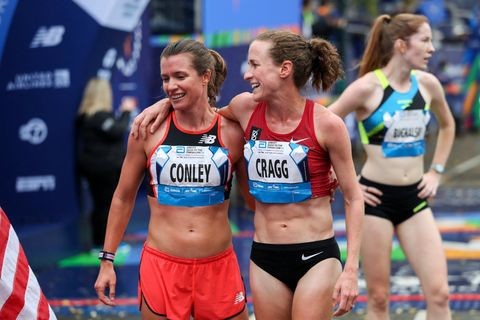
“I’m still around,” she told Runner’s World.
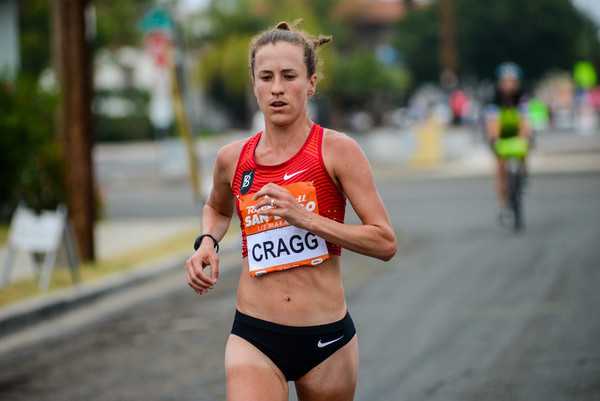
Cragg had a spectacular seven-month stretch between 2017 and 2018. In August 2017, she won the bronze medal at the world championships in London. The following February at the Tokyo Marathon, she finished third in 2:21:42. It was a a PR by almost six minutes, and the performance put her fifth on the U.S. all-time list.
She was announced as part of the Chicago Marathon field for 2018 but withdrew with an injury. In 2019, she raced only twice on the roads and both times the results were disappointing. She was seventh in 1:13:27 at the Prague Half Marathon in April, after previously hinting she might attempt to break Molly Huddle’s American record in the event (1:07:25). In August, she struggled at the Beach to Beacon 10K in Cape Elizabeth, Maine, finishing 14th in 34:40. After that, she withdrew from the 2019 Chicago Marathon.
“It was just overall fatigue,” Cragg said. “I think we just went too hard for too long. I ‘cooked myself’ is what I’ll say. Took some time off when we realized it wasn’t coming around for Chicago. Now I’m feeling a lot better and ready to go.”
Cragg said she went through a period of weeks when she felt tired and worn down, but then she would have glimmers of hope in strong workouts and think she needed to “keep plugging away.” After Beach to Beacon, she realized her fatigue was getting worse instead of better and decided she shouldn’t attempt Chicago.
She took a full three weeks with no running—and followed that up with about a month and a half of slowly building into full training again. At times, she worried her career was ending.
“You talk to any distance runner, you go through those ups and downs regularly,” she said. “It’s like you just can’t seem to get out of the slump. You don’t know whether to push harder or let go. I’ve been used to it over the years. But there was definitely still that fear that I might have overdone it; I’d hope it’s not undoable.”
by Sarah Lorge Butler
Login to leave a comment
2028 US Olympic Trials Marathon
Most countries around the world use a selection committee to choose their Olympic Team Members, but not the USA. Prior to 1968, a series of races were used to select the USA Olympic Marathon team, but beginning in 1968 the format was changed to a single race on a single day with the top three finishers selected to be part...
more...Gwen Jorgensen announces move to track for 2020
The 2020 US. Olympic Marathon Trials on Feb. 29 were marked on Gwen Jorgensen’s calendar since her Nov. 2017 announcement that she was leaving the triathlon to pursue running full time in hopes of winning the 2020 Olympic gold medal in the marathon.
But now, less than three months out from the event, Jorgensen announced that she will not run the U.S. Olympic Marathon Trials and instead focus on making the U.S. team for the Summer Games on the track in the 10,000 meters.
“It’s a multitude of emotions,” Jorgensen, 33, says. “I’m disappointed. At the same time, I’m also excited. I’m at a point where I’m running 70 miles per week and training is going well. I just know that if I went to the trials, running 70 miles per week, I’d be hoping that I made a team. That’s not what I want to do at an Olympic Trials.
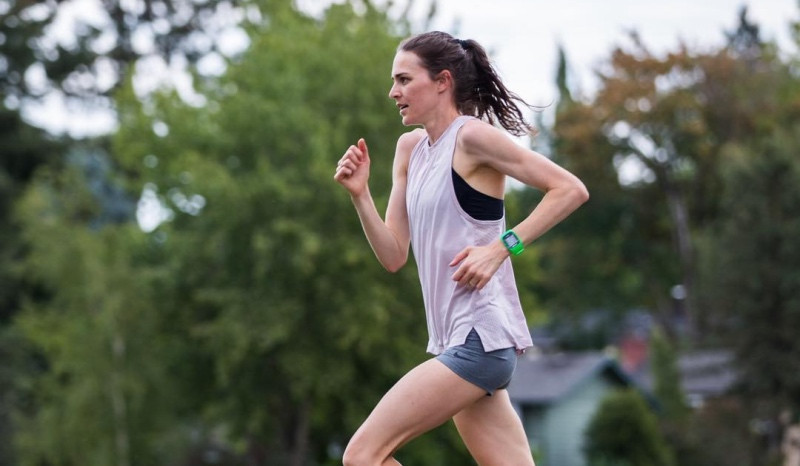
I want to go in confident and knowing that I have the ability to make a team. My goals in the marathon aren’t changing. My timeline is.”
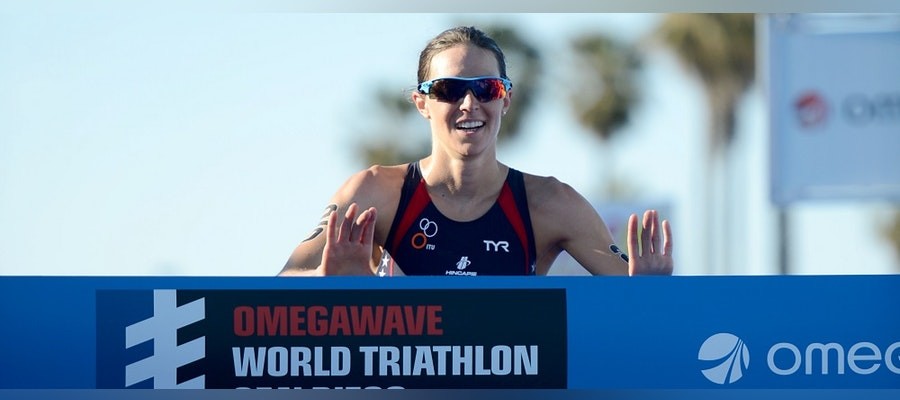
Heel surgery forced Jorgensen, who converted to distance running after winning the Rio Olympic triathlon, to pass up the Feb. 29 U.S. Olympic Marathon Trials and focus on the track and field trials in June in the 10,000m and, probably, the 5000m.
She made the decision after recent talks with her coach, Jerry Schumacher, following a difficult recovery from late May surgery to correct Haglund’s deformity.
“I could get bent out of shape and sad about it, but at the end of the day, I’m excited because I know this path that I’m on will not only be a successful route, but I also think it will lead to success long term in the marathon," she says. "I’m confident in my abilities on the track."
Jorgensen’s goal was a lofty one from the onset. No American woman has won gold in the marathon at the Olympics since Joan Benoit Samuelson’s victory in the 1984 inaugural running. The 2020 trials, where the top three finishers qualify for Tokyo, are shaping up to be one of the most competitive races of the year, as American women’s distance running is at its highest level with recent World Marathon Major victories by Shalane Flanagan at the 2017 New York City Marathon and Desiree Linden at the 2018 Boston Marathon.
Even after giving birth to her son Stanley in Aug. 2017, Jorgensen could have returned to the triathlon and arguably been a contender to become the first woman to win back-to-back Olympic gold medals. But she and her family decided to move to Portland, Ore., and once settled there, Jorgensen signed a professional running contract with Nike and joined the Bowerman Track Club.
Jorgensen worked her way to the marathon by racing on the track in the spring of 2018 and ran a few U.S.A. Track and Field road race championships. She says her training went well, nailing all but one workout in 12 weeks. But in the three days before she was set to compete in the Chicago Marathon, Jorgesen battled a fever and underestimated the effects of running while sick. She finished in a disappointing 2:36:23 in her professional marathon debut.
Now fully healed, healthy and recovered, Jorgensen is working her way back to train with her Bowerman teammates. Her day sometimes includes a hill sprints, a track workout, pelvic floor therapist treatment, physical therapy exercises for her achilles and then an evening workout before returning to her family.
“I think it’s important not to be afraid when you need to admit that your goal needs to change,” Jorgensen says. “I’m not going to say that I’m failing because I still want to have my marathon goals, but the timeline has changed. It’s still important to have big goals and to share those goals. It holds everyone accountable.”
by Chris Cahvez
Login to leave a comment
2028 US Olympic Trials Marathon
Most countries around the world use a selection committee to choose their Olympic Team Members, but not the USA. Prior to 1968, a series of races were used to select the USA Olympic Marathon team, but beginning in 1968 the format was changed to a single race on a single day with the top three finishers selected to be part...
more...Shalane Flanagan Was Not Surprised by Alberto Salazar’s Ban
One of America’s greatest marathoners has retired to become a coach and a television commentator, and she is speaking her mind about her sport and her top sponsor.
Shalane Flanagan, the four-time Olympian and winner of the New York City Marathon in 2017, called it quits on her running career in October — sort of.
Flanagan, who is 38 and has long trained with Nike’s Bowerman Track Club, is moving into coaching and television work. She will serve as the color analyst for ABC’s telecast of the New York City Marathon on Sunday, and once that is done she will return to Oregon to help coach the elite women who call themselves the “Bowerman Babes.”
There are few women coaching at the highest levels of running, even for female runners, and fewer who can still keep up with the athletes they train. That’s the kind of coach Flanagan plans to be as she moves into the next phase of her career.
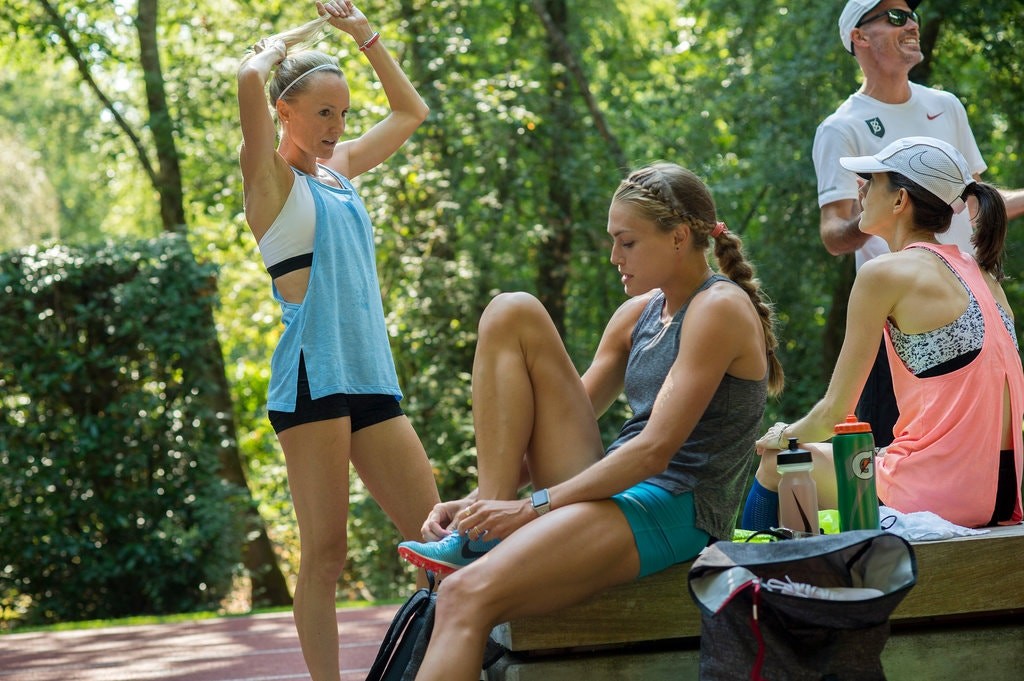
“My dream is to become a personal pacer,” she said in a phone interview last week, during which she discussed her decision to hang up her racing shoes, Nike’s connection to the latest performance-enhancing drug scandal and whether, as an analyst, she will criticize runners she is coaching.
So now you are becoming a coach officially. Is that a role you have been playing unofficially for a while?
"Prior to the last year I had always looked at myself as the elder on the team. A little motherly, maybe a bit bossy and mentoring to younger athletes. But ever since I finished my last race in New York a year ago I have known I wanted to coach, and I’ve been observing and watching more with a coaching eye than as a teammate. The last year has been a kind of informal internship," she said.
Why aren’t there more female coaches at the highest levels in track and field?
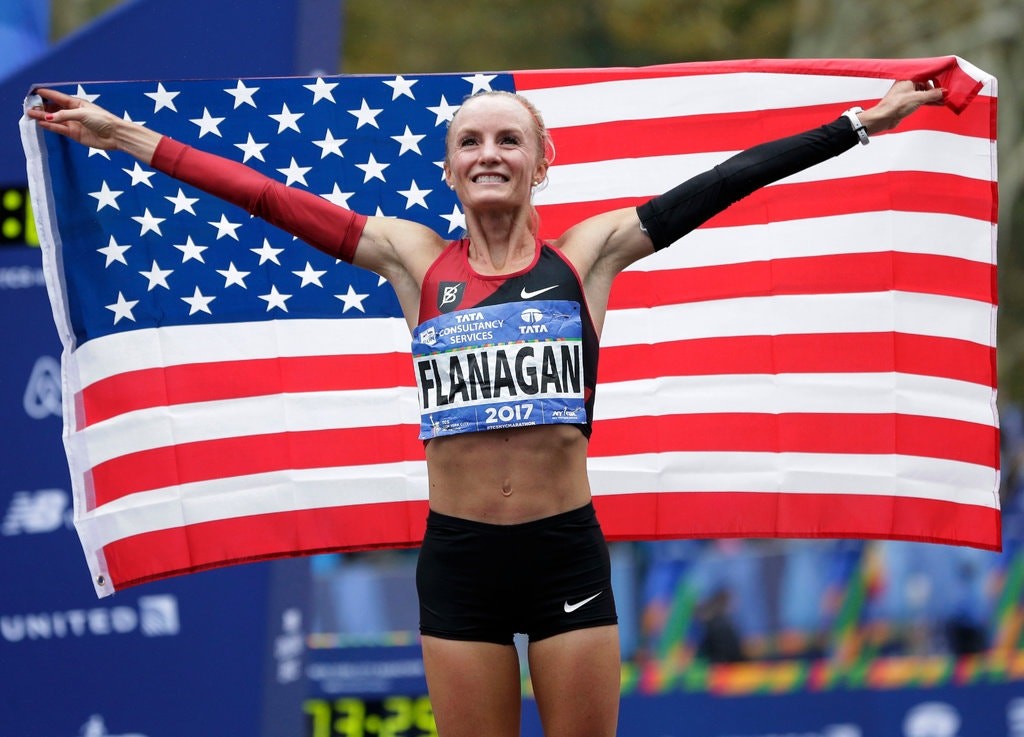
"I never thought of it as a gender position or role, but having in the last year been in an environment and the arena of the coaching world, it has opened my eyes. At the U.S. championships, there are very few women coaches in the warm-up area, or even agents. It definitely feels strange."
Your sponsor, Nike, which funds your training group, worked closely with Alberto Salazar, who has been suspended from the sport for actions he took as coach of the Nike Oregon Project. Has the company done enough to make you feel that other Nike athletes will not be tainted by all of this?
"They are currently looking at the situation. I am guessing that they are a bit shocked to some degree and they are going to evaluate how they format these teams in the future. It’s a big liability for them. It’s very complicated. I’m proud of the U.S. Anti-Doping Agency and the efforts they put forth and their commitment to clean sport."
Were you surprised by what you read in the reports about the Oregon Project, that Nike’s chief executive, Mark Parker (who has since left that post), was kept in the loop through emails about experiments with performance-enhancing drugs?
"We train on the Nike campus, but we very much stick to our neck of the woods. We kind of quarantine ourselves. Once Jerry Schumacher broke off with Alberto in 2009, we’ve been very separated. That said, I’m surprised but not surprised by the situation that unfolded. I trained with Kara Goucher sometimes and I was privy to what she was going through, so I am not completely ignorant on the subject. As for Mark Parker’s interactions, I was unaware of those. (Goucher was one of the main whistle-blowers in the USADA investigation.)"
Will you run with the women you are coaching?
"I would love to pace someone like Shelby Houlihan to a 5K record attempt, or really any of our athletes. Being able to do that for them, that’s my motivation."
Did you ever have a coach like that?
"Jerry used to be able to hop in during some sessions. It made it so much more fun. When I was preparing for Boston I would make multiple trips and train on the course for multiple days. Jerry would get on and do workouts with me. I loved so much to have my coach give his body to help me attain my goals.
So what does Jerry say about you commenting on television about runners in your training group?
"Jerry would prefer I not commentate when I have athletes in races. I’m not sure I will change his mind on that aspect."
by Matthew Futterman
Login to leave a comment
Shalane Flanagan has announced her retiring from professional running
With happy tears I announce today that I am retiring from professional running. From 2004 to 2019 I’ve given everything that’s within me to this sport and wow it’s been an incredible ride! I’ve broken bones, torn tendons, and lost too many toenails to count. I've experienced otherworldly highs and abysmal lows. I've loved (and learned from) it all.
Over the last 15 years I found out what I was capable of, and it was more than I ever dreamed possible. Now that all is said and done, I am most proud of the consistently high level of running I produced year after year. No matter what I accomplished the year before, it never got any easier. Each season, each race was hard, so hard. But this I know to be true: hard things are wonderful, beautiful, and give meaning to life. I’ve loved having an intense sense of purpose. For 15 years I've woken up every day knowing I was exactly where I needed to be.
The feeling of pressing the threshold of my mental and physical limits has been bliss. I've gone to bed with a giant tired smile on my face and woken up with the same smile. My obsession to put one foot in front of the other, as quickly as I can, has given me so much joy.
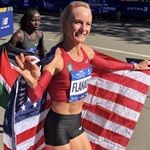
However, I have felt my North Star shifting, my passion and purpose is no longer about MY running; it's more and more about those around me. All I’ve ever known, in my approach to anything, is going ALL IN.
So I’m carrying this to coaching. I want to be consumed with serving others the way I have been consumed with being the best athlete I can be.
I am privileged to announce I am now a professional coach of the Nike Bowerman Track Club. This amazing opportunity in front of me, to give back to the sport, that gave me so much, is not lost on me. I’ve pinched myself numerous times to make sure this is real. I am well aware that retirement for professional athletes can be an extremely hard transition. I am lucky, as I know already, that coaching will bring me as much joy and heartache that my own running career gave me.
I believe we are meant to inspire one another, we are meant to learn from one another. Sharing everything I’ve learned about and from running is what I’m meant to do now.I would like to thank: The 5 coaches who guided me throughout my career, Michael Whittlesey and Dennis Craddock (2004-2005), John Cook (2006-2008), Jerry Schumacher (2009-2019), and Pascal Dobert (2009-2019). Each man was instrumental in developing me into the best version of myself.
Jerry, Pascal and I will continue to work together in this next chapter and I couldn’t be more grateful.
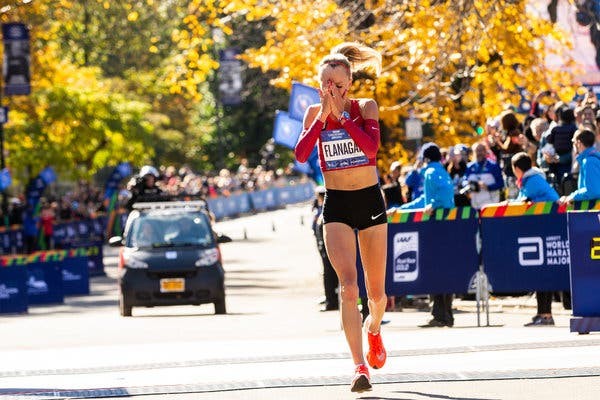
Jerry has been my life coach, running coach and now will mentor me towards my next goal of becoming a world-class coach myself. I’m thankful for his unending belief in me.
My family and husband who have traveled the world supporting my running and understanding the sacrifices I needed to make. Their unconditional love is what fueled my training.My longtime friend, Elyse Kopecky who taught me to love cooking and indulge in nourishing food. Run Fast. Eat Slow. has been a gift to my running and to the thousands of athletes.
My teammates, and all the women I've trained with, for pushing me daily, and the endless smiles and miles. They include: Erin Donahue, Shannon Rowbury, Kara Goucher, Lisa Uhl, Emily Infeld, Amy Cragg, Colleen Quigley, Courtney Frerichs, Shelby Houlihan, Betsy Saina, Marielle Hall, Gwen Jorgensen, Kate Grace.
My sponsor Nike for believing in me since 2004 and for continuing to support my new dream as a professional coach. I hope I made myself a better person by running. I hope I made those around me better. I hope I made my competition better. I hope I left the sport better because I was a part of it.
My personal motto through out my career has been to make decisions that leave me with “no regrets”.....but to be honest, I have one. I regret I can’t do it all over again.
by Shalane Flanagan
Login to leave a comment
TCS New York City Marathon
The first New York City Marathon, organized in 1970 by Fred Lebow and Vince Chiappetta, was held entirely in Central Park. Of 127 entrants, only 55 men finished; the sole female entrant dropped out due to illness. Winners were given inexpensive wristwatches and recycled baseball and bowling trophies. The entry fee was $1 and the total event budget...
more...Amy Cragg Puts Trust in Her Team, and now she’s back training for the 2019 Chicago Marathon after 18 months away from racing 26.2-miles
Cragg, 35, is a member of the Bowerman Track Club, based in Portland, Oregon, under the direction of coach Jerry Schumacher. And now she’s back training for the 2019 Chicago Marathon on October 13, after 18 months away from racing 26.2-miles. The last time was the 2018 Tokyo Marathon, where she placed third in 2:21:41, a personal best by more than five minutes, making her the fifth-fastest U.S. woman at the distance.
In the past year, the overriding goal, Cragg said, was doing whatever was best to ultimately make the 2020 Olympic team. The Olympic Trials are set for February 29 in Atlanta, where the top three finishers who have the Olympic qualifying standard will be named to the team. Cragg still needs to achieve the Olympic standard within the specified window—either by time (2:29:30) or by placing in the top 10 in Chicago. Those are her primary goals for the October race, but as her training tells her more about her fitness in the months ahead, she’ll likely target a few more ambitious secondary goals.
“In training and everything we’re going to protect that goal of the qualifying standard for the Olympics—that’s what we’re going there to do,” she said. “But at the same time if things go well, we’ll narrow the focus of what I want to achieve on race day.”
The Chicago Marathon may serve as a good preview for the February Trials, too. Jordan Hasay, the second-fastest U.S. woman in the marathon, is also planning to compete—her personal best of 2:20:57 was set at the 2017 Chicago Marathon, when she placed third. Hasay has indicated she’d like to set the American record in October, currently held by Deena Kastor in 2:19:36.
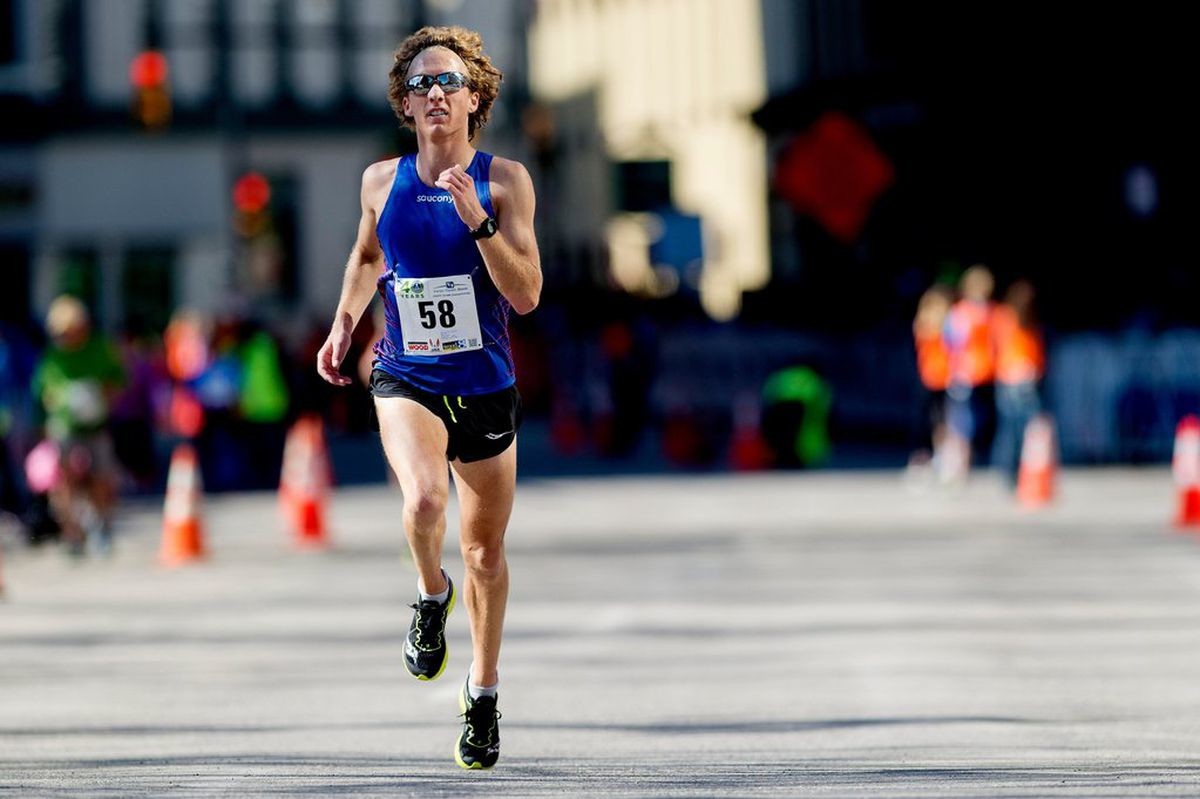
Although she was upset to not compete last year, not all was lost for Cragg after she withdrew from the marathon. She started focusing on shorter distances and was thrown into workouts with her teammates, all of whom are Olympians specializing in middle-distance events—and are rather good at them, too. Like Shelby Houlihan, American record holder in the 5,000 meters (14:34.45) and Colleen Quigley, national indoor mile champion.
“It was really hard. It’s a different stimulus than I’m used to,” Cragg said. “They’re the best in the world at what they do. There were a lot of tough moments, putting my head down and hanging on in practice.”
As a result, though, Cragg took third in the national road 5K championships in November and fifth at the U.S. cross-country championships in January. And she believes the focus on quicker cadence will help her in the marathon, too.

“It’s so important to go back to that faster stuff because your legs can almost go kind of dead after all that marathon training—if you’re just running 130 or 140 miles a week, day-in and day-out, all of a sudden those regular runs just naturally start slowing down,” she said. “You need to throw in that extra speed to keep the quality high. There will be five-minute miles thrown into a marathon—it’s not the speed that kills you, it’s the faster turnover.”
The Bowerman women’s group has plenty of members to keep things moving. In the past year, the group has added to its roster, including Karissa Schweizer, a six-time NCAA champion from the University of Missouri; Vanessa Fraser, a nine-time All American at Stanford University; and Elise Cranny, an 12-time All American at Stanford.
by Erin Strout
Login to leave a comment
Bank of America Chicago
Running the Bank of America Chicago Marathon is the pinnacle of achievement for elite athletes and everyday runners alike. On race day, runners from all 50 states and more than 100 countries will set out to accomplish a personal dream by reaching the finish line in Grant Park. The Bank of America Chicago Marathon is known for its flat and...
more...America’s Amy Cragg is set to race the Prague Half on Saturday
Success for reigning USA Olympic Trials Marathon champion Amy Cragg did not come easily or quickly. Indeed, the 35 year-old Nike Bowerman Track Club athlete nearly quit the sport before her true talent really showed through, eventually carrying her to Olympic Trials wins in both 2012 (at 10,000m) and 2016 (marathon), four USA titles, and a 2:21:42 marathon personal best. It’s been a long, and sometimes bumpy, road.
“Definitely, I’ve made some mistakes along the way,” Cragg told Race Results Weekly in a telephone interview from Prague where she’ll be running the Sportisimo Prague International Half-Marathon on Saturday. “I’ve learned from them and that’s kind of led me to here. So, every once in a while I’ve looked back and I’m, like, I should have done this differently or this differently. But, the reality is that I might not have ended up here. I think I’m in a really good place.”
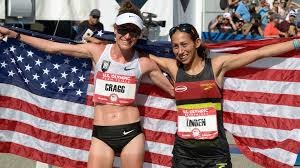
Working with coaches Jerry Schumacher and Pascal Dobert and Bowerman teammate Shalane Flanagan since the end of 2015, Cragg has blossomed into one of America’s best at 26.2 miles. After winning the February, 2016, Marathon Trials on a brutally hot day in Los Angeles, she went on to finish ninth in the Olympic Games Marathon in Rio.
She backed up that performance a year later with a thrilling, late-race charge at the 2017 IAAF World Championships marathon in London, taking the bronze medal (the first medal for a USA woman at those championships in the marathon since 1983), and only missing the silver by a fraction of a second.
She recovered from her London race well, then ran the Tokyo Marathon in February, 2018, finishing third in an excellent 2:21:42. That performance made her the fifth-fastest American of all time behind only Deena Kastor, Jordan Hasay, Flanagan and Joan Samuelson.
"I love where I’m at,” Cragg continued. “I love my team and my coach. Just living in Oregon, that’s been incredible. I think overall, those rough moments, those times when I considered stopping have made me a stronger athlete. I’m glad I went through that. It’s hard to say that. Those times, I think I really learned a lot from them.”
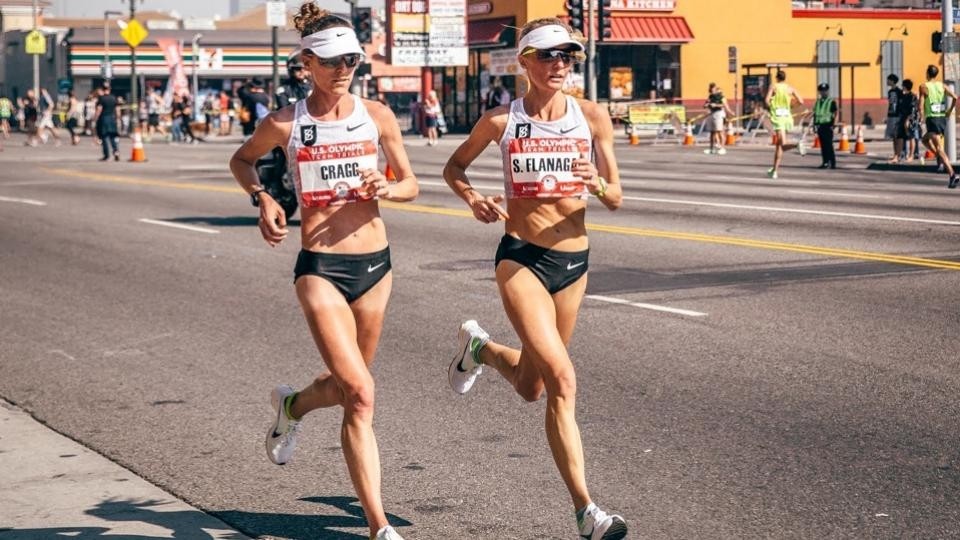
Cragg is at an unusual juncture in her career. She hasn’t run a marathon in over a year. She built-up for Chicago last October, but ended up withdrawing from the race after she and her coaches felt that her training hadn’t brought her to the fitness she would need to run her best. They had intense discussions, she said, about what to do next.
“When I pulled out of Chicago last year the big talk was, OK, what do we really want to get out of the next two years?” Cragg said. “I’ll probably be in the sport two years and reassess. The big thing is making another Olympic team and trying to perform well in Tokyo. Everything we do from here on out, that’s the goal to make that team and we’ve been working back from there.”
Cragg decided not to do a spring marathon this year. Instead, she worked with her Bowerman teammates Shelby Houlihan, Marielle Hall, Courtney Frerichs, and Karissa Schweizer to get ready for the USATF Cross Country Championships last February where she finished fifth in her first national cross country championships in nine years.
A month later she ran the special Road to Gold test event in Atlanta where she was able to run on the 2020 Olympic Trials course. Uncontested, she covered the 8-mile route in 43:23 and won by a minute. She told Race Results Weekly that the Atlanta race was essentially the kick-off of her Trials training.
“I felt pretty good,” Cragg said. “I think I’m in a good position and I’m pretty excited to get into the bigger miles. For me, that makes a huge difference. I feel ready to start that, which is exciting for me.”
Saturday’s race in Prague is the next logical step on Cragg’s long journey to Atlanta next February for the marathon trials and Tokyo for the Olympics next August. On Prague’s flat, record-eligible course Cragg wants to race hard with the goal of improving herself as a marathoner.
by David Monti
Login to leave a comment
Prague Half Marathon
Start the RunCzech season with one of the biggest running events in the Central Europe! Every year the Sportisimo Prague Half Marathon excites spectators with performances of elite athletes breaking records. Enjoy a course with incomparable scenery in the heart of historic Prague that follows along the Vltava river and crisscrosses five beautiful bridges. Take in majestic views of the...
more...Jerry Schumacher Named Coach of the Year by USATF
Login to leave a comment


